






We live in an age where anyone can be a streamer.
The second generation of AG series offers a lineup of versatile streaming products designed to adapt to the ever-expanding streaming landscape.
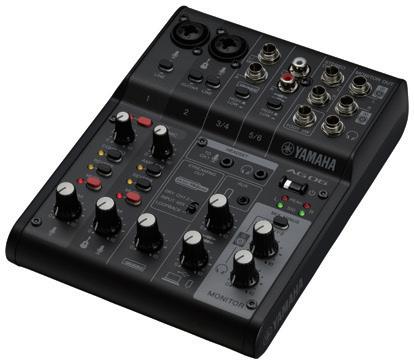
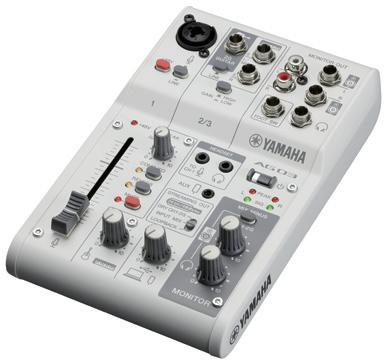



Connect to a new world of infinite possibilities with the AG series.



ZG series designed specifically for game voice chat and streaming also available.







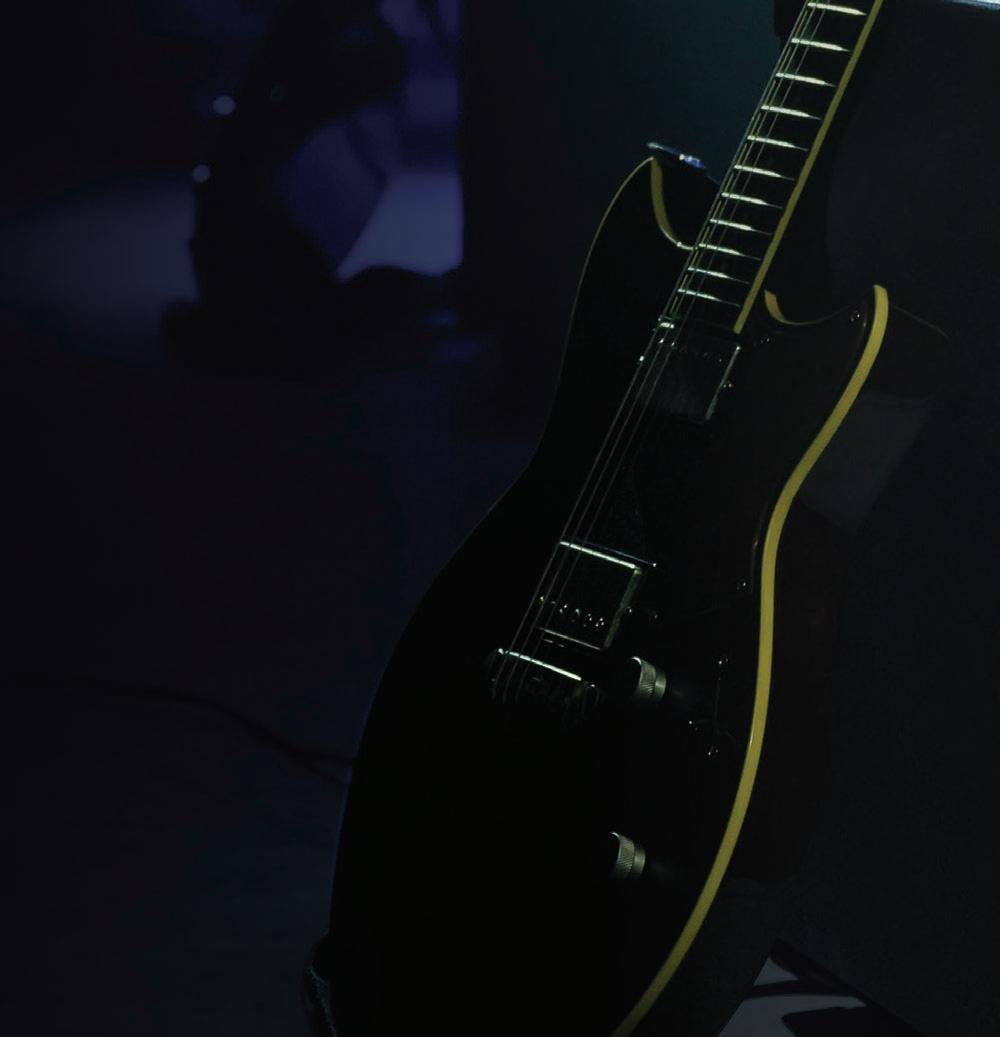




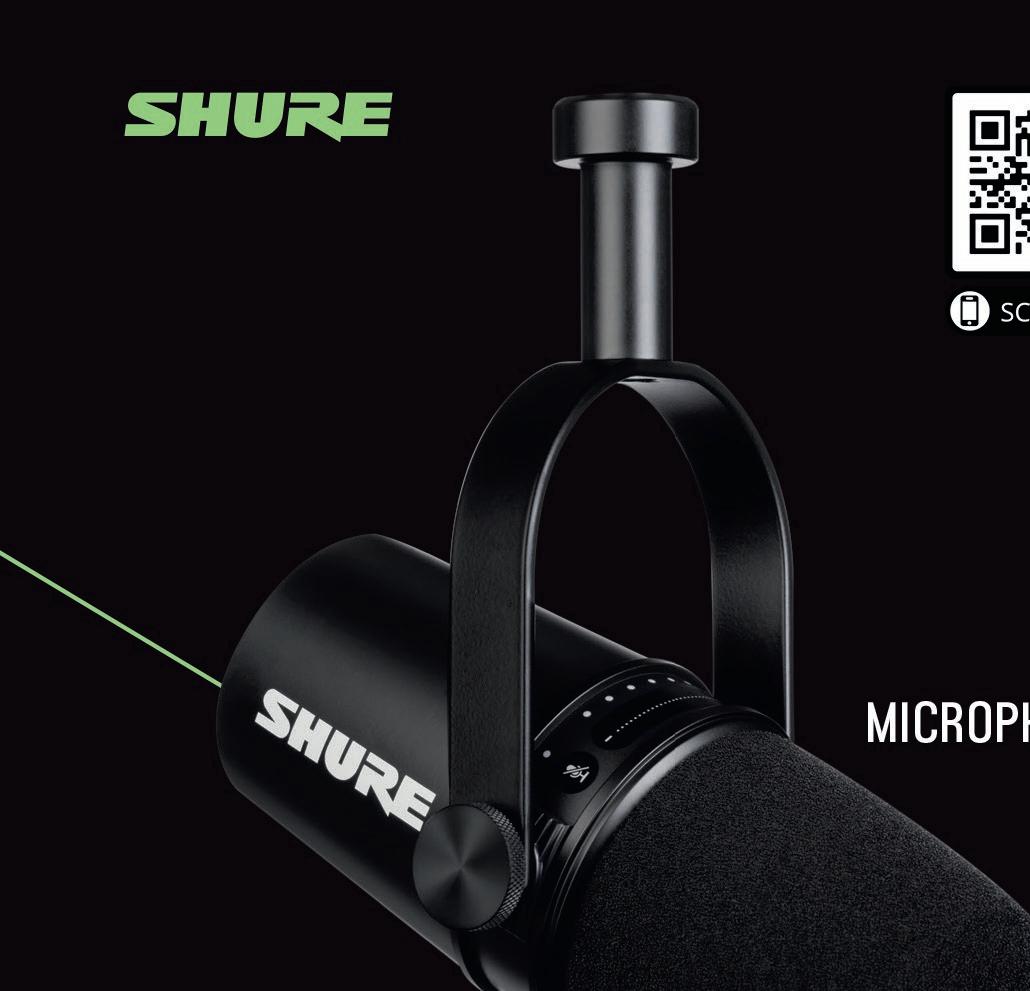


(03)



Paul
Eli Duxson eli@furstmedia.com.au

Lewis Noke
Paul
paul@furstmedia.com.au


PUBLISHING
Patrick
patrick@furstmedia.com.au
Al Belling, Andy Lloyd-Russell, Adrian Violi, Nick Brown, Sam McNiece, Liam Mcshane, Benjamin Lamb, Rob Gee, Eric Foreman, Peter Hodgson, Cambell Courtney, Pablo Francois, Will Brewster, James Callanan, Dan Nicholls, Adam Buttigieg, Harry Connell
Rob Furst



































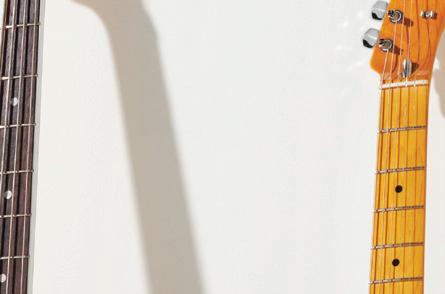


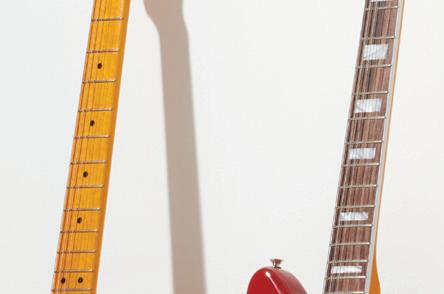


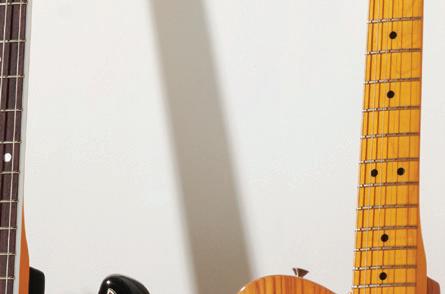










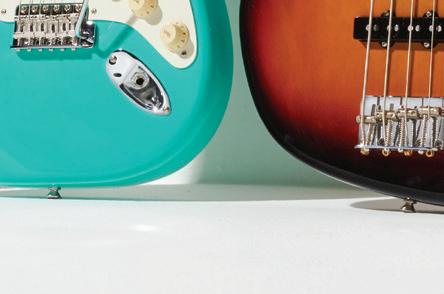





















Guitar virtuoso and one of the greatest British blues axemen of all time Matt Schofield is bringing his trio down under for an exclusive string of “unforgettable” club shows this November, and our mates at Gerrard Allman Events are giving you the chance to win one of five double passes! Don’t miss your chance to see Matt Schofield perform live for the first time in Australian venues. As an added bonus, the Matt Schofield Trio have a 20th Anniversary album in the works – with the Australian tour being the debut of the new material being performed live.





After that bit of assistance between gigs or sessions to keep your voice in tiptop shape? Thanks to our friends at Gsus4, you can get your hands on a bottle of Savvy Touch Rocket Fuel, a vocalist’s best friend in helping clear congestion in your nose and throat, creating a healthy respiratory system. Rocket Fuel is made from active manuka honey, menthol crystals, and eucalyptus oil to name a few, and three small drops has your head and chest feeling fresh and full of air. There’s also aloe vera to help any raspy or pushed singing and screams. A truly versatile necessity!
For your chance to win any of these prizes, head to our giveaways page at mixdownmag.com.au/giveaway and follow the instructions. *These giveaways are for Australian residents only and one entry per person. For full terms and conditions visit mixdownmag.com.au/terms-and-conditions






Martin has partnered with Shawn Mendes on the 000JR-10E – a custom signature model from the Grammy-nominated singer/ songwriter. The guitar is modelled after Mendes’ own go-to vintage Martin acoustic and was crafted with sustainability in mind, made from 100 per cent Forest Stewardship Council-certified tonewoods, and includes a gig bag made from recycled ocean plastic. Mendes chose to go for a scaled-down auditorium-style body, with a small 000 junior size and compact 14-fret design, ensuring comfort for players of all sizes and skill levels.



KOALA AUDIO | KOALAAUDIO.COM.AU

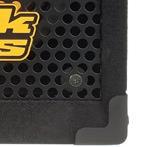


Artiphon unveiled the Orba 2 in May following the success of the original pocket-sized synthesiser, looper, MIDI, and MPE controller, and now, it is available in Australia through their distributor down under Koala Audio. Orba 2 allows users to play any sound, wherever they like, with a redesigned sound engine being able to play sampled pianos, guitars, found sounds, and more. Furthermore with the propensity to sample, the Orba 2 app will allow you to record any sound from the real world and transform it into a playable musical instrument.



GEKKO SOUND | GEKKOSOUND.COM
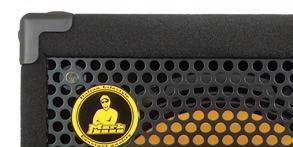
Gekko Sound’s CE.BASS is designed to give smooth compression with both serious bottom-end and crispy top-end. Internal switches allow you to change the compression ratio – affecting the compressor ratio alone, giving punchy attack and natural sustain from your bass guitar. Treble controls provide more boost than cut, which results in a clean and crispy high-end advancement, and when wound down, the bass control works like a shelving curve, while the level control allows for adjustment of the unity gain between the EQ and the true bypass switch.

LINK AUDIO | LINKAUDIO.COM.AU
PreSonus has announced the global launch of Studio One 6, the latest version of one of the best-selling DAWs in the world, and the first major update since the company was acquired by Fender in 2021. Featuring industry-leading innovations, mixing improvements, new plugins, and the most advanced user interface customisation available, Version 6 makes audio content creation fast and easy, with everything you need to produce, record, mix, and master right at your fingertips. Studio One 6 is available for purchase with a one-time licence, or as an annual or monthly subscription to PreSonus Sphere.
The arrival of Markbass’ flagship combo, the Mini CMD 121P, changed the bass amp market forever. Never have bassists been able to get such great tone and volume from such a light and portable amp. The Mini CMD 121P Version IV, has been upgraded to include the Little Mark IV Combo head, which features the new bi-band limiter, a mute switch, and the three-way switch that includes the options of flat, scooped, or FSW. Like its predecessor, the Mini CMD 121P IV can be further upgraded to a 2x12” 500W rig with the addition of a New York 121 cabinet.
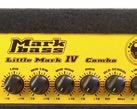




PRS Guitars has entered the world of pedals, with three all-new stompboxes; a transparent overdrive, optical compressor, and dual flanger. The PRS Horsemeat transparent overdrive is a from-scratch circuit designed to enhance guitar tone without colouring it, giving throatiness without sounding nasally or too high-pitched. The PRS Mary Cries optical compressor can boost and even out clean tone, add sustain to leads, and push guitar tone without sacrificing clarity or definition. The PRS Wind Through the Trees dual flanger is best described as two flangers fighting with each other.


Portable mixers, recorders, and more on the way! CEntrance has been powering and providing some of the best audio gear over the last two decades, and they’ll now be distributed in Australia by Koala Audio. The first bits of gear to land on Aussie shores will be the MixerFace, PortCaster, and DACPort Pro. MixerFace is a four-input mixer and recorder with streaming capabilities. The PortCaster boasts similar capabilities to the Mixerface, but instead of being optimised for music, it’s optimised for voice and targeted more towards podcasters. Meanwhile, the DACport Pro gives your laptop a pair of XLR outputs.
NU-X has a wide range of products to satisfy any muso, and their latest line of amps and digital drum kits typify that. The NU-X Stageman II is a battery-powered acoustic guitar amp with digital FX for performing anywhere. The NU-X Mighty Air is a wireless stereo modelling guitar and bass amplifier with Bluetooth connectivity and a dedicated app to enhance your tone from mobile devices. The NU-X Mighty Bass 50-BT is a versatile bass amp for practice, rehearsing and recording. Meanwhile, their digital drum kit range is led by the eight-piece DM-210 and the nine-piece DM-7X, both with all-mesh heads.

GITLAB | GITLAB.COM
“What if you could reconstruct source audio from a selection of other MP3s/audio on your computer?” Aphex Twin has released a free, open-source “custom sample mashing” software called Samplebrain with Dave Griffiths. How it works is it chops samples up into a ‘brain’ of interconnected small sections called blocks which are connected into a network by similarity. It processes a target sample, chopping it up into blocks in the same way, and tries to match each block with one in its brain to play in realtime. With a range of tweakable parameters, it can get slightly out of control!


Don’t get your wires crossed! The all-new Ernie Ball Instrument & Headphone Cable boasts ins and outs for headphones and instrument cables is the simplest all-in-one solution for musicians using headphones or in-ear monitors on stage or at home practising or recording to minimise the mess and stress. This unique cable solution features professional-grade construction inspired by pro audio multi-channel snakes for dependable performance, zero cross-talk, and easy-to-coil housing. Applications include in-ear monitor systems, recording interfaces, as well as digital amplifier and modelling platforms. It will retail for $199.



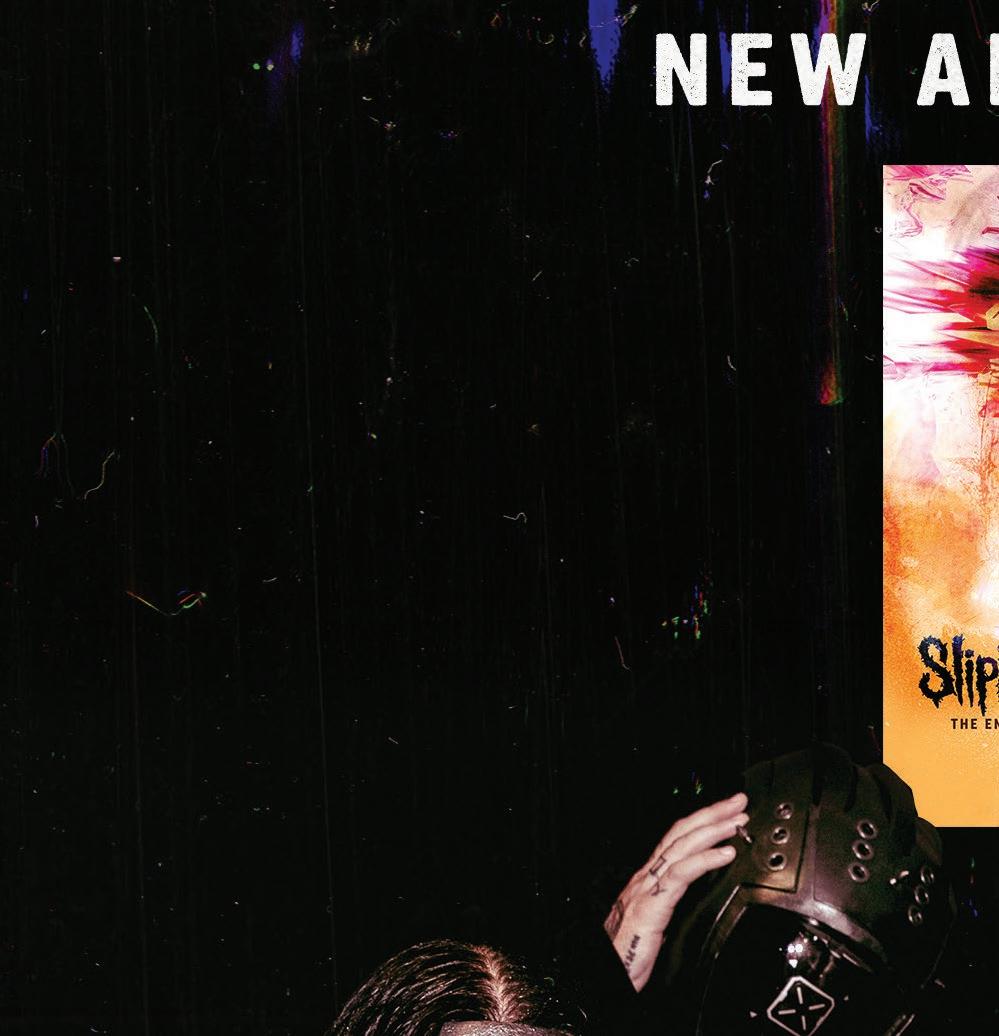





For the onlooker, Alessandro Venturella – known as ‘V Man’ – is still the “new” bassist of Slipknot.
But with a decade in the fold of the nine now under his belt, the staunch, tattooed Englishman has gone from mysterious live session member to an essential part of the band’s creative formula, with crucial additions to the band’s celebrated 2019 release We Are Not Your Kind and forthcoming LP The End, So Far.
“When you become part of something that’s been a solid unit for such a long time, it can be pretty intimidating,” he says, speaking from his home in London where he was enjoying some merciful downtime before the beginning of another album cycle.
“Only a couple of the guys knew me at first, it was a whole different dynamic to playing in a band with your friends. However, after a couple years (that’s how long it took) of people seeing my work ethic and how I practised the parts, the guys realised that I wasn’t just here to rest on my laurels.”
V-Man’s induction to Slipknot is a modern parable on the importance of networking and being at the right place at the right time, while being prepared for any opportunity that may present itself.

There were no audition adverts, no casting directors involved, and he wasn’t already playing with another act of note.
Rather, he was working as a guitar tech for Atlanta prog-metallers Mastodon – a job that enabled him to build relationships within the metal community, eventually bringing him to the attention of ‘Knot axe-man Jim Root.
With the band looking to reboot their touring lineup following the tragic death of original bassist Paul Gray and departure of the late Joey Jordison, Root asked Venturella if he knew of any bass players interested in a “project”.
Seizing the opportunity with both hands, he offered himself as tribute, despite his background as a guitarist as opposed to a bassist.
“I came back from a tour with Mastodon and got a call from Jim, and I thought, ‘Thank fuck I’ve still
been practising and haven’t just sacked (guitar) off’,” he says.
“I had quite a diverse musical background, I studied classical guitar and got a degree, I spent so much time of my life doing that. The music had stopped though at that point, and I had decided I really wanted to hone my craft as a tech.
“I had started learning how to solder, how to fix amps, I didn’t want to just be a tech that changed strings and sent broken gear back to Fender, I wanted to move into a place where I could troubleshoot and fix things on the fly.
“When you become part of something that’s been a solid unit for such a long time, it can be pretty intimidating.”
“However when that opportunity came up, there was no way I was going to turn down the chance to give it a shot.”
Having “spent hours learning how to use different muscle groups” to perfect the songs, V-Man passed his audition with flying colours, and has since become a staple member of the Slipknot fold, looming imposingly over bandmates while providing an anchor among the chaos of their live show.


Unlike other new additions to legacy acts however, Venturella has since made his mark sonically across the band’s recent discography – more so than ever on their new experimental opus The End, So Far
Having worked on the melodies and harmonies on We Are Not You Kind, Venturella brought full songs into the sessions for the new record, resulting in some of the band’s most unique work to date – heard especially on the Beatlesesque piano-led opener ‘Adderall’.
“(That song) got turned on its head from something completely different, it came out of nowhere,” he says.
“I was thinking about older music, other styles I’m into and was keen to see how far I could take it sonically.
“Having Mike (Mike Pfaff aka Tortilla Man) in the band too, he’s an insane pianist so we’ve been able to suggest a whole heap of ideas to him, and he’s able to turn it around almost right away, which has been really valuable for us.”
Having been entrusted with the keys for the band’s future sound, Venturella saw it as his duty to not just write riffs, but present complete bodies of work to his bandmates.
“Everything I do at home has programmed drums, bass, and guitar, but I need to make a full structure before I share it with the guys, if I just share the one riff that doesn’t really scream ‘inspiring’ at all,” he states.
“Things like ‘Neo Forte’ from the last record –that’s an example of an idea I had that I then turned into a song. When I work at home I want to present the product to the guys as a piece, not a riff.”
Now relishing in his role as performer and composer in metal’s modern tour-de-force, Venturella said he enjoyed seeing a culture of excellence seep back into the music industry.
“With the internet now, you have so much access to artists when they’re at home, how they record, what they’re doing,” he says. That dedication to music is coming back again, and people are really woodshedding and trying to be the best they can, which is great.
“It’s more in your interest to have someone that’s fully dedicated to being better, it’s like having a new tool, and you want to be able to use it to your advantage.
“Whenever I see new members coming into bands it’s never, ‘Oh, he looks cool’ – being the cool guy can only last so long, especially in a business setting like this.”
Despite his mature outlook, Venturella still has a few scores to settle with certain compatriot bassists.
“In the studio I was thinking, ‘I’ve gotta beat Tool for tone’,” he laughs, adding that the prog titans’ bassist Justin Chancellor would drop in on the recording sessions for The End, So Far to lend gear.
 BY AL BELLING
BY AL BELLING
want to present the product to the guys as a piece, not a riff.”

I’m Timi Temple – a Sydney-born Artist & MD who absolutely loves the guitar and loves the colour blue!
I started playing music at the tender age of four, learning violin and piano (thx mum & dad) – all it took was one gig/performance and I was hooked and knew music, (and the limelight haha) was for me forever.
I’ve been writing original music since my high school garage band days and have had my fair share of original projects since then, however, I’ve found my final form and have been releasing music as Timi Temple since 2017!
My current sound is a mish-mash of indie rock/pop and singersongwriter and I generally perform on guitar and violin. I’m currently in a really exciting explorative phase where I’m trying to incorporate the ol’ fiddle into this indie rock sphere, but I’ve been running it through a whole bunch of guitar FX to mask its folky timbre. It’s been a blast to show friends and have them ask me: “What the hell is making that sound??”
In terms of my influences I listen to a bunch of new music and have fallen in love with so many artists listing them all would take forever, so instead I’ll name a couple I’ve seen live recently because seeing a band in person always does so much more for me than listening on my headphones! I saw Dayglow play recently and he’s phenomenally fun and did
such a sick job of recreating his sound live, and seeing Holly Humberstone play solo surrounded by instruments was super intimate and both simultaneously broke & made my heart. Honourable mentions go to Pang by Caroline Polachek, that’s always on repeat, and Diorama by Silverchair that I’ll always carry in my back pocket.
As a session guitarist & MD, I’m lucky enough to work with a ridiculously large pool of artists personally, and naturally some of their individual special sauce rubs off on me as inspiration for my own music. I’m currently on tour in the US with Cosmos Midnight and sitting in on their sessions has given me new ideas for production and subtle sonic layers! I’ll be joining Grent Perez soon for his UK/EU/US/CAN tour and he’s a young master lyricist, so I’m certain we’ll brainstorm some cool ideas together.

When I’m at home, I’ve got a nice little bedroom studio I work out of with all my favourite guitars, synths, and mics at hand. But this past six months I’ve been on tour
and I’m either going super ad hoc with just a MacBook Pro, UAD twin, and some headphones, or hiring a studio in whatever town to get some final vocal takes down.
Gear wise I’m usually running a UAD Apollo 8p (I’m such a mega fan of their plugins and the onboard DSP is always saving my lappy), and to record I’ve got a collection of RØDE mics, using primarily the Classic II and NT5, and a Sennheiser MD441 that I got mainly for looks but have also fallen in love with haha.
I’ve got a growing collection of guitars in my studio, and I make sure they’re all getting played so every couple of weeks I’ll swap the rotation on the guitar rack (guitars in cases don’t get played).
I’m in love with anything “lawsuit era” from Ibanez so I’ve got copies of Rickenbackers, 335s, SGs, and LPs from this pocket of time in the ‘70s. But for single coil guitars I’m blessed to have a matching Tele and Strat set that were custom made for me by a friend almost 10 years ago (sadly they’re no longer making guitars).
As for synths, I love anything Korg and have the MS-20, monologue and minilogue, and I’ve got a Juno 106 and Yamaha DX7 that sometimes see a bit of action.
Probably the most special thing about my setup is that the
collection is big. This is because I’m a hoarder and can never part ways with an instrument or piece of gear. I’ve sold a guitar once in my life and have never quite recovered from the heartbreak and thus have vowed to never sell again haha.
I feel like I don’t buy anything new until I’ve absolutely learnt the inside and outs of what I’ve already got, so the new gear tends to have a big influence on my songs of that time because I’m always trying to incorporate it into every track. This may also be a way of justifying the purchase to myself haha.
Not all of it is top-end either, when I was just getting into guitar, my aunty bought me this little battery-operated “pig-nose” guitar amplifier to practise in my room with and I love using it for that ‘radio EQ’d’ sound instead of just recording a big amp and cutting the lows and highs in post!
There are dream pieces of gear though and at the top of my list is an Ampex ATR-102 (with a tape machine mechanic permanently on hand to fix it haha) Why?
Everything sounds better through tape in my opinion.
In terms of DAWs, I absolutely love Ableton Live 11 and have been using Ableton since version 8. I know it like the back of my hand and I think that with anyone’s

preference for a DAW, it all comes down to how fast and productive you are within it. Specifically because most of the shows I do have playback implementations, so using Ableton to write and perform with is the most harmonious experience.

I record guitar into Ableton in pretty much every way you can imagine! I’ve mic’d up my amps – an ‘80s Roland Bolt 60 paired with MD441 and SM57 as my current go to – I’m often using a Helix when I can’t record loudly, and when I’m on the road and don’t have access to either of my creature comforts, a DI straight into a Apollo twin with the Fender Amp plugin does just fine. Actually, I’ve even recorded an acoustic guitar with my iPhone mic and just dropped it in and the recording made the final cut haha.
Creative processing usually happens on guitar pedals, and within the box I do mainly compression and EQ to tame it all back and make it fit the mix.
As for preferences in my guitars, I’ve got a pickup maker in Sydney called ‘Sliders’ and I love them so much for all single coil pickups (they’re in all my Teles and Strats) but for my humbucker guitars I mainly stick with the original ‘70s & ‘80s pups. I really love the flying fingers pups in my ‘70s Japanese Ibanez’s.

As for tonewoods, I mainly use rosewood fretboards and have a combo of swamp ash and alder-bodied guitars that are all strung up with Elixir 10-46s (I’m a sucker for leaving strings on too long).
For monitoring, I’ve got a pair of Adam AX7s that I use when I’m writing and jamming out new ideas but my room isn’t really treated properly so when it comes to the mixing stage of my music I tend to rely on my beyerdynamic 990s to hear everything properly. I kind of believe that once you learn the sound of a set of cans you can mix on almost any pair, so my best advice is to buy any studio set and just listen to as much music through them as possible so your ears can get accustomed to what ‘finished’ songs should sound like and aim for that.
At the front end, I’m a Universal Audio guy through and through and love their emulations of the Neve 1073 which is my go-to preamp for pretty much anything mic’d. I’ve mucked around with their SSL channel strip but found I prefer putting it on the group buss inside Ableton to glue things together.
The length of my sessions always depends on the inspiration or flow state of the day, if I’m really loving an idea or song, I’ve been known to pull all day and all nighters to keep chasing that feeling, often cancelling other plans that I might have for the day in favour of it. On the contrary, I don’t really like forcing an idea so if I’m not feeling it I usually set it down to come back and look at it another time.
As for starting sessions, I just wake up and sit in my studio each morning and play songs or jam until something inspirational hits (or doesn’t), sometimes just hitting record before you even know what you’re doing can produce some stunning ideas.
I’m the worst at knowing when a song is finished because I just love to tinker and tinker. I think when other people I show can’t tell the difference between version 10 and version 20 of the song, it’s probably time to say it’s done haha.
Soothe 2 probably gets the most use in an average mixing session, it is a godsend for getting rid of harsh frequency buildups, it’s on most of my groups and busses.
And because I like to produce into my master chain, I’ve almost always got the ATR102 running with a Fairchild 670 Comp and Brainworx bx_digital v3 for metering and stereo width finessing.
1176 and LA2A on almost anything mic’d are my go-to compressors – I like to tame my recordings because I usually play (and sing) dynamically.
Soundtoys EchoBoy gets rinsed for my delays if I’m running in the box, but often I like to send things through my Strymon TimeLine pedal so I can get my hands on and turn knobs while being creative.
My go-to reverb is the EMT 140 plate from UAD or the Ocean Ways Studio plugin for making things sound more ‘roomy’.
EQ Eight stock inside Ableton is an EQ I can’t live without and it’s literally the first thing on all my tracks! I’ve used fancier EQ’s from FabFilter and others but always find my hand searching for the old faithful EQ Eight.
I was asked once: If you could only use one type of effect for the rest of your life, what would it be and why? This is probably the hardest question I’ve been asked musically haha, I’m going to have to go with reverb because things just sound so stark without it and you can kinda cheat the other effects with fun recording techniques or manipulation.
For live translation, I think having a solid knowledge of the sonic characteristics of every instrument through mixing has improved my live sound and I’m always consciously making sure instruments aren’t stepping on the frequency toes of each other, mainly, getting the guitars and synths out of the way of the vocals and making sure the kick and bass are working nicely together.
From a musical standpoint, this year will wrap up as one of the busiest years touring I’ve ever had. I think in total I’ll have been on tour for nine months of the year – and trying to write a collection of songs (and album maybe?) has been equal parts fun and tricky – but I’m looking forward to having a break from touring early next year to tie the bow on these songs and have a heavy release schedule next year!
My final advice? Don’t stop the fun. Ever. I think we all got into making and playing music because we found it fun and I never want anyone to lose that.

This writer has lost track of the amount of times people have slid into his DMs with videos of Matt Schofield along with a comment
the lines of, ‘Holy crap! Have you seen this guy?’
Schofield is one of those players who seem to have a near supernatural connection with their instrument – that indefinable thing where it feels like the guitar and its player are one and the same.
And although he’s visited Australia before, his forthcoming tour will be the first proper opportunity for a wider audience to experience his particular brand of rocked-up blues.
“Yes, I’m visiting properly this time,” Schofield says over an afternoon Zoom call. “We came for one gig and that was the extent of my Australian touring experience so far. We came all the way for one gig! But now we’ll actually get to spend some time and hit some spots this time. So I’m very happy about that.”
It’ll be a chance for all of us to see the Manchester native with his trio for real, how it’s meant to be, instead of on YouTube. “I’m not a content creator,” he says. “And although there are all these videos online, I don’t even do it really. It’s become its own monster with YouTube and Instagram clips, because for years I’ve been like, ‘I hate it. I don’t don’t want you to film me,’ and now it’s taken on a life of its own and I’ve just gone, ‘Okay.’
“It’s been a weird one navigating the way the music industry’s gone for somebody like me, you know?
So I’m a very reluctant content creator: I just play gigs and people film them.”
Schofield acknowledges that the realisation you’re being filmed can alter the energy of a performance.
“I’ve had many rants about this: it does change the gig, you know?
As soon as you start recording or filming a gig, you’re actually changing how it works. But at this point I’ve kind of gone full circle with it and it’s like, apparently everybody likes all the stuff that I hate! But you can’t put the toothpaste back in the tube.”
While Schofield’s playing is in the spirit of the blues greats, he sounds like nobody but himself, as he turns in fiery jazz lines interspersed among heartfelt blues-rock phrasing.
“It’s informed by heroes, isn’t it?
When I was coming of age in the late ’80s and early ’90s, it was a Strat world, you know? And Eric Clapton was doing the blues nights at the Royal Albert Hall, so we had Buddy Guy, Robert Cray, Jimmie Vaughan, and Eric all playing Strats. And of course I was inspired by Stevie Ray Vaughan too. So I was very much informed by the late ’80s blues-boom Strat era. And I shied away from it for a bit because when you’re a teenager, everybody’s like, ‘Oh, you just wanna be Stevie Ray?’
Well, I love Stevie, but no, I don’t wanna be Stevie.”
But rather than pick up a different guitar just for the sake of it, Schofield persevered with the Strat
because that was the guitar style he felt the most comfortable on. “ I love Gibson ES-335s – BB King was my first hero – but when I play that, I don’t hear as much of me coming through as with the Strat. And yes, there is a bit of a fight in a Strat. You’ve gotta work on it, and you’ve gotta put something into it to get something out of it. And that’s been my thing. You’ve gotta play it loud!”
Since 2005 that volume has typically been achieved via Two Rock amplifiers, including a signature model which was released in 2012. Having said that, Schofield’s current rig is based around not his signature model but a newer Two Rock benefitting from refinements put in place since the company changed hands a few years ago.


“Now they’re even better! One of my best friends Eli Lester bought the company about five or six years ago, and Max Skinner who’s always been with them is another very dear friend of mine. So it’s like my best friends run the company, so we work together. So now actually I also use the Classic Reverb now, which is one of their
more recent models, which kind of even surpassed my signature model, which was my previous favourite.”
As for guitars, Schofield’s main whip is the SVL 61, a guitar based heavily on his own ’61 Strat but augmented with Callahan hardware and custom-wound SVL pickups and a slightly more modern feel without betraying its vintage-inspired values. “I have my SVL guitars which my friend of 30 years, Simon Law, makes in the UK.
Then there’s my Mad Professor overdrive pedal that we worked on together, the Supreme. It’s a signature overdrive with two stages, and that goes into the Two Rock and I’m ready to go. I’m trying to kind of keep it as simple as possible these days and just to think about playing rather than gear… although there’s always something!”
BY PETER HODGSON







It’s an omnipresence, a symbol of prestige, and in terms of day-today practicality, is still the yardstick to which all other mixing consoles/ preamps/channel strips are measured, even some 60+ years since the company’s inception.
To put it simply, the Neve brand has become studio shorthand for quality and excellence in the field. It’s phonetically imprinted into the very foundations of everything we know about professional studio both past and present, becoming one of the most defining sonic signatures in recorded music history.
Traditionally, when we think of Neve we generally think of full-scale, large-format consoles and recording solutions for the top end of town, but the legendary brand has actually proven themselves to be surprisingly nimble in recent times, having spent the last couple of decades expanding into the world of standalone rack units and small footprint options, all with versatility and scalability front of mind.
Up until this point, the lion’s share of these smaller Neve offerings had come in the form of isolated circuits lifted from the brand’s famous large-scale consoles –standalone preamps, EQs, and compressors for those of us
who might not have the space or budget for a fully fledged 32-channel Neve console. The new 88M on the other hand, is something different entirely – a professional-grade, small-footprint recording interface with the modern recording climate in mind.
Based on first looks, it’s more than worth getting excited about.
Given the recent successes of other prestige studio manufacturers in the prosumer interface market (like UA’s Apollo series and SSL’s 2 and 2+), many of us were waiting with baited breath to see if arguably the producer of the greatest front end in recorded history would pair its peerless preamps with some high-powered digital converters and launch into the interface market, boots and all.
Happy to say, that day has arrived.
Using the same state-of-theart marinair preamps as Neve’s flagship 88RS console, the 88M is a premium two-channel audio interface with the option of eight additional digital inputs via ADAT optical connection, in turn allowing for 10 channels of simultaneous audio, making it ideal for both standalone use or for integrating into a more complex recording chain.

Connected via USB 3.0, the output/monitoring path of the 88M offers a bevy of options for the budding engineer, with plenty of versatility on offer. With two analogue monitor sends and eight additional digital outputs (again via ADAT), the 88M is a natural for expandable monitoring situations or for providing additional performer cue sends and connecting to different outboard gear down the line. You can monitor either from your DAW or totally latency free, ideal for switching between recording on the fly or mixing.
The unassuming controls put everything within reach, and the independent headphone controls and monitor pot allow you to finely tune what you’re hearing back after recording through those classic-sounding preamps. While the various masterstrokes in routing and signal flow are sure to get the more experienced engineers among us listening and enthused, for many it’s the affordability and ease of acquiring those two premium Neve preamps that is sure to take centre stage in the eyes of budding engineers worldwide.
Indeed, it is the quality and character of these preamps that has informed so much of the legendary ‘Neve’ sound and it’s the presence of these premium, analogue circuits within the
context of a prosumer interface that makes the 88M such a revelation. It really is the meeting of two worlds.
Born in the UK in 1926, the late Rupert Neve began his audio journey moving around between radio repair jobs before finding his way into public address and TV systems, garnering an intimate understanding of producing the highest quality recordings possible with the relatively primitive equipment afforded to him at the time.
His experience in live situations with radio interference, cross talk, and distortion helped inform his early designs, before eventually founding Neve Electronics in 1961.
While Neve designed his circuits and equipment to be as hi-fidelity as possible, it was his uncanny knack for producing clear but characterful audio, a bi-product of the transformer and transistorbased circuits employed in his designs which made for the lethal combination of rich harmonics, clean gain, and isolated signals, even with channels sprawling across a console that would make his consoles such a hot commodity throughout the golden age of professional studio.
The Marinair specification in particular, a transformer-based preamp design drafted by Neve and laid out in the original


• 2x Analogue Preamp Inputs (Mic/Line/DI)
• 2x Balanced Analogue Monitor TRS Line Outputs
• 1x Balanced TRS Headphone Output
• 8x ADAT Digital Inputs & 8x ADAT Digital Outputs via TOSLINK Connection
• Insert send and return loop
• USB 3.0 B -Type port for direct connection to Mac or PC
• Class Compliant – Core Audio/ASIO
• Headroom: +18dBu @ 1kHz (<0.5% THD+N)
• Distortion (THD+N): Typically 0.008% @ 1kHz (measured at +18dBu, 10Hz to 80kHz filter)
• General Noise: <-85dBu (A-wtg)
1964/1968/1969 designs, is the magic formula that helps to produce the trusted sonic characteristics that have come to define the Neve brand.
Often categorised as ‘fat’, ‘warm’, ‘rich’ and above all else ‘highly musical’, it is this harmonic richness and inherent character that makes Neve preamps so highly coveted. Compare this with the broad purpose, clinically transparent nature of the preamps found on your average over-the-counter interface and you begin to understand the appeal of the 88M. One is concerned with manipulating a less-than-ideal sound after the fact, the other is about getting the highest quality, most musical sound before conversion and working from there. You can probably imagine which one yields better results.
Suffice to say, that when the quality of the onboard analogue pre’s is as high as what we are dealing with here with the 88M, it only makes sense to pair it with equally quality digital conversion, which is precisely what the team at Neve have opted for with referencequality A/D conversion throughout the 88M’s signal path.
In terms of layout, the front panel features two premium Neve preamps with microphone, line, or DI options available via combo ¼”/XLR Neutrik jacks. LEDs signify that the signal coming in is optimum, and the preamps have independent 48V power for condensers, as well as toggling between listening back to a direct, mix, or DAW signal when monitoring. You can toggle between stereo and mono modes, and adjust volume via a big, red volume control on the front of the unit. The back features ADAT in and out, allowing for eight extra inputs or outputs, USB connections, and ¼” monitor outputs.


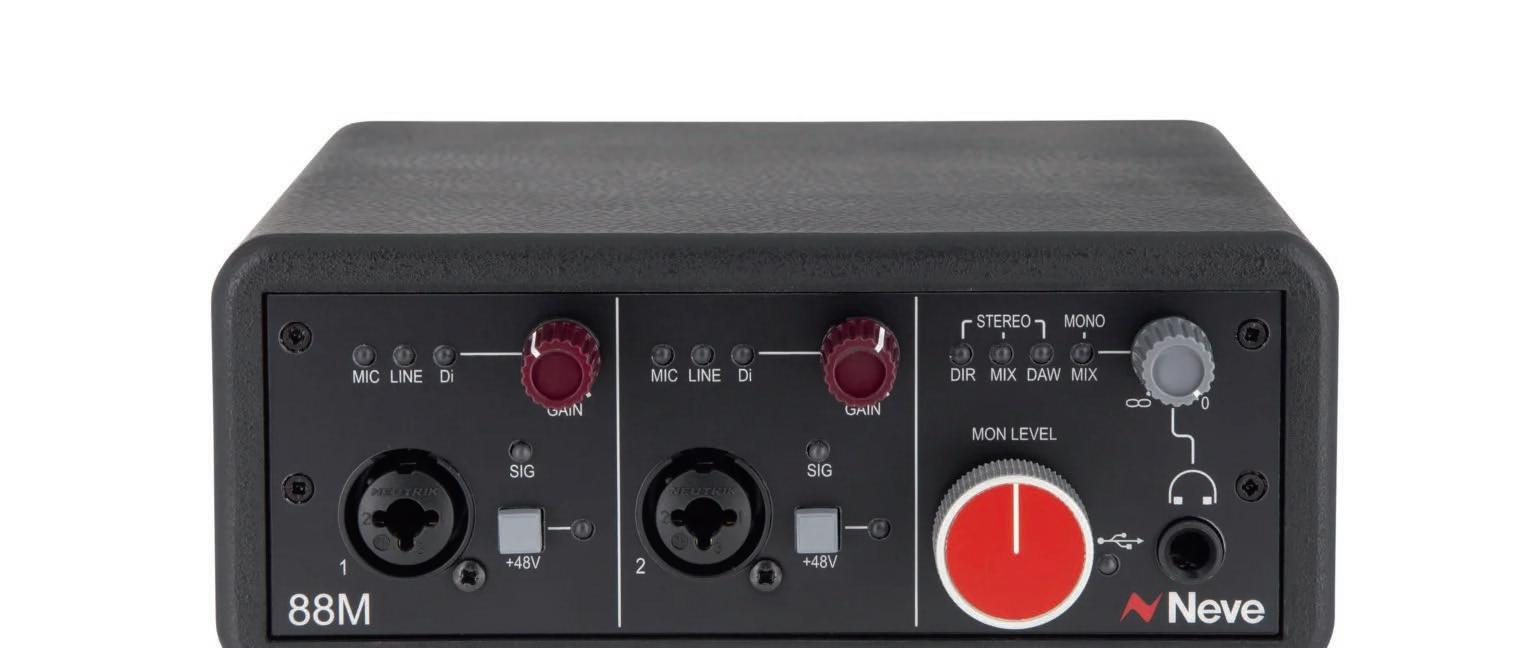
The unit itself weighs about 1.6kg and is about 20cm wide, so it’ll easily fit in a case or bag of a travelling professional or anyone recording remotely. It’s a small unit, but it’s a powerhouse in terms of expandability and with the ability to pair it with an ADAT breakout box or other ADAT adjacent outboard pre means
diminutive size would have you think.
that there is much more on offer than its diminutive size would have you think.
The chassis is road-ready, and while the aesthetic is truly classic Neve, it’s functional and multipurpose, with pots that toggle between circuits for clean recording, and Marinair transformers for your signal to pass through before the converters and to your DAW of choice via USB 3.0.
Another feature which helps the 88M stand out from the crowd, besides the obvious preamp quality, is the presence of insert send and returns for a truer channel-strip style functionality, something that is seldom seen in the broader interface market, but which belies a classic console workflow. Self-recording singers and acoustic guitar players especially, will no doubt rejoice in the ability to add compression or subtractive EQ on the way in, optimising their overdubs and layered parts prior to commitment.
If we are being honest, there aren’t many who wouldn’t benefit from a bit of Neve in their life, and the 88M now makes this possible for engineers of all walks.
With its forward-thinking approach to routing, high level of scalability, reference quality conversion, and of course, the presence of two of the finest preamps money can buy, the 88M is sure to set a precedent of where small scale interfaces are headed and the kind of quality we can come to expect in the space, moving forward.
Neve is a company steeped in a rich history of innovation, having been founded by one of the greatest audio minds of our time, complete with the lifetime achievement awards, interviews, and testimonies to prove it. The 88M takes these decades of innovation and refinement and distils them into one little unassuming box, a product focused on helping you make music, capture inspired performances, and hear it all back with a little harmonic push from whatever analogue magic they’ve got going on in there.
BY LEWIS NOKE EDWARDS• Frequency Response (Mic/Line/DI): +/- 0.1dB 20Hz – 20kHz (+/- 0.5dB 10Hz – 35kHz)
• Voltage: USB3
• Current <900mA
• Microphone input impedance (balanced): 1.5k Ohms
• Microphone dynamic range: >110dB
• Microphone input gain range: +21dB to 68dB
• Line input impedance (balanced): 20k Ohms
• Line input dynamic range: >111dB
• Line input gain range: -35 – +35dB
• DI input impedance (balanced): 900k Ohms
• DI input dynamic range >100dB
• DI input gain range: +13dB to +60dB
• Maximum output level : +18dBu
• Dynamic range: >113dB
SPECIFICATION: (150 OHM LOAD)
• Maximum output level : +10dBu
• Frequency Response: 20-20kHz +/- 0.3dB
• Distortion (THD +N): <0.007% @10dBu 1kHz
• Noise floor: -96dBA
• Width: 182mm (7.2 inches)
• Height: 76mm (3 inches)
• Depth: 203mm (8 inches)
• Weight: 1.675Kg (3.7Lbs)
As content creation, streaming, and podcasting are becoming ever more prevalent, the need for accessible media tools and equipment for creators arises.
The Shure MOTIV range of microphones aims to streamline the technical side of audio management with an array of USB and smartphone-compatible mics. The latest in the updated MOTIV line draws inspiration from legacy products in the Shure range, as well as improving upon previous MOTIV designs, and provides a simple-to-use app for extended tone control.

The power of the Shure MOTIV range comes from the accompanying application that is used to control the microphone’s parameters when powered over USB. All aspects of the signal are able to be dialled in and adjusted, and for those not as experienced in audio production and processing techniques, there are a range of presets to fit any situation. The app handles all signal processing, eliminating the need for an interface to handle the analog to digital signal conversion.
The app has two modes in which it operates, auto-level and manual. Auto-level is ideal for those who aren’t as knowledgeable about things like compression, EQ, and limiters and instead, the app breaks down the signal into small and easier-to-understand segments. Controllable parameters in the auto mode include preset selection, mic muting, mix/monitor balance of mic and computer audio, microphone position, three basic EQ presets, as well as automatic gain adjustment. The auto mode allows for quick ‘set and forget’ preparation which allows you to focus more on the content itself rather than fumbling around with technical settings.
The manual mode offers many of the same adjustable parameters, but gives the user more control over the setting and removes some of the automation. Gain is now manually adjusted, as well as compression and limiting. More options for EQ are also found in the manual mode, which include four presets (flat, highpass, mid boost, and highpass/mid boost). More control over adjustable parameters allows you to dial in a more specific tone to suit whatever situation comes up. The app is available as a free download on both desktop computers and smartphones.
New additions to the MOTIV line include the MV7, which takes its inspiration directly from the Shure SM7B, a legendary highend microphone that has been an industry standard in music, radio, and podcasting for over 20 years since its release in 2001. Although the gold standard for vocal capture, the SM7B is not the most accessible device for new and intermediate creators. The mic itself has a hefty asking price, as well as needing extra equipment such as interfaces and mixing desks to even get a signal. This is where the MV7 steps up to the plate.
The MV7 is the USB-powered little brother of the SM7B, offering a far more accessible microphone at half the price that doesn’t require a range of other equipment. The MV7 receives its power and sends its signal over USB, meaning that the microphone itself and the accompanying MOTIV app is all you need to get professionalsounding vocal recordings. The mic has a sturdy metal build, with
a headphone output and a couple of controllable parameters for quick and immediate adjustments. This includes mute, headphone gain, and mic gain, all of which are touch-controlled to eliminate sounds from internal moving parts within the mic itself.
The MV7X is the same microphone except it can only send signals over XLR, much like any other standard mic. The exceptional sound quality is still there, however parameter controls over the MOTIV app are not available, and the mic will require an audio interface to accept the signal and to power the mic. If the MOTIV app isn’t a necessity in your setup, then the MV7X is an excellent alternative at a reduced price. The MV7 is an excellent choice for musicians and content creators looking to get high quality, professional-sounding recordings without investing in an entire studio.
If the MV7 is for the home computer, then the MV88 is for the smartphone. The MV88+ video kit is a bundle aimed at smartphone users looking to record audio and video outside of the studio. The MV88 itself is a small condenser microphone designed to be used with a smartphone, for both power and signal capture. The video kit addition is a tripod with mounts for your phone as well as the mic, creating a high quality, very portable camera and field recorder.
The mic itself has three modes of functionality. Firstly is that it can be used as a shotgun mic, recording signals directly in front. This is great for capturing directly what the camera would be looking at, ideal for recording a single audio source, such as a speaker or a presentation. Secondly is the
bi-directional setting, capturing signals coming from the sides of the mic. This is perfect for situations such as interviews, where you need to capture two sources at one time in opposite directions. Thirdly is the field recording mode, which records through all sides in a cardioid pattern. Ideal for capturing rooms, field recording, and larger spaces. These polar patterns can be selected through the MOTIV app, as well as a range of other presets and parameters. There’s also a MOTIV video app for recording video, that offers all the same audio adjustments, as well as a video option so that your audio and video are conveniently in one place.
The MV88+ takes your smartphone and considerably improves audio quality to a professional standard. By allowing smartphone microphone technology to catch up to the advancements in picture quality, the MV88+ video kit turns any smartphone into a high-end, extremely portable and convenient professional video camera and field recorder.
BY CAMBELL COURTNEY











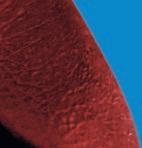
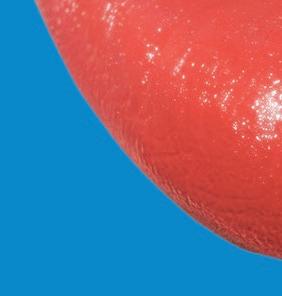




From humble (and by today’s standards primitive) beginnings, Pro Tools has grown through numerous iterations of itself, developing steadily into the colossally powerful DAW that it is today.
Pro Tools has found its home across a broad range of users, from music production novices right through to being the centrepiece of pretty much every major recording studio, broadcast, and post-production facility on the planet. This is not hyperbole either – simply do a quick Google search of the aforementioned, you’ll soon discover just how entrenched Pro Tools has become in both music production and broadcast. Pro tools is the software that keeps these industries in motion, and none of this has happened by accident or from shrewd marketing strategies. Rather, Pro Tools has evolved organically, with every new iteration and every major innovation integrating seamlessly within the broader Pro Tools architecture, it’s as much a workflow as it is a product.
The 1980s were an interesting time for music and digital technology, even more so when these two disparate worlds started merging together. This was a time when analogue tape still reigned supreme in music recording, broadcast, and film, while digital technology was still very much in its infancy, a mere protozoan compared to the fully fledged animal it is today.
Friends and UC Berkeley graduates Evan Brooks and Peter Gotcher got together under the brand name Digidesign, releasing Sound Designer in 1984 – a sample editing system for the popular Emulator II keyboard. Sound Designer could be used on the first Apple Macintosh computer, also released in 1984.
As the remainder of the ‘80s flew by and computer technology developed in leaps and bounds, so too did connectivity and hard disk space. It was from this newfound processing power that Digidesign created and released their first hardware and software package –Sound Tools in 1989. Needless to say it was a game changer.
Presented at the annual NAMM convention in 1989, Sound Tools was advertised as the “first tapeless studio”. The system’s Motorola 56001 processor allowed for 16-bit playback and recording sample rates of 44.1/48kHz through a two-channel A/D converter – mind blowing for the time.
The first fully developed Digidesign commercial release –Pro Tools II – merged the editor and mixer into one application and throughout the mid-‘90s (following the development of PCI versions Digidesigns Audiomedia, Sound Tools, and Pro Tools) could run on Windows for the first time.


TDM architecture and plugins were then created, featuring a whopping 48 tracks of recording and playback and this time also gave way for the development of third party plugins to be used on the system. Also during this time Avid acquired Digidesign, with both companies growing at an accelerated rate.
In 1998 Pro Tools 24 MIX was released, allowing for a much larger 72 track count. With the level of DSP power available, for the first time, really powerful amounts of processing and in-thebox mixing was made a reality.
Ricky Martin’s ‘Livin’ la Vida Loca’ released in 1999 and was the first Billboard Hot 100 number one hit to be fully recorded, edited, and mixed on Pro Tools, and the rest as they say is history.
With their software and hardware components evolving and integrating in parallel, Avid had created what we now know as the modern DAW workflow, allowing for colossal simultaneous track counts (made possible with Pro Tools HDX, released in 2011), at next to zero latency with remarkable detail, sampleaccurate precision, at incredibly high bit depths and sample rates. Things we very much take for granted now, particularly when performing simple recording, editing, and mixing tasks from a laptop at home.
Having made Pro Tools HD (otherwise known as Ultimate or most recently, Flex) native systems has allowed users to run Pro Tools HD without the need for Avid Pro Tools hardware. This has revolutionised the use of the fully fledged version of Pro Tools into the modern era, previously unavailable to those using non-Avid-based hardware. The standard version of Pro Tools (now dubbed Pro Tools Studio), as well as Pro Tools Artist and the free Pro Tools Intro have made this DAW available to all levels of music creators, engineers, and alike, without the hefty price tag and varying levels of slimmed-down features.
Something that Avid (and previously Digidesign) seemed to have gotten right from the get go (and continue to improve upon) is the ability to understand the workflow requirements of recording and mix engineers, both within the music and
broadcast industries respectively. The methodically engineered and logically laid out flow of running a Pro Tools session for either recording or mixing is still rather unmatched in its ability to categorise, organise, and lay out regions and clips for recording, editing, and mixing.
One thing the workflow of Pro Tools certainly has going for it is a mastery of shortcuts and key commands. I mean there’s a dedicated, colour-coded, character-filled keyboard for them for goodness sake! While this may sound dry on paper, it’s the manner in which these key commands integrate into the workflow that really makes them stand out. This combined with aforementioned playlist editing makes group and global-based editing insanely quick and easy. It’s also optimised for making sessionwide or instrument group-based changes which can be done with a few simple key strokes, without needing to even think about grabbing the mouse or trackball. Watching a Pro Tools wizard in deep editing mode is exciting to even the most discerning DAW nerds.
In the most recent iterations of Pro Tools, Avid has also pioneered collaborative and cloud-based workflows in the DAW space with the Avid Cloud, which allows remote mix collaboration and flying sessions from one engineer to the next a breeze. This, along with a host of new folder routing and timecode display features, is just a further example of the continued evolution of the industry-standard DAW for the modern engineer.
BY ANDY LLOYD-RUSSELLWhile we understand and hear how echoes happen in everyday life, we don’t always make the connection between the reverb plugin we might be throwing on a mix, the delay pedal we’re stomping on, and the rooms, spaces, and tape that inspired these modern recreations.
We throw around terms like ‘plate’, ‘spring’, and ‘hall’, and while a hall reverb is an easy enough idea to figure out, spring and plate aren’t so obvious. In addition to re-amping (for lack of a better word) mixes through rooms for ambience, the early pioneers of recorded music, as well as the music makers themselves, were limited in the space they could create in a mix after a recording was made.

They lacked the digital plugins that we can copy and paste across innumerable tracks, so analogue mechanisms that reverberated were invented to mimic space, time, and room sound. While some bigger studios had dedicated reverb chambers, reverberant rooms with speakers, and microphones for playback and recording a mix, some smaller studios resorted to plate and spring reverbs, both featuring transducer-based mechanics that vibrated either a big plate of metal or a spring respectively, giving these two unique sounds their names. Spring reverbs are brighter and bouncier than the dark, washy tones of a plate reverb, making springs a great addition to guitar amps, particularly early Fender amplifiers (some of which predate Fender guitars!)
Understanding the history behind spring reverbs helps us see why a company like Surfy Industries might dedicate so much to such a seemingly simple idea. The spring reverb sound rose to popularity (at least the super wet, springy tones) during the surf-rock sounds of the ’60s and ’70s, hence Surfy’s crafty name. Spring reverbs were traditionally mounted into the amplifier cabinets themselves, but it’s increasingly uncommon for amplifiers to feature actual springs. Where Surfy Industries comes in, is in their endeavour to bring real springs back into hands and amps of guitarists!
Surfy Industries began producing the SurfyBear, a reverb controller based on a legendary Fender unit, the 6G15, that was sold as an aftermarket additional effect for guitar players. Surfy Industries now produce the SurfyBear Classic, available in some familiar looking tolex or tweed finishes, as well as stompbox versions for those of you who might want to turn the reverb off from time to time (not me!).
Beginning with the SurfyBear Classic, we have an ‘always on’ style reverb unit available in blonde, black, or brown, with a tweed version available in very limited quantities. The SurfyBear is a mono effect unit, made up of entirely analogue components that give you control over tone, mixer, and dwell, which controls how much the sound reverberates, as opposed to the mixer knob that controls the ratio of wet/dry signal. The SurfyBear features 1⁄4” input and output, and while it doesn’t feature the same tubes as the original 6G15, it has JFET and MOSFET transistors and Class-A circuitry for a particularly tube-like sound, rich in harmonics.

Surfy Industries cater to studio and live use alike, with the SurfyBear Studio as your stereo spring solution, and the StereoMaker stompbox allowing players to split a mono signal into two separate signals, with in/out of phase or pseudo stereo sounds available.
Surfy Industries also offer the SurfyBear Metal, which is still a reasonable amount of pedalboard real estate, but with true bypass circuitry and the option to toggle this one on and off. It features similar controls to the Classic, but with added volume that allows you to boost a more clean signal on the way out or into your amp!
For those who love those Fender tones and have already selected a reverb to pair with, Surfy Industries also offer the SurfyTrem that recreates classic Fender tremolo from a few different eras, the Blossom Point V2 for Fender Showman devotees, and the SurfyTrem Deluxe that recreates Fender’s famous vibrato! If you’re after something different entirely, the SurfyVibe stompbox offers meticulously emulated Magnatone vibrato. Rounding out the stompbox range are the SurfyBear Reverb Compact, available in both Black, Surf Green, and Fiesta Red, which are real spring reverbs housed in a more practical and pedalboard friendly chassis.
Sonics aside, Surfy Industries produce some really cool-looking units. Their designs hark back to the golden age of guitar and amp production, and a time when guitars like the Jazzmaster and Jaguar were ignored by their target market and instead fell into the hands of surf-rock pioneers who wanted to produce an entirely new sound, but needed a unique tone to match.
The SurfyBear Metal and Compact provide a real spring reverb tone with all the control and switching capabilities of the modern pedalboard, while the Classic takes us back to the era of aftermarket units like the Fender 6G15 which sat alongside your amp. The growing range of other effects gives you just about every classic Fender sound there’s ever been, from gritty drive to different eras of tremolo and vibrato.
SurfyBear acknowledges the unique sonics of the spring reverb, and give modern players access without the hefty price tag of the vintage units. Their units look great, sound even better, and won’t hurt your bottom line. They’re a unique point of difference in your tone, and could very well be that missing piece of the puzzle in the studio, on stage or whilst writing that next hook.
BY LEWIS NOKE EDWARDSReverb is a reasonably misunderstood effect.
Adelaide-based musician Nick Vulture’s debut solo album Dust Off The Trails is like a musical distillation of this concept – at times it gets pretty sombre, ruminating on feelings of disconnectedness and helplessness, but always with an eye to when things will be okay again.
“I wrote a few of those songs when I was living in Melbourne, and especially during the lockdown period,” Vulture says. “I had my own things going on and then the lockdown on top of that as well, so it was a pretty rugged time. And then I came back home to Adelaide and wrote more. Where you can hear some of the emerging hope in some of the lyrics was probably when I was back home in Adelaide starting to thaw out from the whole Melbourne 2020 experience.”
Dust Off The Trails is a musical departure from The Molting Vultures, Nick’s garage punk band. He hesitates to describe the album as folk, but there are definite folk elements there, with everything anchored to the simple ideal of an acoustic guitar and a voice.
“I come from a garage punk background and so these songs are just so different. With the acoustic guitar, I can sit there and take my time with them and re-edit and think about the songs lyrically a lot more than what I used to. My garage punk stuff is very much surf-related punk with a hint of Radio Birdman, but this is completely different. I think if I’m gonna get up in front of people
with just an acoustic guitar, I need to have something to say.”
Vulture’s acoustic brand of choice is Tasman Guitars. “The main one I use is the TA150O-E, and how that came about was that I was shopping around for a better acoustic when I came back home from Melbourne. I was starting to play more shows and I thought ‘I need a better guitar, but I’m not the best guitarist in the world so I don’t wanna spend a fortune either’. So I went into Derringer’s here in Adelaide and explained what I was thinking and looking for. I had seen the Tasman on their website and I was interested in that because it sounded good – as in, it read well. So they brought that out to me and for the price and the sound, well, to me the sound was as good as anything that was twice the price.”


The TA150O-E is a mid-sized, OE body shape with a solid mahogany soundboard and mahogany back and sides. It has a classic look, with vintage-styled Grover V97-18NA open tuners, understated small dot inlays, and elegant black and white multi-ply binding, but with a couple of tests in the form of an abalone rosette and an almost art deco geometric carve to the wings of the rosewood bridge.
Amplification is afforded by a Fishman Presys II system with bass and treble controls, a phase switch and an easy-to-read tuner.
“It’s got a rich deep tone, is how I would describe it,” Vulture says.
“There’s nothing tinny or light about it. That’s what got me
straight away, even in the shop. And plugged in it’s just good. I am amazed by how many people have come up to me – it happens almost every single gig – and said, ‘What the hell is that you are playing? That sounds amazing’. They hadn’t seen the name before. And so I explain it and that’s what I told the guys at Tasman. I said, ‘You would be amazed at how many people come up to me and ask what this is’. They wanna know more about it. So I feel like now as an ambassador, I’m in a position where I can support that and get that word out a little bit more and start to direct people to this guitar’.”
Vulture also plays a Tasman TA100M-E Mini, a small-bodied GS shape with a shorter scale length, solid spruce top, and ovangkol back and sides. “I use that more at the moment. I haven’t had that for very long. I use that more around the house for rehearsals. But I do travel a fair bit for work and for gigs and stuff as well, so I’m thinking I’ll take that one on the road more. But the 150O is my go-to.”
The Tasman is the sonic centrepiece of Dust Off The Trails but it’s definitely not a ‘one voice and one guitar’ album. There’s plenty of augmentation, extra layers, and flourishes that lift the songs up to a more nuanced level.
“When I play live, I sometimes have a whole band, and other times I don’t. And it’s generally dictated by the size of the venue and the experience. So for some of the bigger shows I will bring an extra guitar in, a violin, maybe some brush drums, some harmony vocals, piano etc. And if it’s a small cafe, I’ll just do it on my own. So I feel like for the recording, I tried to
layer it as much as I could and then occasionally pared that back. So not everyone who recorded every single song got on the final version.
“For me, acoustic guitar is the opportunity to tell a story,” Vulture continues. “I’m not a technically and overly proficient guitarist.
I come from a garage punk background where I was a rhythm guitarist. And so what I do isn’t overly complicated or technical.
But for me it’s more about the storytelling. And I think you can tell a story way better with acoustic guitar than with any other form of guitar. Like if I hear some of the influences that I listen to a lot at the moment like Conor Oberst and Phoebe Bridgers and John Prime and people like that, I’m much more taken in when I’m watching them just playing acoustic because I can hear what they’re singing about and it’s got a nicer storytelling feel.”
BY PETER HODGSON
Pop music sometimes gets a pretty bad rap. But in reality, we’re in a special time for the charts, some of the world’s most famous acts are doing some cool stuff. Pop’s top stars are backed by some killer bands doing some even cooler stuff.
Guitarist Vixen has played for a bunch of talented stars, Zara Larsson, Rina Sawayama, and Craig David to name a few. She’s been very busy with her session playing, and we caught up with her to dive into her love for the axe.

“I do remember when I fell in love with it all,” Vixen says. “I must’ve been 10 or something, and I was at summer camp.

“A couple of the instructors pulled out some acoustics and started taking requests, and we just did a singalong. That sort of camaraderie was the first little taste of what I now search for.”
Vixen’s influences come far and wide, making her the perfect candidate for the world of session playing. Session players need to be pretty adept in all types of music, one week it might be a wedding, one week it might be a metal band, one week could be a jazz gig.
“My first CD was Spice Girls’ Spice World, and then it was Nickelback Silverside Up. Then it was Nevermind, and Avril Lavigne’s Let Go
“All that really influenced me. I feel like it influenced my sense

of melody quite a lot. Then it just went kind of went from there, those albums were my gateway drugs.”
Being a session musician isn’t a job that anyone can fall into, Vixen notes that being at a school with a bunch of like-minded people was the catalyst.
“I went to a music university in London, and that’s where everything in my whole career sort of started.
“There would be things like an audition on the notice board of the uni, or people in my year being like, ‘can you just play for free in a performance next week for my music assignment?’
“I’d be like, ‘Yeah, okay’. Five years down the line, they might be a gigging guitarist and get offered something small, like a wedding band, and they’re like, ‘Oh, I’ve been offered two gigs, can you do this other one for me?’ It just kind of goes up from there.”

When you check out a Vixen video, there’s almost no doubt she’ll have a Jackson in hand, a guitar she can’t get enough of, the guitar manufacturer working with Vixen on their all-new American Series.
“The reason why I’m attracted to this brand and this guitar is because it’s just the sharpest tool, it’s the easiest-playing guitar I’ve ever played.
“At the moment, my favourite Jackson is the SL3, it’s their first American-made production model, it’s built for speed, marketed as a rock guitar, but I love using it for pop too, it’s really versatile.”
The Jackson being the perfect choice for moving from gig to gig, and when it comes to backing up popstars or being a “bit of a chameleon” as Vixen puts it, it’s easy to think session musicians don’t get a lot of opportunity for originality or to add their own flair into the tracks. But Vixen details the special space that the songs sit in that allow you to add your own spin.
“I used to just play the songs exactly how they are, the parts I would play were identical to the songs, and that does have some value, you need to be able to do that as your first port of call. However, there’s loads of people that can do that. I think the true value of a session player is being irreplaceable. You do have to go the way of knowing how to play the song perfectly before you know what is tasteful to tweak it.
“I did a gig with Rina Sawayama recently, and the team were like, we trust you, you can choose to do this, or you can choose to add something. So, I added everything. The whole live show is like new bits.
“So as a session player, I think it’s easy to become like a robot, and you need to just still know that you are a creative being. And yeah, you can put your own ideas into it, you need to just not be afraid to and if it gets rejected, that’s fine. But you should at least try because you probably know some stuff that they don’t.
Like so many of us out there, the pandemic allowed for some self-reflection, Vixen finding it an opportunity to discover her sound.
“In the pandemic, I didn’t have any songs to learn for other people, which is what I’ve done for many years. So, I’m just going to do what I want, just figure out my own thing. Obviously over the couple of years I’ve really developed my own sound and now I much prefer sounding like myself than trying to sound like someone else.
“So now I get hired to sound like me. So ideally, you should know that it’s me when I play the song.”

 BY BENJAMIN LAMB
BY BENJAMIN LAMB



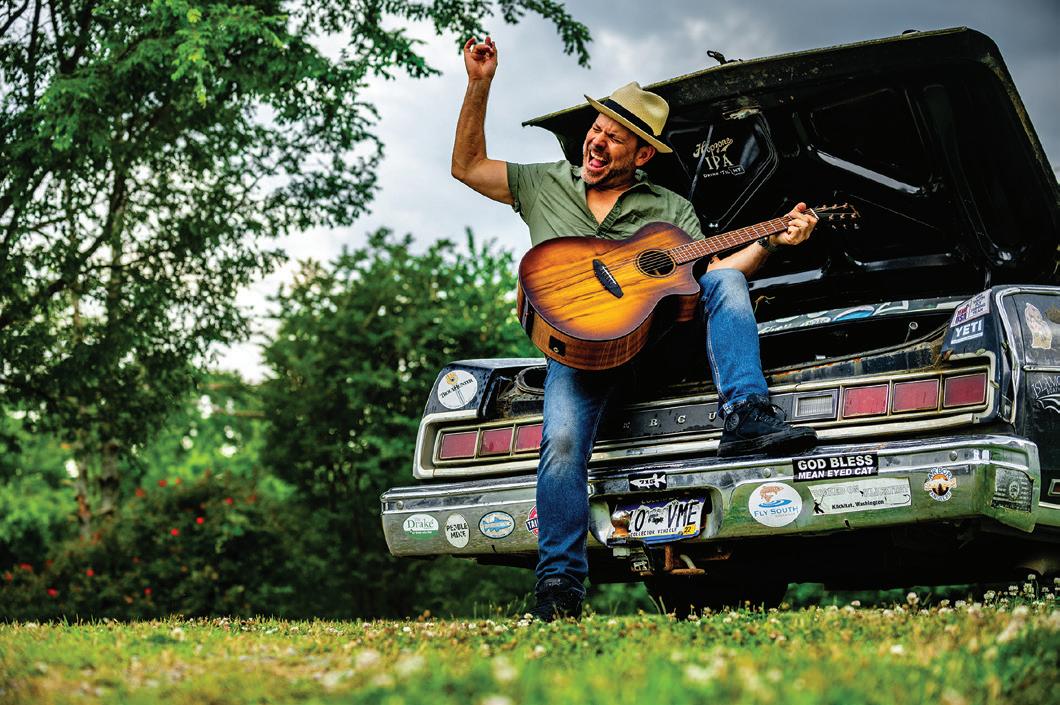













Red Sound is a company we’re familiar with here at Mixdown, and as our loyal readers, you will be too.
Red Sound is a company founded and based in Italy who are making waves across the industry with their amp-modelling-focused range of products. While amp modellers are sounding better than ever, the direct signal, even when emulating a cabinet and speakers, doesn’t always feel like a driving tube head.


Red Sound aims to fill this gap, and while it sounds like a specific niche, they’re creating products that really act as a canvas for you to create your tone upon. Red Sound’s range of full range, flat response (FRFR) speakers aim to amplify tones created in the digital realm, so you can feel the push and pull of a speaker cone with the practicality of a digital rig.
The Elis.8 is a FRFR 8” active monitor, one part of a range that offers more or less power as you need it, as well as bigger or smaller speakers and active or passive options. The Elis range features angled cabinets, while the MF range is squared off with big, wellconstructed cabinets to ensure all that acoustic energy is being pushed out of the speaker.
Being a company adept at producing good-sounding speakers, they’ve branched out into the monitor speakers category with a range of either studio monitors or bookshelf-style speakers, with custom cabling available to connect it all up for minimum loss between Red Sound products. What’s more, Red Sound are also breaking out into powered cabinets that look, feel, and sound
like more conventional cabs in the LG12 series, available in active and passive configurations as well
So where does a company like Red Sound sit within the market? They’re clearly innovators, but while many companies try to push innovation in every branch of the musical instrument industry, Red Sound is focused with laser-like precision on a mission to create the best possible products for modern players using modern equipment. Gone are the days of carting around heads and cabs that offer a single sound, but there’s something familiar about the energy of sound waves being pushed out of a cabinet behind you, usually as volumes that have a venue’s sound person shaking their head!
Red Sound began in the garage of Mirko Cascio Gioia of Red Sound after he saw a hole in the market for products to complement the growing trend for digital guitar rigs. Not content with just creating the cabinets, he saw an opportunity for custom cabling to tie all the pieces together and keep musician’s stages tidy and quiet, free of hum from messes of cables.
Red Sound’s goal is simply to provide a great-sounding and tailored amplification solution for otherwise digital and fizzysounding amp modellers, allowing musicians to play, sound, and perform at their best.

We had a few questions for Mirko after reviewing the Elis.8 Active Monitor about Red Sound’s beginnings, the inspiration behind
their current range, and where he sees Red Sound heading in the future.
Mixdown: How did you find your way to founding Red Sound?
Mirko: After seeing what the market for musical instruments and amplifiers offered, I felt there was a massive need to bring quality to the market. As is the case in business, there was a need and demand, it was only necessary to connect them. I thought I’d take it into my own hands!
Where did Red Sound begin?
From quite humble beginnings actually. It was in my room and my garage where I realised high quality cables for musicians aimed at the high-end market
Did you see a hole in the market? If so, what was it?
Oh absolutely! Simply put, digital systems for musicians were a massive hole that I felt needed filling. When we created the first cabinets for digital systems, nobody else had realised these products.
What’s one piece of gear you wish you’d invented?
An innovative digital system for musicians.
Where do you see Red Sound headed in the future? New products? Or more refinements of current products?
We have been the first to improve innovation in GRFR and FRFR systems cabs, and from this we’ll continue to improve our products in this market.
What direction do you see audio heading in?
For musicians, I believe that they will prefer mono and stereo configurations for many years yet. For other markets, I believe that immersive systems will be the direction that the market heads in. We’re already seeing it with increased use of Dolby Atmos, but it will be interesting to follow considering the reservations many have about its future. It will be especially interesting from a consumer perspective too.
What inspired Red Sound to create your current range of products?
A very big discussion and study session was pivotal with important Italian musicians Luca Galeano and Marco Fanton, finding out what they were after and how we could assist. The very difficult work with that, however, has been to transform their requirements and ideas into reality.
What is one thing that every good speaker has?
It’s so hard to narrow it down to just one thing, especially knowing the amount of work that goes into them, so I’ll give you a few: Reliability, efficiency, and only one point of emission.
What inspires you to develop new products?
To be able to provide better quality products to standard and professional musicians!
BY LEWIS NOKE EDWARDS


From Jimmy Page through to Jim Root and beyond, countless guitarists have relied on their designs to record classic albums and cut through crowds on the world’s biggest stages, helping solidify the brand’s status in music lore.
But as any keen gear historian will tell you, Orange Amps are far more than just an amplifier manufacturing mainstay. Since its earliest days as a secondhand retailer in the late ‘60s, the company has dabbled in almost all departments imaginable, churning out a myriad of instruments, PA speakers, cables, smartboards, and even a PC (seriously!).
However, if there’s been any Orange offshoot that’s really resonated with players over the years, it’d have to be the company’s fabled effects pedals of the 1970s. Vintage gear purists have made quite the fuss over these chunky, simple sound boxes on forums over the years, and as it so happens, the company actually took note.
After being alerted to all this hype, Orange’s R’n’D team dug through their vaults to seek out the schematics to these cherished stompboxes, and lo and behold, stumbled on the goods.
Fast forward a few years later, and Orange has officially released their Vintage Pedals series: a reissue of three of these revered effects pedals. It’s a celebration of both the company’s rich heritage and a trio of sounds that helped define guitar tones of the era – distortion (duh), phaser, and sustain – all packed into a chunky chassis that oozes retro cool.

While these three pedals mainly retain their vintage characteristics, Orange has added just enough tweaks to make them convenient for the modern player. The addition of 9V DC power inputs and LEDs are the most evident among these changes, but each pedal also features modified internal circuitry, which we’ll explore as we dissect them individually.
There are few effects as synonymous to the ‘70s as the phaser is, and the Orange Vintage Phaser certainly lives up to that legacy. Originally sold as the Phazer – I bet our sub-editors are glad they updated the name this time around – it’s a fourstage phaser that sounds great and doesn’t muck around with excessive functionality, offering a simplistic take on a staple sound of the era.
Much like another iconic orangecoloured phaser pedal, this stompbox features just one control for speed, letting you toggle the overall rate of the effect. Crucially, Orange has also updated the circuitry to decrease the noise of the pedal, making sure there’s no extra fizz for a tidier overall tone.
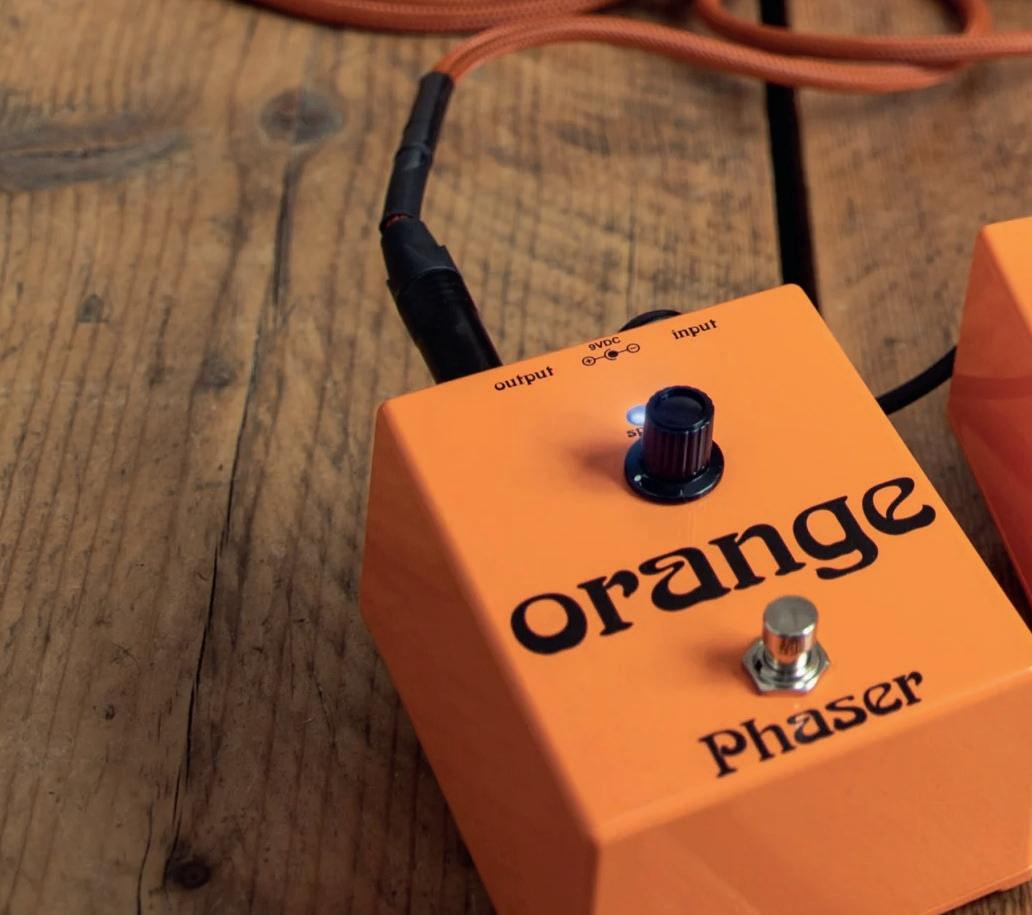
From swirling psychedelic rock leads through to choppy jazzfunk rhythms, the Phaser is a worthy addition to any guitarist’s pedalboard, and sounds solid in isolation and when squashed together with other effects. It’s also worth noting that this pedal would certainly complement the needs of a bass or keys player as well – after all, there really is no better sound than that of a
phased-out electric piano. Few things sound as sweet as a juiced-up amp being pushed into overdrive, and that’s exactly what Orange has tapped into with their Vintage Distortion pedal. Again, this stompbox looks incredibly simple on the outside, featuring two controls to handle the effect’s volume and depth, as well as the same retro-style typeface that adorns the Phaser.
Perhaps unpredictably, it’s the Distortion pedal that Orange has decided to tweak the most internally. Whereas the original ‘70s unit featured a back-to-back diode design, this new reissue makes use of a refined amp circuit, complete with a tone stack that allows you to adjust treble via a trump point inside the chassis. Despite these inner tweaks, the Distortion sounds just as tasty as you’d expect it to, and it’s surprisingly versatile to boot. A fat clean beast is easily achieved by dialling down the depth knob and riding up the level control, while cranking both beyond 12 o’clock unlocks some seriously gnarly rock rhythm sounds. Push it any further, and you’ll end up with saturated, super-chunky tones that are perfect for soaring leads, particularly when paired with humbuckers.
Dubbed as an ‘overdrive for your clean tone’, the Vintage Sustain pedal is another interesting offering, and when used effectively, could prove to be an incredibly dynamic sonic tool. It serves as both a boost and compressor, smoothing out the attack of your guitar signal and delivering a tasteful tone bump to boot.
Boasting two knobs for level and depth, the Sustain makes use of a mutli-coloured LED to visually depict how it interacts with your playing. A blue light signifies standard functionality, while heavier picking or strumming will see it dart between red and purple, letting you observe the way it compresses your tone.
As the name suggests, cranking the depth of this pedal will serve up sustain in its abundance, making it a suitable tool for snakey clean leads and intricate passages that involve plenty of slides and hammer-ons. It’s also a treat for funky Chic-style funk strumming, and can function more than adequately as a make-do boost when you crank the level control.
Whether you’re a vintage gear enthusiast looking for a fitting tribute to add to your collection or an experimental effects wiz wanting to embrace the simplicity of ‘70s-spec equipment, this new trio of Orange Vintage stomps are certainly worth your attention.
What’s more, if you go check one out in-store, you’ll have the chance to enter Orange Amplification’s 1st Crush competition. All you need to do is take a photo with your local retailer’s Orange amp display, post it to your socials and enter a few hashtags, and you’ll immediately enter the running to win a sweet swag of Orange prizes – it doesn’t get any sweeter than that!
BY WILL BREWSTERThere are few names as integral to the evolution of amplification than that of UK juggernauts Orange.
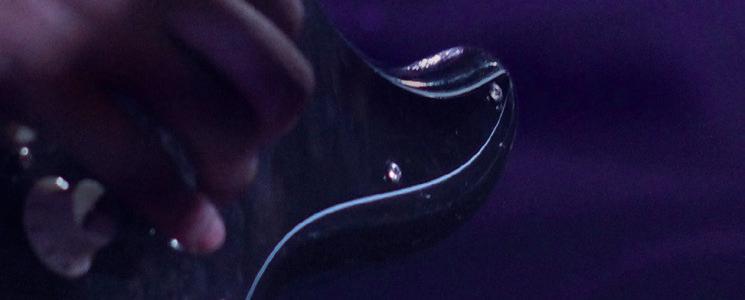

Amplifier simulators, or amp sims, are an increasingly popular function in modern production, mixing, and mastering. Tube amplifiers are heavy, they require consistent upkeep and they only flourish at higher volumes, requiring their pre and post amplifier stages to be pushed to sonically dangerous levels.
Amp sims allow us to tweak tones after the fact, i.e. if we’ve realised that the tones captured aren’t right for the arrangement or mix. Better yet, we can tweak tones between sections of songs to ensure all elements of the song have space to breathe, and swing in and out of focus around each other.
While amp sims aren’t as simple to tweak as a single channel amp, there’s a few things you can do to get them sounding closer to their analogue counterparts so they can easily fit into the fold.
Add effects like overdrive and modulation to the DI itself, before your amp sim. When we use an amp and some pedals, we run our guitar into the pedals and then into the amp. With this in mind, any extra plugins to add effects to your tone, make sure they’re before your amp sim.
The way amplifiers respond and sound varies greatly on their input, and a chorus plugin across a tone from an amp sim is entirely different to a chorus being crushed, saturated, and moulded by the circuitry of an amp. Delay and reverb pedals are often darkened by an amplifier’s tone, so effects before the amp sim can inherently sound more ‘real’ than effects added after the amp sim.
Once you’ve established your signal chain, you can take this a step further by EQing and compressing your direct signal before the amp sim plugins. Guitar amp inputs aren’t always as hifidelity as the input of an interface or preamp, and you can shape the sound a bit before it hits your ‘amp’.
Amp sims can be pushed and pulled, and add a lot of tone when required. What you can also do is cut and shape your tone reasonably heavily, and push those cuts back in with the unique footprint that the amp imparts.
A super thin direct signal can be bought back into contention when the specific curves of an amplifier reintroduce the frequencies that have been cut.
You can compress your tone as well to impart a particular dynamic before the amp, allowing the natural attenuation of the digital ‘tubes’ to impart a particularly more consistent flavour.
This next step can be done before or after (or both!) the amp sim in the chain. A saturated direct signal can be warmed and shaped really nicely before an amp sim, often allowing the amp sim to sound noticeably more real, as the amp sim responds differently based on its input.
The saturation plugins respond differently based on input, and their output affects the input of the amp sim, so it can easily reproduce the unpredictability of a real amp in a room. Again, the hi-fidelity nature of recording a direct signal can be softened with saturation before the amp sim takes the wheel, as digital sound can sometimes feel brittle, thin, or harsh in all the wrong areas.

One thing often missing from amp sims is the ambience and room reflections that are present when a loud amp is captured in a room. Sound bounces around a room and inevitably ends up back into the mic itself. Subtle room reverbs or short spring reverbs can make a guitar sound inherently more real, even when blended in at a super low level to mimic those reflections bouncing back into the mic.
Reverb as an effect similar to a pedal can be added before the amp sim, while room ambience and reflections can be added after, as you’d naturally hear the amp tone itself bouncing off the walls. Spring reverbs are very common in guitar amps, and can instantly sound wellsuited to your guitar tone.
A combination of these steps can get your amp sim sounds sounding a lot more real, and help them fit into a mix. Sometimes real drums, along with their own ambience and room reflections can sound out of place with simulated guitars. This exposes both the ambience of the drums and the digital qualities of the guitars, and they may be
difficult to blend together into a cohesive, coherent arrangement.
Any one, or all four of these tips can be used to get your amp sims sounding better than ever. The best results can be a combination of both real and ‘fake’ amps, allowing you to blend a dynamic amp sim in with a more static main rhythm tone. The amp sim can provide the push and pull throughout the arrangement, while your real, loud tube amps provide a consistent base for your arrangement and mix.
BY LEWIS NOKE EDWARDS
in isolation. In addition to this function, however, this bridge uses a tremolo arm (or whammy bar) to alter the entire pitch of the bridge itself.
friction. By largely eliminating these two points of friction often exacerbated by the use of a tremolo system, utilising this pitchaltering apparatus doesn’t require regular retuning.
Therein lies the beauty of this essential piece of hardware – no bridge is necessarily better or worse than another. It’s all about personal taste. But what does a bridge actually do on a guitar?

With a rundown of the different types of bridges and their distinct characteristics, we shed some light on what a bridge does in your guitar and the perfect bridge for your playing.
This is a simple, basic bridge that doesn’t move and, in turn, requires minimal adjustment once set up.
A Fender-style hard-tail bridge functions with a plate screwed onto the body of the guitar, equipped with six adjustable saddles – one for each string. The string enters the guitar from the back of the body, exiting through the bridge and passing over its allocated saddle. This can be found on hard-tail Strats and some Teles, and offers user-friendly adjustments to string height and intonation.
While on Fender’s conventional Telecaster it comes in the form of a larger metal plate and three saddles for tweaking string height – responsible for that classically bright, Tele-twang. Though in this form the bridge is limited to broad intonation without the ability to intonate each string individually.

As a bridge that stays in tune, requires little knowledge to utilise, and an occasional setup for maintenance, it’s well suited to beginners and the non-fuss guitarist.

Another fixed bridge, this design utilises a metal bar that’s fixed to the guitar’s body. Here this string passes through the bottom of the bar and wraps around the top.
Without the option of intonation –string height is the only adjustable parameter – it requires very basic attention.
The Tune-O-Matic bridge, while widely used by guitar manufacturers, is the brainchild of Gibson. Introduced in 1954 on the Gibson Les Paul Custom, it comes with individual saddles for each string and two pillars on either side of the bridge that can be heightened or lowered.
The product of which is a bridge that can intonate each string individually, but can only adjust string height universally.
This bridge is often accompanied with a ‘stop bar’ tailpiece, with which the strings are anchored, but past designs have similarly used the guitar’s body for this purpose. With a sharp string break it offers exceptional stability and solid sustain: another worthwhile choice for a beginner guitarist or Gibson-enthusiast.
First developed by Fender, the synchronised tremolo system has informed many of the trem systems currently employed by guitar manufacturers.

In a similar fashion to the hardtail bridge, the strings are each allocated their own individual saddle and can be adjusted
This is achieved with the use of a pivot point – created by the screws that hold the strings within the bridge – and a set of springs, anchored at the bottom of the guitar and used to counteract this tension. With the control of the tremolo arm, one can increase or decrease the string tension, altering the pitch of the tone with a simple push or pull.
The pitch-altering capabilities of a synchronised tremolo system are quite appealing to lead guitarists and those looking to diversify their sound. However be wary of their tendency to go out of tune more regularly as a consequence of extra string tension at the nut and bridge saddles. This is an issue that other, more complicated, bridges have been developed to remedy.
The Floyd Rose Double-Locking Tremolo was developed in the late ‘70s in response to a lack of tuning stability caused by tremolo systems. As such, it’s the choice of bridge for metal guitarists and devoted shredders.
Like your standard tremolo bridge, the string tension is shifted by a set of springs located within the guitar body, manipulated with the use of a pivot fulcrum. Where we start to see a significant difference is in the design of the nut, which is a locking nut rather than your standard nut. Here, three clamps fix the position of the strings, eradicating the movement and friction that can often lead to the guitar going out of tune. At the other end of the system the bridge also locks the strings and is positioned for a smoother break over the saddles and decreased
The complex nature of the system itself and the substantial knowledge and time it takes to set up, or even change a string, ensures that a Floyd Rose isn’t for everyone. However, when properly set up it’s a valuable tool for an experienced, metal or hard rockenthused guitarist.
Kahler tremolos have experienced a recent resurgence after being a viable alternative to Fender and Floyd Rose in the ‘80s. Where they differ from other manufacturers is with the use of a cam system for the altering of pitch instead of a fulcrum.
Instead of the springs being attached to the body they are located in the bridge itself, resulting in a softer, more elastic feel, while also delivering a similar range to that of a Floyd Rose. With their ability to adjust string height, spacing, and intonation, they’re a versatile and dynamic bridge. However, a key detractor is the fact that they’re not compatible with all guitars and designs.
Bigsby vibratos are as much about style as they are functionality. The vintage design sees strings clamp down and run over a Tune-OMatic-style bridge, with slightly less sustain and tension compared to a ‘stop bar’ tailpiece. Not designed for any kind of serious tremolo action, their appeal centres upon their simplicity and vintage styling.
BY MIXDOWN STAFFThe bridge on your electric guitar is a component that has a tremendous impact on tone and performance. To the extent that particular bridges are only associated with certain styles and genres.

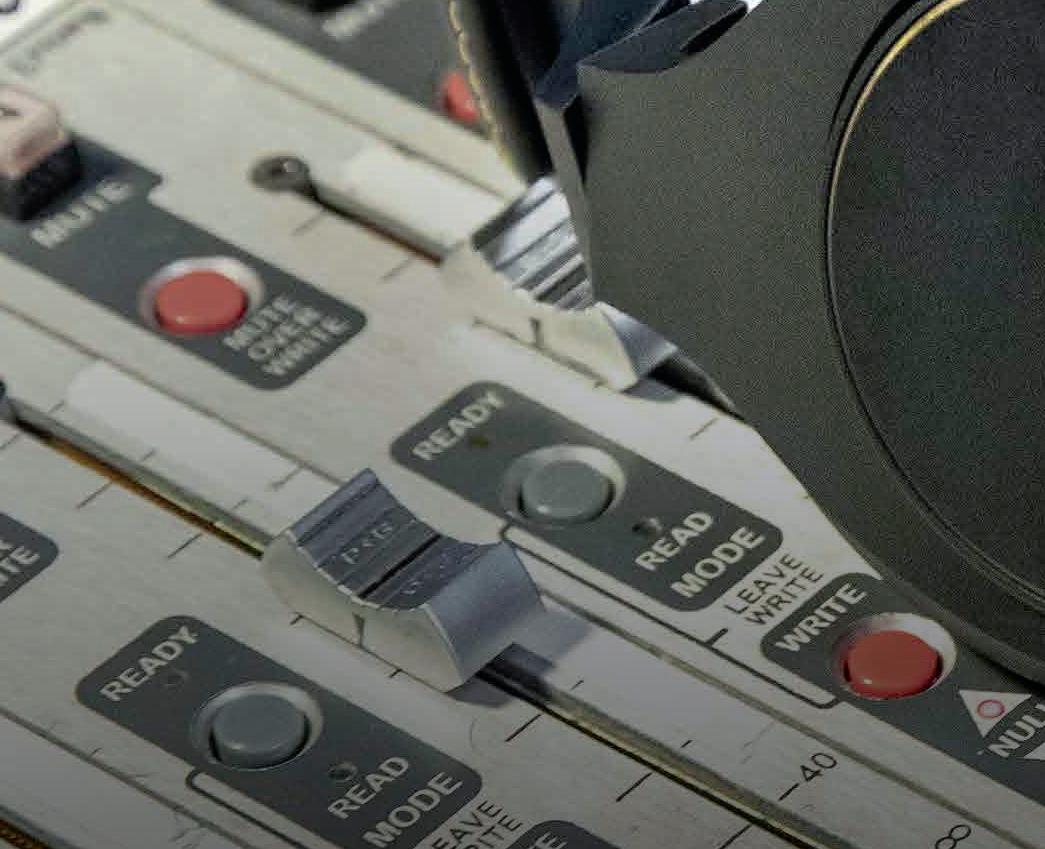

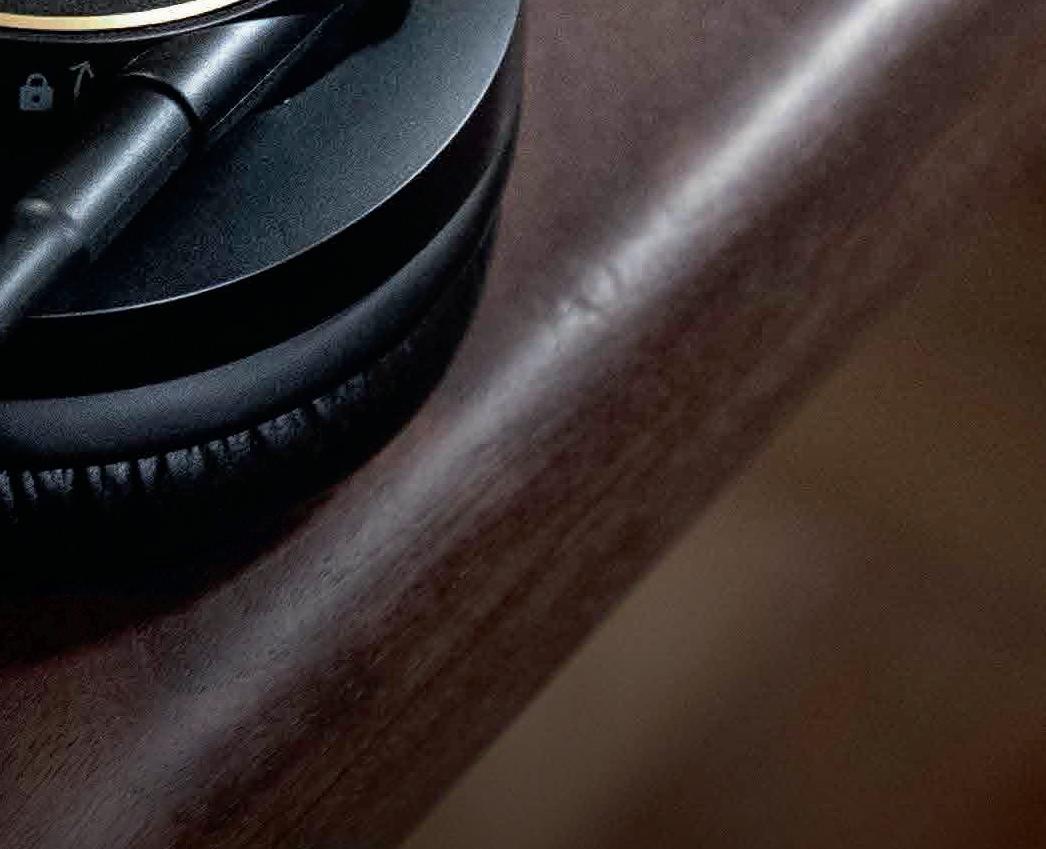



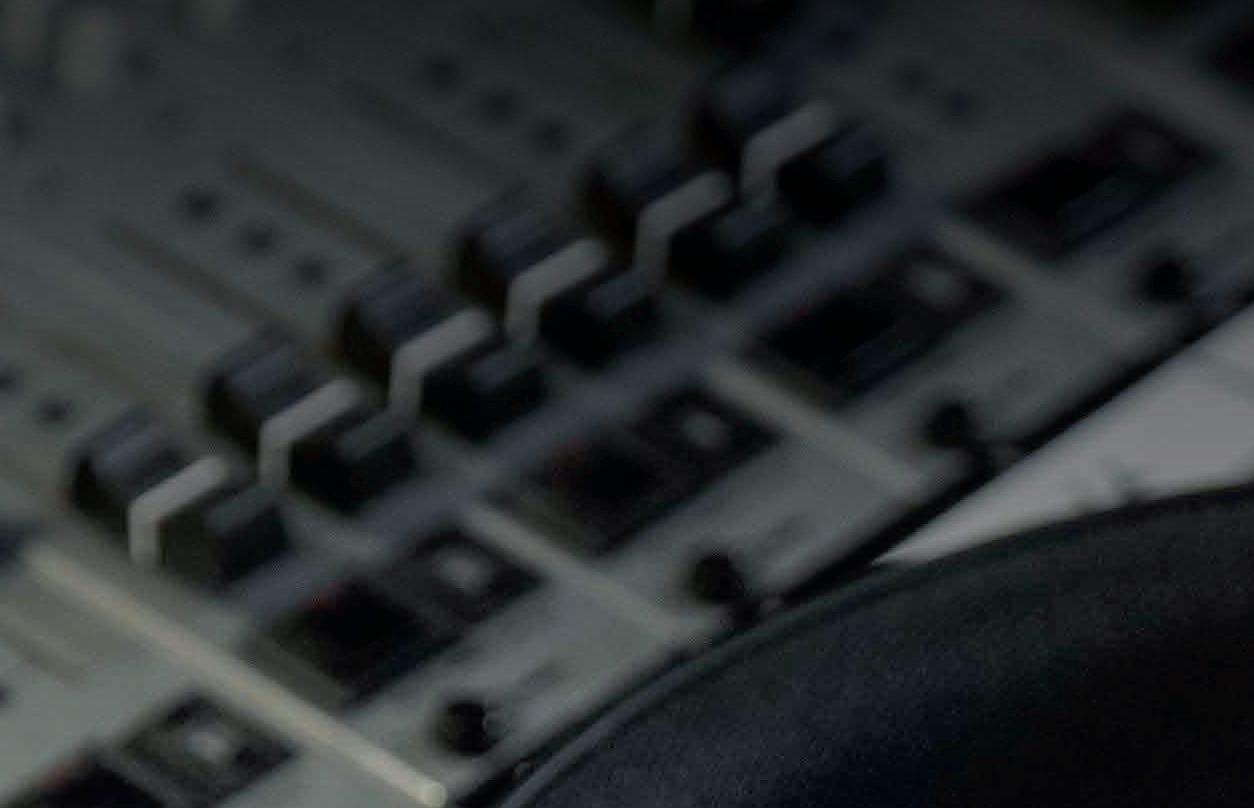
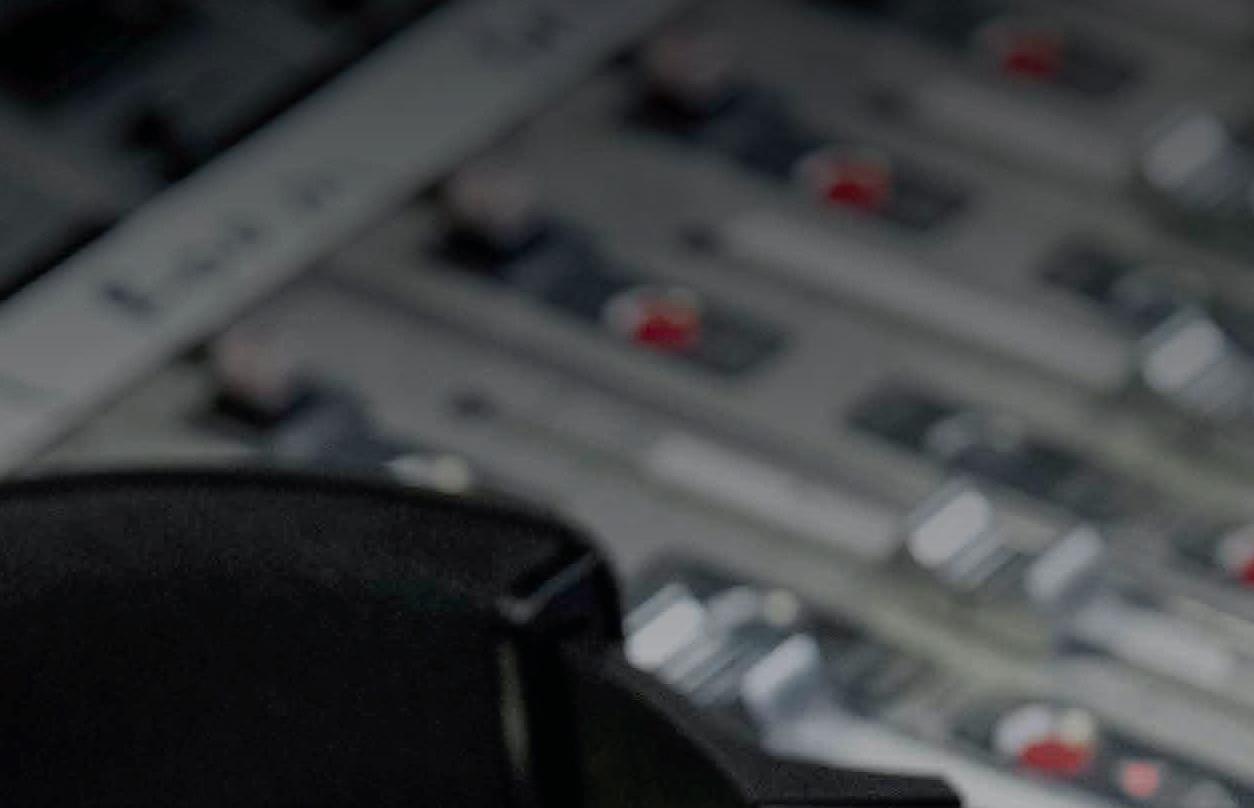






As a founding member of Boston, Tom Scholz is most well known in the musical world for penning and performing some of the biggest hits of the ‘70s and ‘80s, including ‘More Than a Feeling’, ‘Amanda’, ‘Peace of Mind’, and other classics.
Scholz’s role within the global rock music scene of the 1970s and 1980s, however, was one of much more magnitude than merely being Boston’s guitarist. Thanks to his engineering prowess and the perfectionism he showed while producing and recording, Scholz was a catalyst for sonic and technological improvements in rock music, leaving us with musical inventions and songs that have stood the test of time.
Born and raised in the suburbs of Ohio, Tom Scholz spent much of his childhood studying music, or building and tinkering on works in progress; two passions that would eventually bloom to significant proportions in his adult life. Graduating with a degree in mechanical engineering from the Massachusetts Institute of Technology, Scholz soon found himself working in product design at Polaroid, thereby fulfilling his ambition to become an engineer.
The transition in workload from college to his engineering job allowed Scholz to return to his hobbies. “I couldn’t believe all of this free time I suddenly had. My work day actually ended at 5pm,” Scholz recalls. Armed with more spare time, he discovered a renewed interest in music – both as a listener, and as a performer.
Having studied classical piano as a youngster, Scholz was already familiar with the masterful works of Chopin, Beethoven, Tchaikovsky, and other legendary composers of yesteryear. While these pieces did eventually influence the nuance
and complexity of Boston’s music, it was rock and roll that sparked Scholz’s musical passion as a young adult, and inspired him to pick up the guitar, aged 21.
“The bands which got me interested in playing rock and roll were The Kinks, The Yardbirds during the (Jeff) Beck days, and The Who. Those were the bands. Before that I had no interest in playing rock and roll or even listening to it,” Scholz told Goldmine.
Starting with what was then a purely instrumental iteration of ‘Foreplay’, Scholz started writing his own music, and recorded demo tapes in professional studios, as well as in the recording studio he built in his basement; a “tiny little space next to the furnace…you could just get the drums in there – just”.
From 1969 to 1975, Scholz continued writing and recording originals, while playing in several bands. As a result, he had amassed a few talented musicians that he would group with to form Boston, as well as much of the musical material that would eventually form their debut album.
After performing a live audition for executives from Epic Records, Boston were signed, agreeing to put out 10 albums over the following six years; a proposition that was never met, largely due to the characteristic perfectionism of Tom Scholz. In line with his desire to create and record his own sounds at an
artistically comfortable rate, Scholz continued to record music in his basement studio, in defiance of orders from the record label.
Multitrack tape recordings of the band in Scholz’s basement studio were taken to Los Angeles where vocals were added by Brad Delp, and the album was professionally mixed. As a result, the very tracks that were born out of and recorded in Scholz’s basement made it onto the self-titled debut album which immediately shot up the charts.
In accordance with demands from Epic, Scholz headed into his studio – now improved with a 24-track recorder – and started to work on what would become Boston’s sophomore album; Don’t Look Back. With harmonised lead guitar parts, weaved among clean drums and the soaring vocals of Delp, this was a quintessential Boston album, but it lacked the magic of their debut.
Scholz later said that “Don’t Look Back was rushed… I let it go early and that meant I wasn’t satisfied with some of it. Next time I’m not going to listen to anybody.”
Taking more care this time to fully flesh out his musical sketches, Third Stage came out a whopping eight years after Boston’s previous album, and achieved success in both its album form, and from its lead single, the now-classic ‘Amanda’. During this eight-year period, Scholz was faced with disagreements with a former manager, and legal trouble from CBS for failing to meet the deadline for a new Boston album. More positively though, he also founded Scholz Research & Development (SR&D) in this time, a company to design new music technology devices.
The first of Scholz’s products to make it to market was the Power Soak, a set of variable resistors that attenuated the volume output of the amplifier’s signal while maintaining a saturated sound, through a process of dissipating some energy as heat “before allowing a controlled portion of it through to produce the sound” per an original Muzines review of the time.
SR&D are responsible for producing the Rockman effects and amplifiers – most famous of which is the Rockman Headphone Amplifier, said to replace 10 thousand dollars worth of studio gear in a compact, batterypowered setup. Enabling guitarists to easily replicate ‘the Boston sound’, these were used as more than just headphone amplifiers, with musicians plugging their Rockman amps straight into mixing desks, and thus, directly onto recordings.
While continuing to write music for and perform with Boston, Scholz established the DTS Charitable Foundation, with missions to protect animals, help the homeless, and contribute to the conclusion of world hunger.
While a knee injury may have “ended 35 years of competitive basketball” for Tom Scholz, the legendary music that he brought to the world through the lens of Boston will live on for years to come.
 BY JAMES CALLANAN
BY JAMES CALLANAN
It’s the guitar special this month and this got me thinking about the other instrument in my life – shhh, don’t tell my drums, they’re vintage and a little sensitive.
Nevertheless, guitar has always been part of my musical life –albeit, usually playing second fiddle to the drum kit.

This said, I still perform on the guitar from time to time and thought that I would touch on some key musical factors that relate to both the guitar and drum kit and how these things continue to be connected when I play either instrument.
Guitar became part of my life at an early age, around eight. My parents enrolled me in guitar lessons after I showed some ability in learning from my relatives – a few basic chords, four strums a bar etc. I had a great teacher and learned a holistic approach to learning guitar including reading, feel, finger picking, styles, and more.
However, from an even earlier age, as young as five, drums were an obsession. Playing and learning by ear, I had no formal training and taught myself by trying to mimic simple beats and fills by watching a local drummer at church. A key thing I learned, even at that early age, was playing the backbeat – snare drum goes on beats two and four.
Clearly, nothing new and a standard thing to learn for a beginner but this brings me to my first connection to the way I think about playing guitar – as a drummer!
These days I mostly play acoustictype guitar gigs – typically in duo situations with a singer. In this scenario, the guitar has two primary roles. Firstly, it’s the harmony and the foundation for the singer but secondly, it’s the groove keeper. When playing guitar gigs, I can’t stand the fact that if people try to get up and dance, they don’t have the back beat that the drummer would provide. Assuming we’re not playing to tracks, I try to add this in to be able to maintain a feel or groove.
The idea is to create a percussive effect to mimic and imply grooves. This is achieved by strumming a hard accent on all strings but crucially, releasing the pressure off the strings in the left hand at the same time. Doing this not only stops the vibration of the strings, it then acts as a mute so that the right hand just becomes the back beat. You should keep the shape of the chord in the left hand, just release the pressure off the strings. The trick, however, is to incorporate this ‘two and four’ into your regular strumming patterns.
It’s very effective and gives the illusion of a percussive-type snare in the groove. You can also incorporate the muting/strum backbeat vibe while playing single
note lines or riffs. It just makes what you’re playing sit and feel better. This is also a great way to set up a bass groove on a looper. All about the two and four peeps!
Lots of guitarists mess around with stomp boxes too. I wanted to get in on the action, so I started investigating. In doing so, I sussed out some great electronic percussion solutions (as opposed to the standard one sound stomp box) that could double as a hybrid set up on the kit when not doing guitar gigs.
Roland produces the SPD-One series – electronic percussion units that have one single pad and just a handful of sounds depending on the application. The SPD-One Kick pad has a bias towards bass drum sounds, but it also has options for traditional stomp box sounds and even Cajon. There’s also samples of jingles and claps etc. so it becomes a handy (and small) unit to mount on the drum kit for a couple of electronic aids on the gig.
Crucially, its other purpose can be for guitarists. It can be placed on the floor and used as a stomp box with the foot. Robust and pretty handy. On a recent guitar gig, I plugged the SPD-One Kick into my looper pedal and used it to set up grooves to then play over. It was great to be able to stack sounds for the loop using the one pad and it’s not as big a set up as say, a full percussion Octopad or something.
There’s less pressure using the Roland to then have to play uber percussively on the guitar, but I still do. Where the drummer skill really comes into its own in this instance, is having the ability to then choose and apply whatever sort of groove or loop you wish to create for any situation as now, there’s even more scope for rhythmic variations –think hi-hat work, syncopation, varied kick patterns as opposed to four-on-the-floor and so on.
A final thought about combining knowledge of playing drums and guitar. Glancing back, it was amazing (and fortunate) that my guitar teacher’s program was so comprehensive. I learned many styles of guitar playing but in reflection, this has hugely affected my playing as a drummer later in life, particularly in band situations because now, I’m more aware of what the other musicians are playing. This might include chord qualities, turn arounds, forms, riff placement, and stylistic characteristics of whatever we are playing. I also make my musical decisions based on what others are playing – surely a good thing. Therefore, maybe my jealous vintage drums should be grateful that I also play guitar. Indeed, it is a great thing to have a knowledge of another instrument than that of your own. Deeper musical understanding is never a bad thing.
BY ADRIAN VIOLIFirstly however, there is no substitute for putting in the hard work initially (which is hours upon hours upon hours… contrary to many questionable YouTube learn guitar ads!), as you need to have the technique and some harmonic knowledge to call on.
But, there is definitely some room to milk a little bit extra out of what you’ve already got. Rearranging note order, using more intervals, patterns, playing through scales on just a couple of strings – all of these ideas can freshen up your playing but realistically don’t involve a lot of extra effort. How? What? Check out the following.
Familiar with the Minor Pentatonic scale? Patterns are a great tool to build longer lines, generate momentum and create tension. Ex 1 and Ex 2 use an intervallic approach to create an open sense of movement. These ideas skip strings which could be alternate picked, hammered/ pull offs or even hybrid picked (pick and fingers). We’re utilising a scale I’m sure most of you are familiar with, but with (perhaps) a fresh approach for you.
I know many people are aware of this… but, any given scale/mode can contain many different arpeggios/sounds within it.


Let’s take G Dorian G-A-Bb-C-D-E-F-G. We can make Gm (G-Bb-D), Am (A-C-E), Bb (Bb-D-F), and more all within that mode/scale!
Ex 4 then uses a G Dorian scale to create Gm (G-Bb-D), C (C-E-G), F (F-A-C), Bb (Bb-D-F), and Edim (E-G-Bb) triads. This type of approach can create a sense of the harmony changing even though it all fits within G Dorian and might just be over a static (one chord/ tonal centre/sound) groove.
So, let’s then squeeze some more out of these ideas. Combining the intervallic and two-string concepts we’ve just looked at and adding some extra movement along the fretboard gives us Ex 5. This exercise is mostly G Min Pent with a couple of A notes (9ths) thrown in. Start slowly, and then try to crank up the tempo with this one.



How about we take a two-string approach this time. Ex 3. Again, alternate picking, hammers/pull offs and hybrid picking are all fair game. And of course, you could continue this idea ascending further up the neck and also apply it to other scales.
Lastly – this doesn’t mean you shouldn’t build your knowledge and skills further (quite the opposite in fact). It’s more of a reminder that you can usually squeeze a bit extra out of what you’ve already got.
You might be comfortable with the Minor Pentatonic scale but find yourself playing the same old ascending and descending ideas with some bends thrown in for good measure. Try some different approaches as outlined above, they definitely work over static harmony (just the one chord), and will also work over various Gmin-ish chord changes. Use your ear, dig in, and have fun.
BY NICK BROWNI had a great discussion with some fellow guitarists this week along the lines of the ‘work smarter, not harder’ premise in relation to improvising/solos/creating.
I know, I know. These lists can be a waste of time (what a way to introduce an article hey!) and of course everyone has different experiences, tastes, and thoughts. Furthermore, the time period that you grew up in can really affect what you heard and were exposed to.
Despite all that, I thought it might be cool to mention five albums all from a similar time period that really influenced and affected me as a musician (and bass player!). Realistically I could pick five hundred albums but for the sake of this article (and your sanity) I’ve kept it to five in the pop, rock, funk, broad, and general vibe from the early ‘90s.

I clearly remember Molly Meldrum talking about this new guy from the UK called Jay Kay and his band Jamiroquai. They played a snippet of the chorus of ‘Too Young To Die’ and that was it – I was hooked.
Yes, he was cool and hip but also there was some serious scat in the chorus and the harmonic structure seemed more from the jazz and funk realm than rock. I didn’t quite know what it was but I loved it. The bass lines were prominent, intelligent, filled with pocket and great harmonic choices, and Stuart Zender was (and still is!) amazing.
I think I first heard the Chili Peppers via some mates that would’ve thought they were cool while still a bit indie. It didn’t take me long to realise there was some serious funk going on in their tunes.
The fact that Flea was Australian gave me some sort of feeling of connection (not in a douchebag way! Ha), and how cool is the nickname Flea?! Bass that was so pronounced in the mix and so essential to the song was an eye opener for me. Slap lines, syncopated grooves and hits, extended intros/solos/outros… wow!

‘Plush’ set the tone perfectly. Another early morning Rage discovery, I remember hearing the opening chords and realising they weren’t all just major or minor AND the bass player wasn’t just playing root notes! Amazing.
The power of Scott Weiland’s voice and the songwriting of the DeLeo brothers had a huge impact on me. Great melodies and chord changes, groove, rock with a range of influences – so damn good.
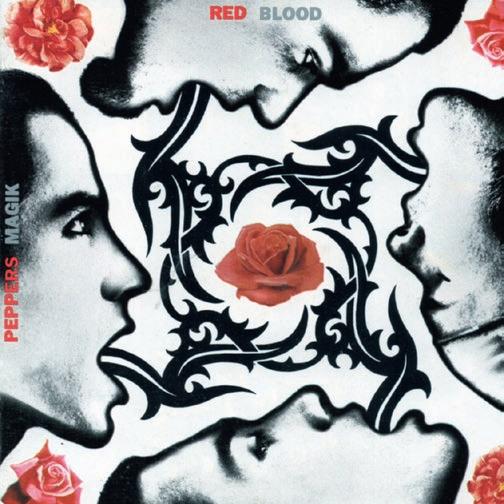
A huge range of styles and influences on one album all connected via Sting’s intelligent, witty, harmonically interesting writing, WITH great melodies and room for the band to play.

There were perfect examples of how odd time grooves could really feel accessible like ‘Seven Days’ and ‘Saint Augustine in Hell’, and I remember my uncle taking me to see him at the Palais in St Kilda, and they burned through everything with improvisation, different arrangements, and musical authority.
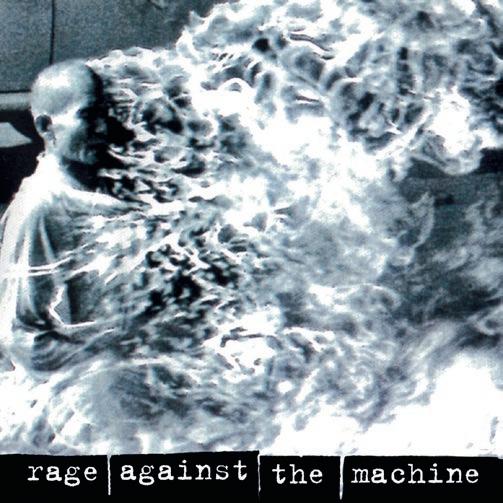
What the hell was that (or something similar) would’ve been my reaction when first seeing the film clip for ‘Killing In The Name Of’ on Rage
The aggression, the sound, the fact there was a rapper instead of a singer (!), the groove (that definitely was coming from funk and early rock roots), their look, the song title… all this combined to completely blow my mind.
Honourable mentions – Living Colour’s Stain, Alice In Chains’ Dirt, Pearl Jam’s Ten, and about a thousand others.
BY NICK BROWNThe last decade has seen an enormous surge in the appreciation of vintage electric guitars. Particularly those manufactured by Fender during their “golden era” between 1950 and 1965. These 15 years saw a huge shift within the world of pop and rock music, whose sound is still greatly echoed in the modern music of today. A large part of this is thanks to Fender, whose renowned electric guitars were so widely used within the most popular music of the day. So, it is no surprise then to see Fender reissuing modern takes of these “golden era” guitars.
The 1957 Fender Stratocaster is especially recognised by guitar enthusiasts as one of the best guitars ever made. By 1957, Fender had mastered the art of guitar manufacturing, as this was three years after the model was introduced. All the small aspects of the instrument were refined to create a perfect storm of sonic sweetness. Things such as the “V”-shaped neck and burnt amber finish had guitar players on the hook, and the craftsmanship of those working in Fenders’ Californian Factory was at an all time high as employees took great pride in their work. Fender has released a multitude of ‘50s and ‘60s reissues and vintageinspired models in the last few years and the American Vintage II 1957 Stratocaster is one of them. Whether it’s the nostalgic sentiment for these instruments
from musicians of old or the unwavering desire from younger players to feel what a 1957 Stratocaster felt like, something is for certain: Fender has brought out a beautiful dedication to its original predecessor.

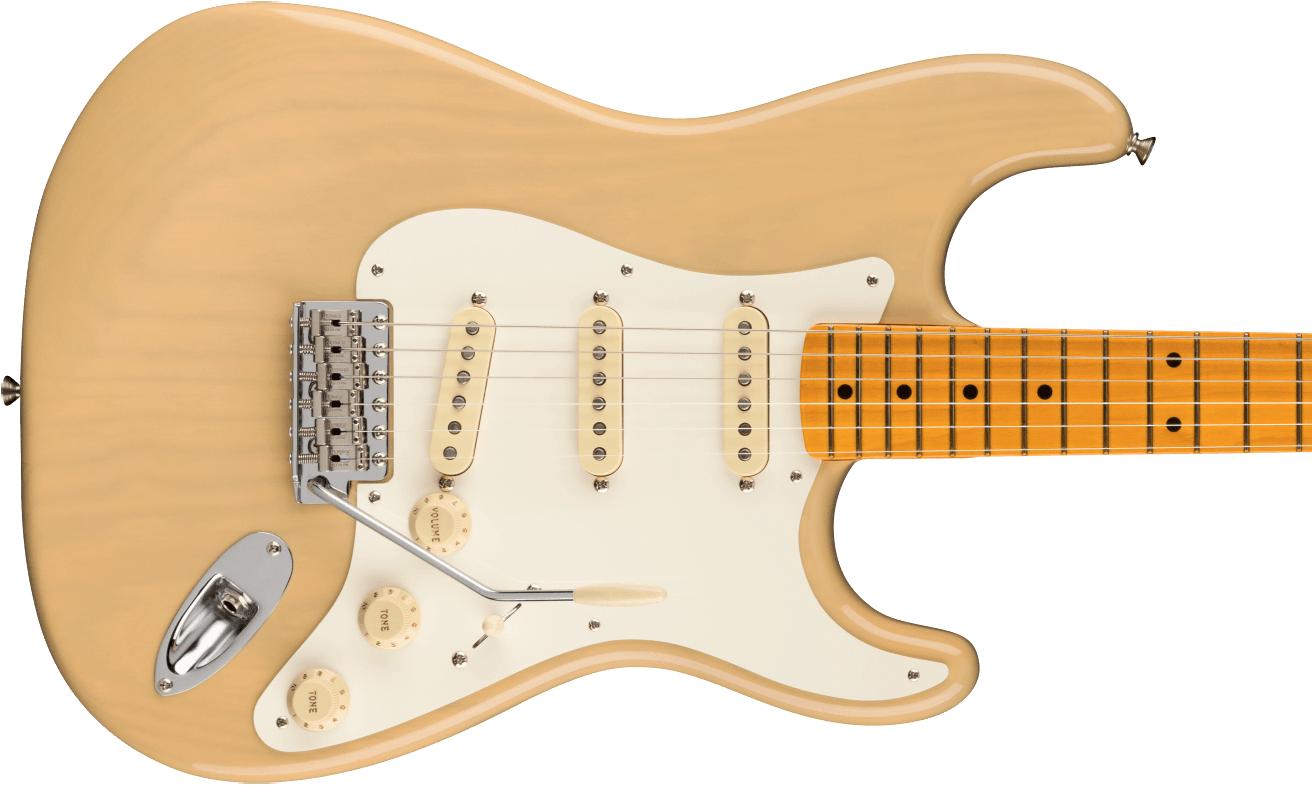
Just like the revered craftsmanship of the original 1957 guitar, the American Vintage II Stratocaster is built seemingly flawlessly. The guitar is heavily crafted to the specifications of the original 1957 Stratocaster; with the body’s famous curves identical to that of the day. By 1957, the curves of the Fender Stratocaster were known to be at their peak and it is evident in this model and most definitely catches the eye. The Famous 1957 “V”-Shaped neck profile has also been replicated meticulously. It is a relatively thick neck but fits beautifully in the palm of your hand. It is comfortable to play whether you like your thumb behind the neck or over the top.
Eric Clapton has stated that he has a love for the 1957 “V”-shaped neck and it is easy to see why. Its playability and comfort is evident upon first picking it up and striking your first few chords or bending some notes.
The American Vintage II 1957 Stratocaster comes in three stunning finishes; the classic 2-Colour Sunburst and Seafoam Green, both of which have alder bodies, as well as Vintage Blond with an ash body, with the unique flowing grain of ash
evident behind the Vintage Blond nitrocellulose lacquer finish. The vintage-style tuners are an identical replica to the Kluson Deluxe tuners Fender used in 1957, just with Fender’s name on them. The control knobs are an agedwhite colour with gold control labels that sit upon a simple white one-ply pickguard. The guitar comes loaded with three of Fender’s own Pure Vintage ‘57 Single-Coil Strat pickups, and a Pure Vintage Synchronized Tremolo with Bent Steel Saddles and a chrome bridge cover. Simply said, the American Vintage II 1957 Stratocaster plays and sounds as good as it looks. The tone that emits from this guitar when plugged into a tube-style amp is one that guitarists the world over simply adore. In the bridge position, the sound is warm and well rounded, yet bold and wide in nature. Chords swell and the notes sustain beautifully, especially with a touch of reverb. The neck pickup is bold and pleasant on the ears on its own. On the opposite end, the bridge pickup soars and really pierces through with its mid and high range. The bridge pickup also sounds very wide and open, and feels as though every note can be heard with intent and clarity. There is a classic Fender rattle when playing with some force, which some players don’t like, but is equally adored by many others. This can be adjusted however with relative ease. The middle pickup is more rounded in comparison
to the bridge pickup and not as spanky as the bridge pickup, but still retains that same dynamic grit. Those used to humbuckers or not familiar with the Stratocaster’s single coil pickups may not be used to the treble-y nature of the instrument, however this can be advantageous in genres such as blues, rock, funk, and country.
Overall, the Pure Vintage ‘57 Single-Coil Strat pickups respond well to dynamic playing, with softly picked notes sounding sweet and subtle with harder playing having its own grit and natural break up.
It is with little surprise that Fender has delved into the vintage reissue guitar market with many of their models in the last few years. The nostalgia-driven demand for vintage-style instruments from old players combined with the new found appreciation among the younger generation has driven Fender to meet guitarist’s desires worldwide. The Fender American Vintage II 1957 Stratocaster is a true recreation of the original, with all the perks of modern playability. It is the closest thing to an original 1957 Stratocaster as you can get, with its feel and sound designed to be like its famous predecessor.
BY ADAM BUTTIGIEGUpon its release back in 2007, the Prophet 08 was an overnight success. It was a welcome update to users looking for that classic Prophet sound in a more reliable, accessible format that made it perfect for creating sounds in the studio or performing live. Its fizzing filter and sleek black design became ubiquitous. The Sequential Prophet Rev2 is the aptly named second revision that builds on the strengths of the Prophet 08 by adding expanded features and capabilities.
In keeping with the 08 design (and most Dave Smith-designed Prophets), the Rev2 features a suave black finish and classy African mahogany wood end panels. Being a knob-per-function synthesiser makes the knob build quality important and they feel reassuringly secure with a pleasant resistance in use. The five-octave velocity and aftertouch-sensitive keyboard is semi-weighted and performs with the quality touch that you’d expect from Sequential.
The two DCO analogue oscillators are essentially the same as those in the previous revision. The foremost improvement is the ability to vary the pulse-width of any of the four wave shapes by dialling them in with the dedicated knob or modulating them with one of the four LFOs. This allows for everything from subtle vintagestyle wave shape instability to dramatic morphing experimental sounds. The oscillator slop function introduces pitch errors at variable rates to the voices, which can add a bit of characteristic instability, though it’s worth clarifying that if you want the bold VCO sound of the vintage
Prophets, there are better models in the Sequential range for that.
The Rev2 is available in two models; either eight or sixteenvoice polyphony. Both allow for bi-timbral playing via a split mode, or halving the voices but playing two different patches simultaneously in layer mode. This opens up the sonic complexity significantly and a second stereo output allows you to record both patches at once, perfect for recording while the creativity is flowing or having more control over your signal path if performing live and wanting to incorporate FX pedals to separate patches.
As is becoming increasingly common, assigning mod matrix parameters is as simple as holding the button and turning the source knob. Compared to the Prophet 08, modulation capabilities have doubled with eight separate mod paths and a host of new sources (22 in total) and destinations (53 in total). Sound designers will be in their element, from atmospheric stereo pans to dynamic aural textures.
The buzzy, whistling filter is the same classic Curtis chip design as the 08 Prophet. It can be switched between a two-pole 12dB curve and a four-pole 24dB curve, the latter having noticeably more resonance and will self oscillate when set to its maximum setting. With both key-tracking and an audio modulation knob (which feeds oscillator one into the filter cutoff), the sine wave from the self-oscillating filter opens up the possibility for two operator frequency modulation synthesis. The central critique here would be the notable absence of an
analogue high pass or band pass filter, but the digital FX engine has a resonant high pass filter.
The FX engine features all the classics you need for polyphonic synthesiser design: chorus, reverb, multiple delays, multiple flangers, multiple phasers, ring modulation, distortion, and the aforementioned high pass filter. Each with its own parameters that can be set as modulation destinations in the mod matrix. You can select one effect per patch, which means using the split or layer functions you can use two.
The five-stage envelope design with delay, attack, decay, sustain, and release also carries on from the Prophet 08. With both dedicated VCA and VCF envelopes and a third loopable envelope to broaden the sonic design possibilities. They range perfectly from the short and snappy for blips and stabs up to the slow and cinematic for washy pads. All three envelopes have a velocity knob to dial in the precise amount of keyboard velocity variance and a pan spread knob makes affecting the stereo position of the voices a breeze.
The Rev2 features two types of onboard sequencers; polyphonic and gated. Polyphonic mode records notes as you play them and plays them back quantised to the beat selected by the BPM and beat division settings. There are rests and ties to make things more dynamic and this serves well as an idea ‘scratch pad’ of sorts. The split function works well here as you can have one patch playing such as some chords or a bassline and play along over the top with another patch. It’s 64
steps long which is as much as I would need in a sequencer of this style and would prove handy in live situations when you want to keep things moving between other sequencers.
The second gated sequencer is 16-step and four-track and can be used either for notes or modulation tracks. These four tracks don’t have to be the same length meaning you can create some complex polyrhythmic sequences. With so many mod sources and LFOs, the automation can make things very interesting and can lead to some wondrous generative tones.
The Rev2 has been out for five years now and it’s fair to say its reputation is still growing. Sequential took a good workhorse synth and expanded it into a modern-day classic. I’ll admit that even though I knew it was a capable and respected instrument that the Prophet 08 never quite clicked with me. The Rev2 however is immediately inspiring and with such a deep analog engine I can’t imagine getting bored of it any time soon.
It’s fair to say that unless you hate the sound of Curtis filters or turn your nose up at any DCO polysynth that you’re going to enjoy playing the Sequential Rev2, which is why they’re becoming increasingly common to see both in studios and on stage.
 BY DAN NICHOLLS
BY DAN NICHOLLS
1975. The Vietnam War was over, Spielberg’s revolutionary Jaws took the box-office by storm, and the first pressings of Pink Floyd’s Wish You Were Here made their way onto turntables around the world. This was a period of change for the world, and for the world of music; with the mixing pot of genres in rock, funk, prog, and disco each having their fair share of the limelight. Musical instruments were not exempt from this era of progression, which saw the classic Fender Telecaster have its headstock expanded, pickups completely revamped, and slab body carved to a more anatomically comfortable design. Now, nearly half a century since Fender perfected it, the Telecaster Deluxe is back – in all of its true-tovintage glory.
As something of a reprise to the American Vintage series of the late nineties and early noughties, Fender’s new American Vintage II series offers year-specific reissues of some of their most iconic electric guitars. Originally introduced in 1972 as the flagship model of the Telecaster, the Telecaster Deluxe was unique in being fitted with Wide Range humbucker pickups. Fender has gone to great lengths to keep this model true to the specifications of the 1975 Telecaster Deluxe, such as manufacturing pickups with CuNiFe magnets for the first time since 1981. In doing so, Fender’s description of these guitars as “direct descendants of the original(s)” is accurate, and perceivable to the player or collector.
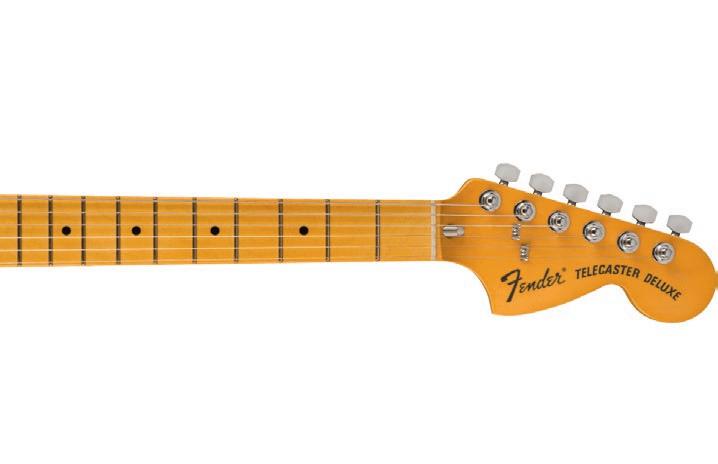

When first removing the guitar from the included hardcase, the high-build quality of the Telecaster Deluxe makes for a great impression. The alder body and maple neck are neatly decorated with gloss polyurethane finishes that match the look and materials of the original. At the neck pocket, where neck and body are perfectly married together, lies access to the Micro-Tilt mechanism, enabling easy fine-tuning of the angle between the two components. High-quality components provide an optimal path for the strings; from the vintageaccurate tuners to the bone nut, to the six stainless steel block saddles, providing an opening to the string-through design.
The excellent craftsmanship and fitting is evident in the immense resonance that this 1975 Telecaster Deluxe has to offer, which is apparent even when the guitar is unplugged.
The Fender Telecaster is notorious for its robusticity and ability to serve as a workhorse. While both of these qualities remain true in the American Vintage II 1975 Telecaster Deluxe, they do not come at the cost of superb playability and comfort. At a fairly hefty weight, though with some timber removed at the belly cut, this model provides an electric guitar in a solid, yet ergonomic package. Our review unit had good weight distribution, with the neck remaining approximately parallel to the ground when played either sitting or standing. The arrangement of components on the top surface of the body allows for uninhibited play, with the pickup selector and control knobs remaining out of the way, compared to the layout of a standard Telecaster.
The hard rock maple neck also strictly complies with the original specifications of the 1975 guitar, as you might expect from a reissue of this calibre.
The “C”-shape neck is extremely comfortable, with fretting hand fatigue hardly experienced after even hours of play. While more modern-minded players may prefer a satin or matte-finished neck, the gloss finish does not generate excessive levels of friction. The 7.25” fingerboard radius, in conjunction with the medium jumbo frets, provide the player with a comfortable
experience that accurately depicts the original model. While this fingerboard radius typically isn’t the most conducive to massive bends and high-speed lead guitar techniques, no major drawbacks were noticed when playing into the higher regions of the fretboard. With individual bridge saddles for each of the strings, intonation is highly adjustable – in contrast to the original non-deluxe Telecaster design.
In true Telecaster fashion, the 1975 Telecaster Deluxe reissue provides the guitarist with some gorgeous sounds, and a simplistic approach to controlling and manipulating them. The resurrected CuNiFe Wide Range humbucking pickups – originally designed by Seth Lover – have excellent output, clarity, and balance across the frequency spectrum. These pickups are articulate in their ability to reflect the sounds that different strings produce, and they also shine in bringing some real gnarl when the musical situation calls for it. Despite their vintage design, they are relatively quiet, surprisingly even through a driven valve amplifier.
With the toggle switch placed upwards into the neck pickup position, this Tele excels in producing warm and full tones, while maintaining pick articulation. From folksy fingerpicking, to jazzy single-note-runs, to grungy chords, the neck pickup was balanced, with no perceived scoops in the output.
When switched to the bridge position, the sound has some remnants of the iconic Telecaster twang, though in a much more
musically well-rounded fashion. The higher output and slightly darker tone of the Wide Range Humbucker enables the Telecaster Deluxe to be more versatile than the original Tele in the neck position.
Perhaps the most exciting and magical of this guitar’s sounds are produced when both neck and bridge pickups are selected simultaneously. This position is somewhat reminiscent of the iconic Fender Stratocaster ‘in-between’ positions, though with a touch more midrange and a little less glass. The result is a rather gentle and sweet quack, with a metric-tonne of musical applications.
While the dimensions and components of the American Vintage II 1975 Telecaster Deluxe aren’t necessarily the most high-tech offerings in the world of electric guitars, this model nails something that many fail to deliver; a vintage-accurate reproduction of a classic model that plays easily and sounds beautiful. It offers all the romance and magic of a ‘70s icon, albeit in a shiny, new package. You’d be hard-pressed to find an electric guitar that matches the aesthetics, sound, and overall feel of the new 1975 Telecaster Deluxe from Fender.
BY JAMES CALLANAN















Artist model guitars seem to come and go. They’re an increasingly present part of the music retail industry, with people flocking to buy the unique guitars used by their heroes. These instruments usually start in the Custom Shop, with artists making special requests and concocting their own unique take on a staple body shape, but adding or streamlining the design to fit their needs.
These are played on stage for millions and the demand creates a trickle down effect before the signature models become part of the production line.
While we won’t go too far into the story involving John Mayer, Fender, and eventually PRS, the PRS SE Silver Sky is the result of a further trickle down effect from the highly regarded USA line of Silver Sky guitars. Born as a way for Paul Reed Smith to help John Mayer refine what he loved about the Fender Strat, the original Silver Sky range as a whole features an S-Style body, three single-coils, and a steel tremolo bridge.
While all this is part and parcel for a Strat, the modern refinements are equal parts what helped the original Silver Sky deviate from a Fender Strat. The SE Silver Sky takes all this and bundles it back up into a more affordable package, stamped with PRS’ seal of approval for production in PRS’ own Indonesian manufacturing facility, in partnership with Cor-Tek.
The SE Silver Sky is available in Moon White, Stone Blue, Ever Green, and Dragon Fruit, a deep red magenta-like colour. They’re
a solid body poplar build, with a maple, multi-ply construction neck, and rosewood fretboard. The body itself features the Silver Sky’s unique curves in the guitar’s contours and cutaway, allowing for access right up to the tippity top of the 22 frets when need be. The headstock deviates from the classic six-in-line design, and the more modern tuners allow for faster string changes. The tuning keys are made of a solid plastic and complete the guitar’s modern look.
Getting down to numbers, the scale length is 25.5”, so players of more traditional Fender style electrics will feel at home. The 8.5” fretboard radius places it between vintage 7.5” radiuses and modern shapes from 9.5” and beyond, giving players that vintage feel with modern playability, which seems to be the mantra of the Silver Sky range as a whole. The pickups are three 635JM “S” pickups, PRS’ own design that give all the tone you were hoping for with modern refinements to treat noise and hum. The 635JM pickups are controlled by a volume and two tone controls with a fiveway blade pickup switch, while the knobs themselves are a classy white design resembling a witches hat-style knob with subtle texture for grip. It’s these little refinements that make the SE Silver Sky a really unique experience to play.
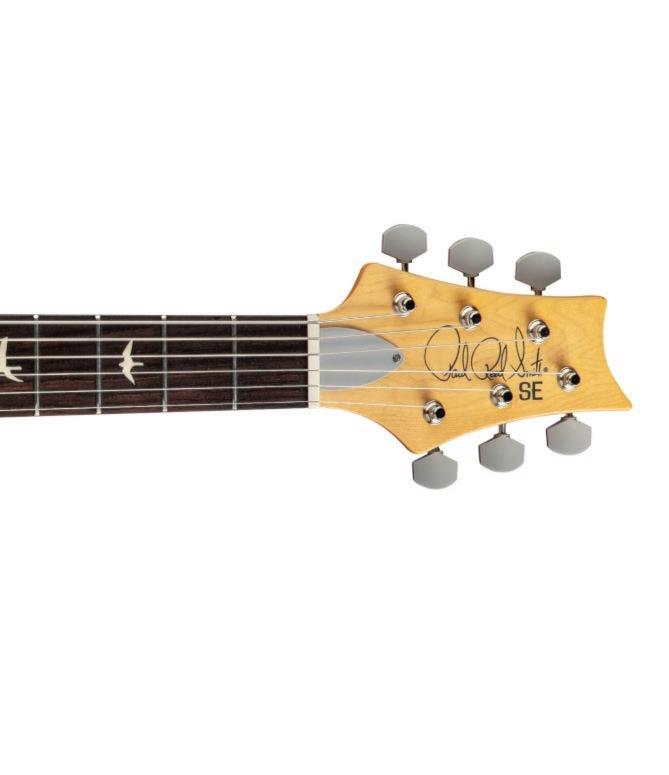

In the hands, the SE Silver Sky feels a bit like a sports car. It’s equal parts comfortable and familiar, but with little refinements that I didn’t realise I was missing. The cutaway and higher fret access really makes a difference, with the
22nd fret and beyond being easily accessible. The body contours on the back of the guitar nestled nicely against me while sitting, and the guitar hangs well when standing, with little neck dive and a nice weight to it. While poplar is a wood often used on more budget instruments, the combination of poplar and welldesigned hardware makes for a really resonant guitar, and ultimate tone machine.
Amplified, the SE Silver Sky features all the single coil twang and phasey tones I’m after, but without the hum problems of more traditional single coils. They retain the character of an S-style guitar without introducing problems when using gain or pushing the guitar or your amp into overdrive. The fretboard plays well, and I felt right at home on the 8.5” radius, having come from a history of equal parts vintage and modern specs, but the SE SIlver Sky felt like both at the same time. The guitar held tune well, even with heavy tremolo use, and in the event of tuning problems, the Silver Sky range has the back springs exposed for easy access. Repairs and maintenance aside, this also allows the player to easily try different tone tricks, such as hair ties on tremolo springs, foam blocks to prevent squeaks etc.
While the Silver Sky takes obvious points from more famous guitars, the modern design really pushes it into a league of its own. The body design is a refined shape, paying homage to the original but cutting away a little more wood and making a few minor tweaks for
major upgrades to tuning stability, maintenance, and fret access, allowing you to use this one on stage with confidence no matter your needs. Small improvements like textured knobs and the three-per-side headstock make for a supremely playable guitar, while the 635JM pickups provide all that classic tone and less, the ‘less’ being the absence of hum and noise.
Standard controls allow you to tweak every tone imaginable from the five-way switch, all the while feeling uninhibited with a well-weighted guitar strung across your shoulder. The cutaway access and body contours make the guitar as accessible as the price does, and there’s no sacrifice in quality thanks to PRS’ exacting expectations.
The original run of USA-made Silver Skys were hugely popular and continue to sell, but the SE Silver Sky is the new kid on the block with a more attractive price and no massive drawbacks. The SE Silver Sky is one signature model guitar that’s here to stay, and may or Mayer not already be one of the classics.
BY LEWIS NOKE EDWARDS



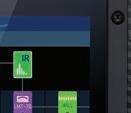

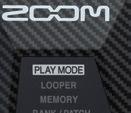
















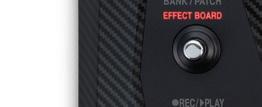
With state of the art amp modeling, powerful multi effects, and a touch screen interface, the G6 delivers what you need to take your sound with you, anywhere you go.


 Jacob Stibbie | Lead Guitar | Abstract Feedback
Jacob Stibbie | Lead Guitar | Abstract Feedback
Tape is a medium synonymous with the most famous records of all time. Even more recently in the digital realm, engineers and producers are chasing the saturation offered by tape of all types.
Cassette tape saturation is widely used across the board, finding particular fame among hip-hop circles that rose to popularity in the ’90s. Reel-to-reel tape imparts a warmth in the low mids, creating a weight that a lot of us are constantly chasing. Cassette tape brings a similar quality to the table, but it also breaks up in a very unique way, clipping and crunching across transients.
Both of these sounds have unique uses across a variety of sources, and thanks to the Next Generation of pedals from Strymon, both ‘classic’ and ‘cassette’ tape sounds are now available on your pedalboard. What’s more, the revised Deco doesn’t just bring saturation, it’s every trick in the book that’s been written by engineers of the past and present!
The Strymon Next Generation Deco is a stompbox with two on/off switches, one for tape saturation and another for doubletracker, both with their own unique controls. The tape saturation side features three knobs for saturation levels, tone to brighten or dull your saturation, and finally volume to control the output level. There’s also a voice toggle to switch between cassette and classic, both of which saturate
different areas of the frequency spectrum in different ways – as both mediums would!
The doubletracker side introduces all the tricks of the tape trade used to thicken single takes of sounds. Modulation is used heavily, as is double tracking as the imperfections between two takes are what gives sound their thickness. Lag time adjusts how long the delay between separate ‘takes’ is going from slapback echo to blended, but punchy sounds.
The wobble knob introduces some modulation, further differentiating the two sounds and thicken it up as a whole. The blend knob combines your newly affected wet signal as much or as little as you’d like. More wobble and the sounds begin to chorus and flange, while dialled back, the Deco produces a thickened, dynamic, and impactful response to your playing.
For even more control, the doubletracker also offers different types of tape delay and doubling effects. In the ‘sum’ setting, the Deco imitates two tape decks being in phase with each other, while the ‘invert’ setting flips the phase of one and therefore affects the bottom end of the resulting sound. The ‘bounce’ setting routes your signal so the right lag deck is bounced to the left input for stereo ping-pong or mono double-echo sounds. These are three fairly common ways that tape machines were used to great effect, albeit sometimes accidentally moving in
and out of phase with the source material.
The Strymon Deco is great, simply put. It’s a lot of fun and all the controls are easily adjusted with clear labelling and a well laid out and road-tough enclosure. The sounds you can produce vary wildly, from a subtle ‘always on’ approach to maxed out modulation and delay to really drive your new hook home. The Deco can deliver unique sounds previously unattainable without multiple tape machines, but it always brings you tried and true tricks to bring your riffs to life.

Whatever tape has brought to tone in terms of saturation, delay, modulation, and pitch, the Deco can recreate these on stage from your pedalboard. Strymon’s strength is harnessing digital processing for particularly analogue sounds, without the harshness and fizz that digital sounds can be prone to. If there was one pedal that proved this beyond doubt, the Deco is it.
Strymon’s Next Gen series of pedals all have TRS MIDI capabilities, and allow users to access the guitar’s knobs that now act as encoders for writing or receiving MIDI information. If you’d rather use the TRS MIDI jack for an expression pedal or similar, the whole range of Next Generation pedals can now be connected via USB-C.
The mono/stereo input capabilities are now accessible on the top of the pedal, which were previously only adjustable via an internal jumper, requiring you to open the pedal up. Now you can record stereo and switch to mono for that evening’s gig without a worry!
For the Deco more specifically, this means you can control lag time, creating modulation with expression, or use a pedal to rock back and forth on the blend knob, bringing the effect in and out.
Strymon has refined an already popular effect and pedal in the Next Generation Deco. While not inventing any new sounds entirely, they’ve made them more accessible to not only players, but producers who may be using the pedals for recording or mixing in either stereo or mono. MIDI functionality brings Strymon into a league of their own, a league made especially for them as pioneers of digitally controlled effects pedals. The Deco holds Strymon’s flag high in the modern day, despite its focus being to bring us back to a crunchier time filled with reels or tape and VU meters slamming towards distortion.
BY LEWIS NOKE EDWARDSWhen Fender Musical Instrument Corporation (FMIC) acquired the Jackson brand in 2002, it felt like a great opportunity to set up a kickass US production line to bring this classic Californian brand back to the masses. But it didn’t quite happen that way. Sure, you could order a USA Custom Shop instrument, and the high-end import guitars released by the brand definitely feel, play, look, and sound like Jacksons. But there was no production line in America cranking out Soloists and Kellys and King Vs.
Well it may have taken 20 years, but finally the day has come: FMIC recently announced the Jackson American Series Soloist SL3, made in its own dedicated section of the Fender factory in Corona, California. And while it hasn’t been explicitly stated yet, you can be pretty confident that they wouldn’t have invested in a whole new production line for just one model. This has gotta be just the beginning, right?
But FMIC and the brains behind the Jackson brand didn’t just decide it would be enough to build a Jackson in America and be done with it: they set out on a mission to make a guitar that really encapsulated everything Jackson players wanted. And that means fast. So the marketing tag “Fast as F#*!” was coined and held to, and this instrument is being hyped as the “fastest Jackson ever”. Before we consider whether they succeeded, let’s have a look at what has gone into this new take on the classic Soloist.
First of all, the body is listed as alder, but as a neck-thru instrument there’s a three-piece maple core which extends uninterrupted from the tip of the headstock to the rear strap pin. The fretboard is ebony with inverted mother-of-pearl shark fin inlays and glow-in-the-dark (and decently oversized) Luminlay side dots.

There’s no fretboard binding, but the frets are inlaid into the neck in a way that doesn’t require the fret slots to extend all the way to the edge, so it looks like there’s ebony binding when there isn’t. Cool touch. The frets are very well finished too, which is obviously important on an instrument designed for speed.
The fingerboard itself has a 12”-16” compound radius, getting flatter and more shreddable as the 24 Jumbo frets approach the widdly end of the neck. The entire guitar and neck is matte-finished, so your hand will glide over the slim-butnot-ridiculously-so neck regardless of how sweaty you get onstage.
Hardware includes a Floyd Rose 1500 Series double-locking tremolo with rust-resistant screws that look cool and will keep this guitar looking slick well into the future (I’m sure by now we’ve all seen rusted-out, tetanus-inducing hardware on worn-out ’80s shred guitars: probably not gonna happen here). The tuners are Gotoh MG-T locking units which I guess could be considered overkill since there’s a locking nut, but they feel great and will speed up string changes. Good news for those who aren’t fans of Floyd string changes.
The pickups are a pair of Seymour Duncan Flat Strat SSL-6 single coils and a TB-4 JB Trembucker. This is the most logical choice for a Jackson of this pickup configuration if you’re going for traditional vibe, but some players might find the single coils a bit noisy depending on the amount of gain they plan to throw at them. Still, every self-respecting metalhead has a noise gate or two in their rig these days, right? There are master volume and master tone controls and a five-way pickup selector switch, but no coil split for the JB.
So is it fast? Hell yeah. The combination of smooth frets, super-straight neck, compound radius, and matte finish all conspire to offer a super-slick playing surface, and the neck itself sits at just the right height from the body to anchor your hand for accurate speed-picking. The Floyd stays in tune perfectly, the intonation is great right out of the box, and the controls are within perfect reach. Jackson has really gone all-out to thoughtfully engineer a very playable instrument.
But that doesn’t mean you have to play fast on the American Series SL3. It just means that it’s really comfortable to play, no matter what you’re playing on it. Any impediments to your playing comfort and ability to move around the neck have been removed in the design process, so whether you’re executing eightfinger, triple-octave arpeggios or just digging into a big ol’ pentatonic lick or an open-chord
AC/DC riff, you won’t be fighting against the guitar.
You’ll both hear and feel the benefits of the neck-thru design, with an up-front pick attack followed by a beautifully blossoming sustain if you’re holding a note instead of speeding to the neck one. The JB is one of those pickups that sits perfectly in a mix, with clear-but-not-shrill highs, a big fat midrange and full low end, and it’ll handle anything from blues to thrash and beyond without breaking a sweat. The SSL-6 single coils are pretty hot as far as singles go, so they match the JB’s output pretty well and sound nice and clear for those Yngwie moments, and they clean up beautifully, especially in the neck-and-middle setting.
Downsides? Well this is the ultimate production Jackson, so it comes with a suitably hefty price tag. And those single coils won’t be for everyone, because ‘high gain’ means something different now to what it did when players first started using HSS Jacksons. But if you can swing the cost, this is one hell of a worthy addition to Jackson’s history.
BY PETER HODGSONBased in Oregon, Breedlove has been making meticulously handcrafted guitars for 30 years now. Besides meeting the obvious goals of constructing quality acoustic guitars that are optimised for both playability and sound, Breedlove also has a passion for nature – a passion which is epitomised in their ECO Collection.
Breedlove’s new Rainforest S series is part of the ECO Collection which uses earth-conscious ‘EcoTonewood’ sustainable laminate technology. The idea is to be more respectful of the natural resources that go into making an acoustic guitar, and it allows Breedlove to use clearcut-free, individually harvested African mahogany in place of the softwoods usually employed in acoustic guitars.
Breedlove owner Tom Bedell personally took it upon himself to visit forests the world over to source raw materials from local families, mills, and suppliers, with the aim of preserving and protecting the world’s forest habitats and the communities who strive to peacefully coexist alongside them.
The Rainforest S Concert Papillon CE is just one entry in a wide range of acoustic guitars that are all distinctly Breedlove, but which all have their own unique individual charms too. And the first thing you’ll notice is that gorgeous Papillon finish, a deep dark blue offset by reddy-brown and black binding, mirrored on the sound hole rosette but curiously not on

the matte-finished headstock. This is a guitar that defies your expectations at every curve: the fingerboard dots are offset on the bass side up to the twelfth fret and then offset to the treble side, drawing the eye to the smooth and comfortable treble-side cutaway that provides unrestricted upper fret access. And the headstock is an asymmetrical, slightly Gumby-shaped design which is unmistakable in silhouette and which also seems to place each tuner right where your hand would naturally grapple for it.

The same African mahogany (sourced from the Republic of Congo) is used for the laminated back and sides as well as for the solid (not laminate) top and for the neck. The fretboard is ovangkol, stained black, and featuring 20 decent-sized and fell-finished frets.
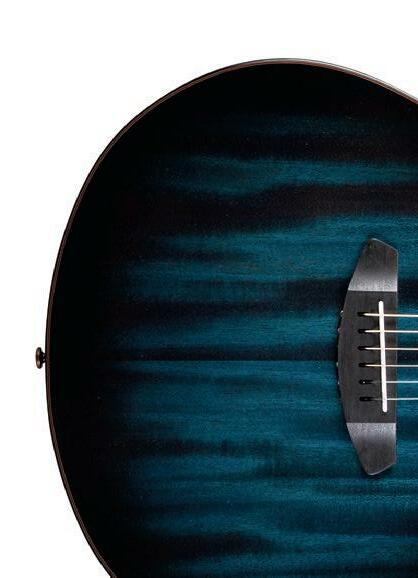
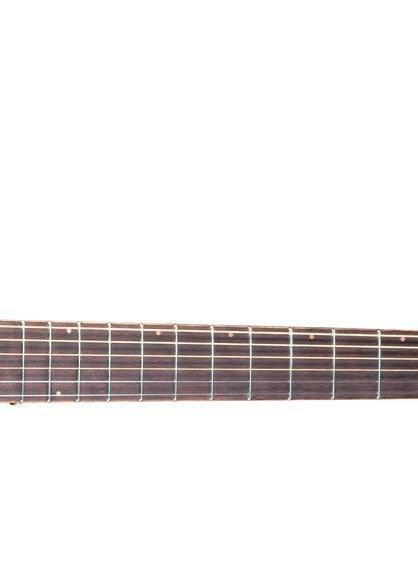
The back of the neck employs a matte finish – suddenly that matte headstock makes more design sense. And you don’t need to stress about CITES regulations should you need to travel internationally with this guitar, in a nice touch, a detailed list of the origin of all natural materials used to build this guitar is transparently available on the Breedlove website.
It provides each wood species’ common name, scientific name and country of origin, and notes that they use no clear-cut wood and either salvage dead trees or individually harvest to minimise the impact on the forest. The company recommends printing out this info and keeping it with your guitar should you encounter any huffy customs officials.
Should you need to plug in, a Fishman Presys I preamp is included, with simple but powerful controls for contour (altering the overall EQ curve) and phase (for zapping any feedback issues in an instant), as well as an accurate and easy-to-read digital tuner.
All Breedlove guitars use something they call the Breedlove Play Style System, a classification system which is a combination of body shape and tone wood that allows the player to narrow down exactly what they’re looking for in an instrument. The options are H (for heavier play and strong strumming), L (for light players, particularly fingerstyle players who require a lot of clear note separation), and V, for versatile play, which offers the most ‘all-purpose’ sound and feel, balanced between fingerstyle and strumming approaches. This guitar is a V style, so it should be able to handle whatever you throw at it from a playing perspective.
The first thing I noticed when picking up this guitar was the comfort of the neck. My acoustic style tends to involve a lot of chord shapes around the middle of the neck and lots of fiddly, intricate little embellishments, and on a lot of acoustic guitars that sort of stuff can really put a strain on the back of my fretting hand regardless of posture and how much I’ve warmed up. But it wasn’t an issue with the Rainforest S Concert. I was able to glide around the neck doing my weird thing without feeling impeded by the neck at all. The action felt great right out of the box, and I could
immediately sense the benefits of the V-Style design system: those aforementioned embellishments rang out clearly while playing fingerstyle, but when it was time to reach for a pick for some more aggressive chording down at the cowboy end of the neck, everything still sounded nicely balanced.
These qualities continue through to the amplified sound, although a system as basic as the Presys I is never going to capture all the complexities of an instrument like this, where different overtones and resonances all combine with the zip of the strings to provide a three-dimensional listening experience.
Putting the Rainforest S Concert Papillon CE through its paces, it was highly comforting to find that the pursuit of a sustainably sourced and manufactured guitar did not result in compromised sound quality. After all, the beautiful resonance and dimension is what draws us to play the acoustic guitar to begin with. This is a really beautiful-sounding, great-looking, smooth-playing guitar that covers all sorts of musical situations and feels like it’s crafted to last a lifetime.
BY PETER HODGSON







There have been guitars with built-in effects before, stretching way back. You could get guitars with built-in phasers and fuzzes in the ‘60s, and there have been all sorts of oddities since then. But a lot of these instruments have been pretty entry-level in quality, clearly cutting corners on the finer intricacies of guitar manufacture in order to get in below a price point – or coming in way too expensive like the ill-fated Gibson Firebird X. Mooer has clearly designed their GTRS guitars to hit the sweet-spot: a definitely-aboveentry-level guitar with hybrid digital and analog guts, interfacing with a mobile app and a wireless footswitch. It really looks like this guitar sets out to achieve many of the things that would have been cool about the Firebird X if that project was thought through a little more and didn’t wind up crushed under tractors by the previous Gibson management.
Let’s back up though and look at the guitar itself. This is a clearly Strat-influenced double-cutaway solid body electric guitar, and even if it didn’t have super-brainy guts it would be an impressive instrument thanks to its roasted Canadian hard maple neck. The neck is obviously where most of your focus goes when playing guitar, and it’s amazing how often an instrument is let down by this crucial link in the chain. Not here. Mooer has put a lot of work into designing a neck that feels great: it’s a little thicker than some, but not in a baseball-bat kind of way, and the satin finish gives you plenty of facility to zip up and down the neck. The edges of the fingerboard are nice and smooth, and the frets are well-finished. It’s not quite an Ernie Ball Music Manlevel neck, but it does seem to share a number of similarities with that company’s design choices, including the positioning of a truss rod adjustment wheel at the body end of the fretboard.
The body is made of American basswood, a common tonewood known for its even EQ distribution and suitability as a platform for effects, since it doesn’t typically present the sort of unfriendly frequency bumps that might cause weird mushy smears when they encounter modulation effects. The hardware is your basic Strat-style
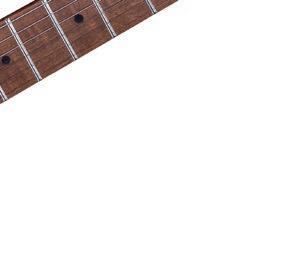
configuration, with six decent tuners, a fairly standard two-point fulcrum tremolo bridge with pressed saddles, and a five-way pickup selector (in this case employing a single master tone control along with the volume pot). The overall weight is a little heftier than the average solid body electric, but not at back-breaking vintage Les Paul levels.
The pickups are Mooer-designed, a pair of single coils in the bridge and neck positions, each of which is specifically voiced for its placement, plus an Alnico bridge humbucker under a chrome cover. Overall the GTRS S801 has the look of a hot-rodded, Fenderinspired boutique instrument like an LSL or a Suhr, until you note the oddly shaped pickguard and the lowest control knob, the ‘super knob’, which is your access point to the GTRS Intelligent Processor System.






The GTRS system gives you access to a whole bunch of effects that can then be saved for access by tapping the top of the super knob. We’re talking dozens of effects and amp simulations. You want overdrive? There are models of Mooer originals plus pedals by Ibanez, Klon, Fulltone, Marshall Suhr, BOSS, EHX, ProCo, and others. There are dynamic effects including auto-wash, compressor, and envelope filter. Modulations including flangers, phasers, tremolo, rotary, chorus, ring modulator, and vibrato. A bunch
of vintage and modern delays and reverbs. And then there are 51 amp models and 22 cabinets based on classics from Hiwatt, Marshall, Peavey, Blackstar, EVH, ENGL, Orange, Mesa Boogie, Two Rock, Diezel, Soldano, Jet City, Koch Fender, Dr. Z… this thing is loaded with amp options, although you can turn the amp sim off if you want to just run straight into a real amp while still using the guitar’s onboard effects. You can listen through headphones plugged directly into the guitar, you can plug into a mixing desk, audio interface or other FRFR device, or plug into an amp. Imagine rocking up to, say, a covers duo gig and not even needing to plug into a pedalboard, let alone an amp. Just straight into the PA system and off you go.
The GTRS App is your editing software which lets you dial in your tones and save them to the guitar, and it also speaks to the four-button wireless footswitch. Both the guitar’s robot brain and footswitch use rechargeable batteries, so as long as you’re all charged up before a show, you’ll be ready to rock.
There are far too many sounds to go into here, but suffice to say there’s a huge range of musicality contained within the extensive slate of overdrives, distortions, fuzzes, amps, modulations, and time-based effects, and the stock presets that the guitar ships with are perfectly voiced

to give you an idea at a glance for what you can expect. And that’s before you even start to dig into the options presented by the app. Some players might want to simply have a handful of effects at their disposal to send to a conventional amp: maybe an overdrive, a distortion, a wah-wah, and a flanger just waiting there on the super knob to be engaged as needed. But others will fully explore the vast world of options presented by a fully functional amp-and-effect system at your fingertips.
There’s something jarringly cool about being able to plug a guitar directly into an audio interface and hear sweet reverb and responsive amp tones coming directly out of the guitar itself. And the fact that it’s accomplished on an instrument with such a playable, comfortable, high-quality neck is more than icing on the cake: it’s a crucial ingredient in making this a serious instrument rather than a fun curio.
BY PETER HODGSON
We’ve discussed Meris before, with special focus on the LVX no less. Their rich history in not only product development, but forward-thinking designs from both an aesthetic and practical standpoint are difficult to beat. Meris was founded by three uniquely skilled professionals: engineer Terry Burton of Strymon and Line 6 fame, designer Jinna Kim who’s done work for the likes of Disney, Sony, Lexus, and Cisco, and finally Angelo Mazzocco, a DSP engineer who’s created unique instruments and DSP code for some of the biggest names in rock. These three unique areas of expertise, from product design and coding, to broader areas of multimedia design and finally, musician-focused-coding, feel like they crescendo in the Meris LVX.
The LVX features a staggering level of detail that would feel overwhelming if it weren’t for the player-focused layout and controls. At surface level, the Meris LVX is a delay pedal, but it’s unlike any delay you’ve played before.
Meris’ LVX is, ultimately, a modular delay pedal. What this means is, it has a heap of functions to customise a delay sound, and all of these are customisable themselves, with options far beyond just the order of your signal chain – which is a massively powerful tool in and of itself! Little functions like inserting EQs before or after different stages such as gain and modulation can have a massive effect on your
delay sound, which of course can be blended in and out as we see fit via the big mix knob. Front and centre on the LVX are the main controls: time, feedback, mod(ulation), and mix. All of these are fairly standard fare for a delay and will feel familiar to most players. Where the LVX falls into its own is in the four programmable switches which can be used to toggle on and off effects and parameters, recall presets, tap the tempo out, or jump into looper mode. In addition to this, there’s the C1, C2, and C3 controls, and their use varies depending how deep into editing you are. All of this surrounds the colour screen (which is also customisable) that displays the edit menus and current settings.
The LVX takes either guitar or line level signal, adjustable by a little pot on the back panel. The back panel is also home to stereo ¼” inputs and outputs, as well as expression pedal input and five-pin MIDI in and out. USB-C is used to connect the LVX to your computer for firmware updates, and it’s all powered by a standard 9V DC adapter.
In use, the LVX really shines and you can see why it’s taken years of work from Meris to complete. You’re able to quickly find some great-sounding presets, but what makes the LVX unique is the ability to really hone in on those sounds more than ever before. The LVX harnesses everything you didn’t realise you were missing, and allows us to create finished,
studio recording quality delays from our pedal board. While all based around three main types of delay, digital, bucket brigade delay (BBD), and tape, the hyper focused editing allows you to push or pull as much as you’d like out of each sound. The time, feedback, mod, and mix knobs had me dialling a familiar-sounding delay in moments, and the C1, C2, and C3 knobs really made it shine.
In the default setting, the C1 pot allows you to toggle through ‘structures’ such as multi-tap, poly (based on Meris’ Polymoon pedal). The multi-tap structure allows for less quantised-sounding delays, a little triplet flutter, or anything else your creative brain may be begging for. The poly mode creates a unique stereo delay, as does the multi-filter and reverse settings to name a few more options. A quick look through the LVX manual shows that while there are standard steps in the delay signal chain, the LVX also has a few empty blocks for your own settings, insertable at different stages. Customisable options include things like note division for each channel, cross-talk, feedback, gain, and modulation. While all this is well and good for goofing around at home or concocting fresh sounds, the LVX’s expression pedal input can control up to six parameters simultaneously and can be individually set to preset, so it’ll have you sorted to harness the full capability in a live setting as well.
It’s difficult to categorise the LVX. While it’s not just a pedal, it’s also not even just a delay pedal. It’s a multi effects unit with a focus on delay sounds, but with inserts available along the way, and familiar sounds to either replicate classic magnetic tape tones or to shape entirely new ping pong, slapbacks, and shimmers.
While the manual seems like a lot to take in, jumping in to the well-laid-out controls makes it all feel a bit clearer, with the classics like time, mix, and mod complemented by the function controls that vary depending on how deep into the wormhole that is the LVX menus you’re willing to go. Only a company like Meris, with its unique founders, could create a product like the LVX, a delay pedal power house that’s solving every delay issue you’ve ever had while allowing you to push your tone into new and uncharted territory.
 BY LEWIS NOKE EDWARDS
BY LEWIS NOKE EDWARDS
Amp modelling is an increasingly popular solution for live and studio use. Arguably, amp modellers sound no different than a cabinet with a mic on it anyway, and that’s usually all the audience will hear – so what’s the issue? The issue is that to produce an entertaining performance, guitarists need to feel ready to give it their all. Amp modellers are commonly used direct to front of house, so there’s no sound on stage besides what you’re being sent in the monitors. This detracts from the physical feeling of an amp behind you, pushing air as you give and take with the ebb and flow of your performance.
Amp modellers fix a lot of issues with cabling, effects, and heavy amps that guitarists and bass players have struggled with, and Red Sound aims to fix the only problem with modellers – by providing a full range monitor solution.

Red Sound’s Elis.8 Active Monitor is a speaker cabinet with a super flat response and 180W RMS of power. The Elis.8 is FRFR, meaning flat response, full range, allowing you to cleanly amplify whatever tone you’ve carefully crafted in your modeller, without the colour of standard guitar and bass cabinets.

In use, the Red Sound Elis.8 Active Monitor is easy to set up. It’s active, so requires power, and input signal is fed by stereo combo XLR/jacks for left and right signal. The Elis.8 features a master volume and power output for daisy-chaining cabinets together for true stereo use. The Elis.8 is the smallest cabinet in the Red Sound range and still packs a punch, and is available in a passive version if need be. Straight off the bat, the Elis.8 Active Monitor is loud. It can easily reach volumes that could be heard above the hardest hitting drummer in the most reverberant room and then some. The signal is clean, clear, and exactly as you’ve dialled in your modeller.
The Elis.8 doesn’t colour the tone at all, and allows you to safely tweak to your heart’s content without fear of a power amp or cabinet imparting their own tone across your sound. The cabinet itself is well-built and has an
angled design (25°) for use as a wedge, but can also stand up on its own if needed or preferred (or the amount of space on stage!). I found the Elis.8 produced a clear sound, and coupled with a cabinet emulator, really gives the feeling of a cabinet behind me, without the physical weight or sheer size of a 412 cabinet, let alone the oversized ones!
Sound is produced by a single 8” ceramic woofer and a 1” tweeter with a passive analogue crossover. The Elis.8 Active can produce 180W RMS, with maximum volume clocking in at 360W, giving you plenty of headroom before distortion. The cabinet is finished in a textured, scratchproof finish so it can withstand the rigours of the stage and the road. While the Elis.8 Active is close to 10kg, the passive version is a little less as it does away with the power amplifier inside the Active. The Elis.8 Active cabinet reproduces sound from 70Hz to 20kHz which is just about the extent of human hearing, let alone the frequencies that a guitar would fill. The inputs are balanced, and the output is left


channel only and uses a Speakon connector to send the left signal to another monitor. Finally, the Elis.8 features a limiter to stop you overloading the power amp, with a red LED indicator to let you know the limiter has kicked in at high volumes.
The Red Sound Elis.8 Active Monitor is bringing a familiar feeling back to amp modelling. There’s something about the sound of your cabinet pushing air into your back as you wail, and the resonance through the floor on big chords. Amp modellers are a unique way to solve just about every issue known to players, what with less cabling, easier effects changes and less upkeep, and that’s before we’ve discussed loading amps and cabinets into and out of venues (most of which seem to have a staircase somewhere).
The Elis.8 Active Monitor is a full range, flat response cabinet, meaning it’ll just amplify the tones you’ve put together, including any cabinet emulations you’ve carefully put together. While the
rest of the Red Sound range can offer more power, the Elis.8 Active is plenty loud enough for most situations, offering up 360W of power, which realistically you’ll never approach. The ceramic magnet on the 8” woofer is a staple of guitar cabinet speakers, but also provides a super clean transient response, so it won’t feel too Hi-Fi or equally muddy and slow. Red Sound aims to provide an extra solution to guitarists wanting to use modellers, and now that they’ve solved the feeling we’re missing, there’s no reason not to make the jump to digital.
BY LEWIS NOKE EDWARDSI remember seeing and reading about Patrick James Eggle in a very cool British publication in the late ‘90s. He had a range of guitars that showed (at least to me) some traditional stylings with a bit of his own flair. Being pre or early internet there wasn’t lots of information around so these odd glimpses in magazines was about all I could gather.
After some time it was clear to see that Eggle was a highly respected builder and it was then no surprise when I learned of his association with Faith Guitars a few years back.
While the guitars are hand-built in Indonesia, Eggle’s rigorous standards and practices leave no step of the construction process to chance. This even includes the final setup each guitar undergoes before leaving the factory to be shipped. More companies with reputations for excellent guitars are building some of their lines in Indonesia, but Faith guitars are workshopped, rather than rolled off production lines.
So what is going to separate this guitar from the rest of the market around a similar price point from the seemingly hundreds of well-made cheaper guitars on the market or boutique-scale offerings like Eggle’s own? Four things: design, woods, build, and marketing.

I’ve had the pleasure of reviewing a couple of Faith guitars for Mixdown in the past. The brand has a familiar calling card that trends over all its models; their greatest strength lies in superlative workmanship, avoiding gaudy additions and pretentiousness.
Hence, Faith Guitars has been a staple in the acoustic guitar industry for years, and the Faith Blood Moon Venus Cutaway Acoustic does nothing to tarnish this reputation. The guitar was awarded UK’s Best Acoustic Guitar in 2016 by the Music Industries Association, and I can see why. The Blood Moon Venus is lightweight and comfortable, while still being very well-built and hugely resonant. A Fishman Ink pickup completes the guitar, with an onboard tuner and EQ. Right out of the luxurious, fur-lined hard case, this guitar is a winner.
The quality of construction sings excellence at the highest level, and when combined with the range of gorgeous tones available from the Venus, you know you’ve got a winner. All this and much more awaits when the chrome locks on the case are snapped open, revealing the absolutely stunning guitar within.
The first thing I noticed was that the satin-finished neck differs from the glossy body and headstock and helps the player quickly change chords as glossy necks can get grabby. The guitar was well intonated out of the box, and the tuning was very stable thanks to the Grover Rotomatic tuners. The Blood Moon is beautiful to look at, right down to the mother of pearl ‘F’ at the twelfth fret. The Fishman Ink pickup is practical, classy, and out of the way.
The Blood Moon Venus is made entirely of Indonesian trembesi, and looks and feels elegant. The rich stain and glossy finish, coupled with mother of pearl and abalone inlays, rosette and binding makes for a classy guitar. The body is resonant in the most pleasing way – without being overbearing or boomy. The Macassan Fingered
ebony fingerboard sounds and feels good, adding to the consistent sound produced acoustically. Chords are rich and strumming away at it is easy, while the cutaway provides good access beyond the fifteenth fret.
The internal Fishman Ink pickup does a great job of reproducing the sound of the guitar and would be ideal for smaller gigs, recording, or using effects pedals without sounding spanky and produced like most other acoustic guitar pickups. The controls on the Fishman Ink are easy to tweak as well, with little handles on the pots for changing settings on the fly. It also features an on-board tuner, which isn’t as accurate as I’m used to, but it gets the job done (I don’t trust any tuner that tells me I’m perfectly in tune).
The backlit LED flickers to green from blue when in tune so it can be easily read on stage. The EQ (bass, middle, and treble) sounds great, producing a usable sound even when maxed out either way. The additional hard case is well made, fur-lined and lockable. It’ll keep this guitar at an even temperature when travelling and safe when knocked around.
Overall it’s a very comfortable guitar to play; however, while big chords sound full, fretted notes and more intricate playing begins to lose some definition. This may not be a dealbreaker for all, but you’d struggle to use this for a lot more than strumming and rhythm playing. In saying that, the Blood Moon Venus sounds great for rhythm. The guitar reacts really well dynamically, and sounds great whether playing big rich chords or plucking away at quiet chords and passages.
In a time when many luthiers at major guitar companies are satisfied to refine classics, it’s comforting to know some still believe guitar excellence is earned. Excellence is a concept that has been rendered meaningless by hyperbolic PR, though it’s one that Faith embodies in the traditional sense with their craftsman build. The Faith Venus Blood Moon is a worthy purchase as a recordquality acoustic or a head-turning campfire beast.
BY ERIC FOREMANThe phrase ‘tone quest’ is one that is occasionally uttered in guitar circles, sometimes sincerely, other times as a bit of a dig at the tendency for guitarists to get lost in the endless journey of manifesting the sonically impossible – almost akin to something out of Lord of The Rings
Alas, for many guitarists, there inevitably comes a time where one starts looking over the fence and seeing what is out there in the tonal department, after exhausting every available option in their current setup. This could mean anything from switching amps, to adding pedals, or in many cases, buying a new guitar all together – the sky’s the limit for this sort of thing.
In reality these are all pretty heavyhanded approaches – the ‘tone quest’ is far better undertaken as a gradual, evolutionary process of troubleshooting and integration rather than a drastic, clumsy overhaul, and this is precisely where aftermarket pickup manufacturers like Fishman come into the fold.
The brainchild of Larry Fishman, the brand has been at the forefront of pickup technology for over 40 years, ushering in a host of new technologies and refining some pre-existing ones, all with the goal of extracting every drop of tone from your existing setup.
In 2013, Fishman introduced their highly touted Fluence multi-voice pickup system – challenging the archetype that had existed for over 80 years. Needless to say it put the broader industry on notice, redefining what could be done in regards to transducer technology in the guitar space.
These new Fluence pickups cast off many of the pre-existing notions surrounding pickup design and its relation to tonal integrity. Featuring a revolutionary active ‘core’ construction, (that employs a 48-layer coil on a robust substrate), the Fluence concept is a forward thinking one that bears little resemblance to traditional wire-wound designs.
The resultant pickups circumvent a lot of the hum, noise, and frustrating inductance issues that have plagued traditional guitar pickups since as far back as the

‘40s when Les Paul was in his shed, bolting pickups onto railway sleepers.
It’s not hyperbole to say that the modern ‘Fluence’ approach to pickup design may be the cleanest, purest mode of transduction we have seen in the guitar space, the unimpeded path from A to B providing a pure, uncorrupted tone and pristine sound quality. The results are sonically impressive to say the least.
Another major attraction when it comes to Fishman is their close relationship with their signature artists and the interesting collaborations this can yield.
The new Fluence Signature Series Greg Koch Gristle-Tone P90 Pickup Set is a prime example of this, taking the much loved chunky twang of the hybrid picking wunderkind and combining it with the puritan vibes of other Fluence models in the same range, to come up with something truly unique and interesting.
At first listen, one obvious takeaway from the Greg Koch P90 set is how remarkably low the noise floor is, especially for P90s.
Going directly into the amp, with no pedals to impart any kind of artefact or extraneous noise of any kind, I actually had to instinctively double check that I hadn’t left my floor tuner on in some kind of guitarist phantom limb hallucination, the familiar hum of my questionably earthed, vintage Australian amp was nowhere to be heard.
Indeed, the audio engineer in me was delighted at the apparent minimal noise floor found on the Greg Koch Gristle-Tone P90s and this elite signal-to-noise ratio is no doubt one of its strong suits, but to think of the active Gristle-tone P90’s as all clean and puritanical would be doing it a great disservice. On the other hand, with this unnecessary noise now removed, what we are left with are all the desirable elements of the classic P90’s sound in pristine detail and hypercolour (and with considerably less EQ required).
When we think of P90s, we normally think of them being pushed into breakup territory, but one thing that definitely took
this reviewer by surprise was the sheer amount of tonal versatility on display with the Fluence Greg Koch Gristle-Tone P90 set.
With separate bridge and neck pickups, each with three voices to select from, there is a lot of tonal range to explore here, from bitey, overdriven P90 vibes right through to dulcet, bell-like fingerpicked tones and more. Fishman has really developed a pickup set that far exceeds any expectations when it comes to genre or application and this shows with the broadness on display here. Placed in the right guitar, you could really find something unique and special to work with here.
The neck has an under-wound tone that is similar in essence to a regular P90 – a chunky overwound tone with plenty of body –while the bridge has a vintage P90 setting, which comes across like the bastard child of an overwound P90 and a bright, jangly single coil taking to overdrive and distortion effects like a duck to water.
Indeed the level of versatility found on the settings, combined with the inherent lack of noise makes the Fishman Fluence Greg Koch P90 a dream for pedal lords or anyone with a suspect approach to gain staging.
“The sound I was going for was a neck pickup that did this buttery, glassy with girth tone, and the bridge pickup would do this honky girthsome thing,” says Koch himself about the new pickups, and this aforementioned girth is no doubt where the ‘Gristle’ in the name comes from.
It’s chunky, fleshy, and greasy: exactly what you are looking for in a P90.
If your tone quest evokes any of the above, then the new Fluence Signature Series Greg Koch GristleTone P90 pickup set could serve as the perfect upgrade to your existing rig, to send you on your merry way. Godspeed.
BY PABLO FRANCOISI don’t know about you but I love a pedal that doesn’t tell you what it’s for. Think about it: if you see a green overdrive pedal, a blue chorus, a purple flanger, you plug in to that pedal with certain expectations about the sound. It’s just built into the way we assimilate information about our gloriously noisy calling. But what’s a Hizumitas? Why are there Jackalopes on the graphic? What do controls labelled simply ‘V’, ‘S’, and ‘T’ even mean when neither the pedal itself nor the packaging tell you what the pedal actually does?!?
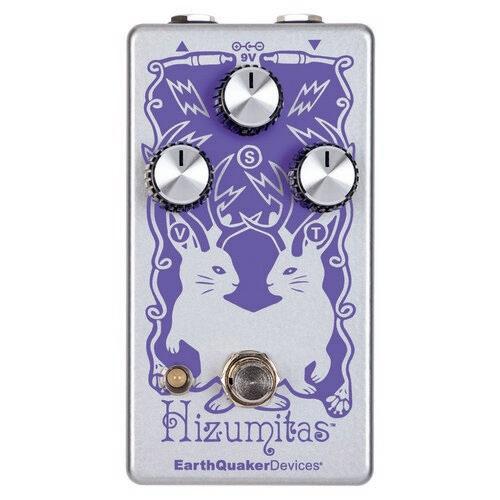
So, before even reading a single word about the EarthQuaker Devices Hizumitas, I turned every dial to 12 o’clock, plugged in, closed my eyes, and hit a note.
Ooooh, so that’s what this pedal does. It slams you across the room like Marty McFriggin Fly.
Let’s back up a bit. The Hizumitas was designed for Wata from the band Boris, and it actually has a bit of a pedigree. Its design is inspired by the sound of her Elk BM Sustainer, a Japanese version of the Big Muff. EarthQuaker designers got their paws on a whole bunch of such pedals to see what made them tick and what exactly Wata was responding to in those monstrously powerful overtones. Even that was not enough to nail the exact tonality,
response, and frequencies, so Wata sent her pedal halfway around the world to be recreated.
Now we have some context for those controls. ‘V’ is ‘Volume’ (okay, that one was pretty easy to figure out), which is at unity at around nine o’clock, so anything beyond that is a volume boost. Good to know if you want to slam the input of a clean tube amp for even more saturation, or just to do boring stuff like set your lead volume. ’S’ is the ‘Saturation’ control, and because of the idiosyncrasies of the circuit, is extremely sensitive to adjustment. The ’T’ control is ‘Tone’, but in this case we’re not talking about a basic treble roll-off; turn it clockwise to boost the bass frequencies, or counterclockwise to boost the treble frequencies.
Let’s get the other tech stuff out of the way before we talk more about the sound. The pedal uses a relay-based true bypass, meaning that while it is definitely true bypass, it does require power to pass signal. It uses a standard 9V DC power supply (no battery) and EarthQuaker recommends pedal-specific, transformerisolated wall-wart supplies or isolated-output supplies, warning against switching-type, daisy chain, or non-pedal-specific power supplies because of the extra noise they can introduce (it’s also not designed to run at higher voltages
so don’t even try, bucko, there’s enough gain in this thing already).
Okay, so back to the whole Marty McFly thing. This pedal sounds huge. No really, it’s almost overwhelming how big your guitar will sound through this little stomper. The treble-enhancing side of the ‘T’ control can do the whole Iommi treble-booster sound (or at least a passable enough version of it that you’ll find yourself playing ‘The Wizard’ for a solid half an hour), with chewy pick attack and plenty of bark. Turn it more towards the centre and you’ll be rewarded with a mid-boosted voicing that works great with bass (and my Bass VI), especially for those who play very bass-led music. Turning the ‘T’ control to the low-end side can make your instrument sound stupidly fat, and the circuit is robust enough that frankly it doesn’t give a crap if you hit it with an active or passive pickup, a six, seven, or eight-string, or a bass while you’re boosting that low end. It can handle it without a sweat. For this reason it’s also lots of fun to use as a recording preamp for distorted bass parts.
But those extremes, as fun as they are (and each could form the basis of a tone that could carry you through an entire set), the sound really comes alive at that ‘all on 12’ setting. We’re talking
aggressive saturation yet smooth sustain. We’re talking midrange that punches through the mix and adds an almost ethereal, threedimensional, ‘different frequencies bouncing back at you from all points in the room’ kind of aura. We’re talking the kind of lead sound that draws attention to itself and inspires you to play more adventurously.
The voicing of the fuzz itself is a great selling point for this pedal, but that unique tone control really caps it off, and there’s a world of variety between the pedal’s gain levels and the flexibility of the tone pot. And while it’s definitely going to be a hit with Boris fans, I’m kinda glad I didn’t know anything about this pedal’s background until after I’d played through it a bit, because while this might be Wata’s signature sound, it has the flexibility and uniqueness to be your signature sound too.
BY PETER HODGSONSome instruments are made with serious intentions for serious musicians, and some are made purely for fun. The Orba 2 from Artiphon is a fun little jamming and creative tool for musicians and non-musicians alike looking to unwind and create music. At its core, the Orba 2 is a synthesiser and sampler, with recording, looping, quantisation, and built-in scales, allowing players to quickly sketch ideas and play around with its features. While the Orba 2 is primarily aimed at a more casual market, with people looking for a quick and easy tool to make music in a more relaxed manner, the features of the Orba 2 lend itself to potentially finding a place in a studio.
The Orba 2 is about the size of a small portable speaker, adorned with nine touch-sensitive pads to play back sounds and to control the unit. The Orba is made up of four layers, with that being drums, bass, chords, and leads. These sounds can be sequenced and looped for up to 128 bars or around five minutes of recording, up significantly from the eight bars of its predecessor. From the face plate, you can also change the octave, record, and playback loops, as well as setting the BPM.
The way the Orba 2 helps the user quickly create sounds is very efficient and leaves little room for error. The eight pads allow for playing of each individual sound, where each pad is assigned to a note in a scale, which can be user-defined. This means no matter which note is played, it will always be in key, allowing you to quickly make melodies and chord progressions. This can then be recorded in the looper, which can be overdubbed to build the song gradually. The Orba 2 introduces quantisation to the looper, eliminating issues that may arise for inexperienced players or those who haven’t yet developed strong timing or dexterity. All this accumulates to an incredibly efficient and streamlined method of producing music. The immediacy lends itself to being a very satisfying instrument. Right out of the box, even before reading the manual, I was able to produce music, which only increased in quality and complexity as I uncovered the quirks of the Orba 2.
Sounds from the Orba can be further modulated with the inclusion of motion controls. Up to nine movements are recognised, including tilting, shaking, and spinning, which affects parameters such as velocity, filter cutoff, aftertouch, and more. Although all the motion controls and what they do isn’t immediately obvious, they are a good inclusion to modulate the sound without crowding the faceplate or being hidden behind menus.
The Orba 2 is paired with an accompanying free app for smart devices that allows for further customisation. From the app, we are able to select from a wide array of both factory and user-made presets, sounds, and songs, as well as save anything we create ourselves. Through the app is where we also change scales and access recording parameters. The Orba 2 also introduces the ability for sample playback, including both uploaded samples as well as samples recorded from the app. This means that any sound can be recorded and played back chromatically through the device’s internal sound engines. The ability to sample really opens the Orba 2 from a jamming toy to a potential portable music sketch
book. Another helpful update with the Orba 2 app is improvement of the record and playback buttons. Within the previous app, the record and play buttons for the looper are quite small and tucked away in the corner, making the button somewhat awkward to reach, especially when playing at the same time.
Another helpful inclusion is the free Orbasynth software for Mac and PC. This allows you to customise the on-board synthesiser and tweak parameters as if it were a traditional soft synth plugin. This opens up the Orba to true sound design without relying on presets and samples. Having the open endedness of a synthesiser massively expands the capability of what can be achieved, and practically opens the sonic palette to endless possibilities. With enough time and investment into the synth engine, the Orba 2 is capable of recreating any sounds available in your standard synthesiser.
The Orba 2 is also able to interface with your DAW of choice thanks to both audio and MIDI over Bluetooth and USB, allowing you to take your jams from the Orba and develop them further into full

songs. This also means you could sequence external gear with the Orba 2 using your DAW. Although there are limited notes available without having to change octaves though multiple buttons and is in no way a replacement for a MIDI keyboard, it is still a great way to quickly play something and would make for a great starting point for leads and chord progressions.
The Orba 2 is a fantastic little jamming tool that is appropriate for people of all levels of music comprehension. The streamlined system for quickly playing, recording, and looping sounds makes coming up with songs incredibly immediate and satisfying. The new features of the Orba 2, such as sample playback, extended recording time and quantisation, paired with the onboard synth engine and MIDI connectivity, really opens the device up to potentially being more than a fun toy, to the possibility of being a sketch pad or starting point for more serious production.
BY CAMBELL COURTNEYIt should come as no surprise that the new Avid Pro Tools 2022.9 update packs some serious punch – pitched at modern music and broadcast producer/engineer/ mixer and content creators, addressing (if not exceeding) some of the biggest user requests.
I’ve certainly been pretty happy with the last update I did of Pro Tools back in 2021-ish and having read about the numerous new updates, I was indeed eager to download and update to this latest version and explore its numerous offerings.
To start, I just wanted to touch base on the new Pro Tools Intro – the free version of Pro Tools for those entering or new to music production and the world of DAWs in general. This free version includes 36 core effects and instrument plugins and also becomes the default rollback for any subscription user that hasn’t updated their licence. A great way to get a basic understanding of Pro Tools’ workflow and a great introduction to making and recording music into the computer. Thumbs up.
Probably the most exciting and the most requested by users is Pro Tools’ ARA 2 Melodyne support –integrating Melodyne’s infamous pitch and time warping power directly into the Pro Tools editing window, immediately enhancing critical workflow and speeding up integral use of this world leading toolset.

Implementing this into my workflow was insanely easy and having the window pop up right there is actually amazing. The
ability to check link zoom and follow selection in the DAW enhances workflow massively, particularly when working on clips within a region on a selected track. Having the ability to quickly bypass, clear, or render audio directly from the dropdown menus on a track within Pro Tools is a dream. Absolutely no complaints here – huge improvement!
The next big one on the list is AUX I/O. Although a macOS only feature, this powerful update allows for streaming of audio between Pro Tools and other audio applications such as Zoom, Ableton Live, Dolby Atmos Production Suite, and more. As well as additional audio hardware other than the primary Playback Engine, simply adding any other Core Audio device as additional I/O to the current Playback Engine is so handy.
What’s wonderful is that these devices simply show up in the I/O setup page in Tools, and each additional interface can be assigned as an input or output of a track in your session. Simply assign where you want audio to go to and from and voila! You can even route your system audio into Tools, pretty darn nifty! Although this might be stating the obvious, AUX I/O isn’t immune to latency so for essential tasks it’s recommended to use the default Playback Engine. Given how the world of live streaming and content sharing across platforms has boomed over the last couple of years, this is a welcomed update.
SoundFlow Cloud Avid Edition – This incredible application is

now included with all Pro Tools Studio annual subscriptions, as well as with all Pro Tools Studio perpetual licences with an active support plan. SoundFlow was previously included with only the Pro Tools Flex annual subscriptions and Pro Tools Ultimate perpetual licences with an active support plan. This is a massive value add for users wanting to really dive into the world of macros, lightning fast workflow, and programming complex key commands with just a single key or shortcut. Absolutely essential for bouncing, particularly printing stems. Set it, literally walk away, and forget it.
This is one for those editing to picture – Timecode Overlay X/Y settings. A continuation to what Pro Tools introduced in their 2022.6 update with the ability to overlay timecode over video, the Overlay X/Y slider settings allow for fine tuning of the timecode overlay, based around the six initial presets. This is a well thought out addition to an already very valuable feature added in the previous update. I’d always found it a tad frustrating having to look at the timecode display counter elsewhere on the screen, no matter how close it had it to the video window; particularly when working frame by frame with Foley and lining up music cues to timecode. Being able to quickly adjust the position of the timecode overlay to better fit for a variety of different workflows or displays for optimal positioning is only a good thing.
Increased marker count – from 999 to 32,000. And why not, right? I can’t say I’ll ever personally
see the use for 32,000 markers in a session, but knowing that they are there is pretty cool.
Edit and MIDI Editor windows now include quantise toolbar controls. It’s nice to see that Pro Tools has further expanded convenience and functionality into the edit and MIDI editor windows when it comes to quantisation. Being a bug bear for many users of versions prior to the 2022.6 update, having quantisation functions hidden away in the event operations windows seemed like it was a bit of an afterthought and just a little inconvenient. Thankfully though, this has been rendered and improved upon dramatically, with both shortcuts and windows being added to aid in quantisation features being readily available in the edit and MIDI editor windows. While some might see this as a bit of a catch-up to other DAWs, I’ve no doubt many Pro Tools users will be absolutely delighted to see these changes to their workflow, particularly when in deep editing or working with MIDI.
I for one am walking away a happy Pro Tools user with this valuable update and makes me that little bit more excited to jump into the next session. As most will know and attest to, the recording, engineering, and mixing game is so much about workflow and this Pro Tools unquestionably aids in the continual struggle for workflow perfection, whatever that means for each and every one of us.
BY ANDY LLOYD-RUSSELL
Music making is becoming more and more mobile as tech begins to catch up with our expectations. Bus-powered interfaces have gone from budget products to little powerhouses of pro-level conversion on both the input and output. Gone are the days where you’d have to make do with sub-par quality outside of a more permanent setup, as products like the Apogee BOOM make headway for engineers and producers of all levels. The Apogee BOOM is a two in, two out audio interface that’s powered and connected via USB-C and small enough to be taken just about anywhere. There’s a single headphone output and two outputs intended for a stereo set of speakers. Clear metering covers a portion of the front of the unit, coupled together with a combo ¼”/XLR input and ¼” input, perfect for an instrument and vocal recording. The Apogee BOOM aims to be a mobile solution to recording and monitoring and does exactly that. From budding producers expanding their computer to an external soundcard for the first time, all the way through hardened professionals who’ve trusted Apogee since day one, the Apogee BOOM has something for you.
The BOOM extends Apogee’s range at the smaller end, being a bus-powered interface with two inputs and two outputs, all of which can be controlled via
Apogee’s Control 2 software, included with the BOOM. Also included on registration is Ableton Live Lite and Apogee’s Soft Limit plugin, the latter being a great way to add some saturation to your tracks as either a mix bus solution or on specific instruments. The BOOM’s mic preamps will hear everything from 20Hz up to 20kHz and feature a dynamic range of 122dB (A-weighted), while the outputs are almost a match at 117dB (A-weighted) of dynamic range and plenty of power for the headphone out at 15dBu/24mW at 30 ohms. The BOOM itself weighs less than a kilogram, so it won’t add much to your carry on while travelling. The mic pre is clean and uncoloured, while the Hi-Z input allows for crystal clear recording of a direct guitar or bass straight into the BOOM. The chassis itself is lightweight aluminium, so it can handle being knocked around in a case or bag, and the lack of superfluous knobs and switches prevent dust from making itself at home inside the circuitry.
Finally, the BOOM is lockable via a Kensington security slot.
I had the Apogee BOOM set up in moments, my Mac recognising it immediately and offering it as a Playback Engine in Pro Tools. Apogee’s Control 2 software also worked without a hitch, quickly recognising the BOOM and offering me controls to adjust gain, pad, phase, and phantom without touching the unit. The
single knob on the front of the unit can be depressed to switch between input gain for inputs one or two, or the master output. Once gain is set, Apogee’s FX feature also allows you to record through a virtual channel strip with super low latency and print that to your DAW.
Handy little indicator lights on the front panel of the BOOM let you know if FX is on or off. What’s immediately noticeable is the quality of sound that the BOOM gives and takes. It goes without saying that Apogee is one of the biggest names in the conversion biz, and are relied on by the likes of Bob Clearmountain. The response is clear and provides a good indicator of stereo width and depth, allowing me to listen as critically as I would anywhere else. This applies to both the speaker outputs and the headphone out, finding myself quickly trusting what I was hearing and making mix moves that translated well across systems – at least to my ears!
In hindsight, it really should come as no surprise that the Apogee BOOM is a total solution to recording and mixing on the move. The BOOM is simple, lightweight, and bus-powered, meaning you don’t need much more than the USB cable (included) to be up and running. The preamps are clear and don’t impart much colour, unless you want them cookin’ with the FX channel strip option that
prints your settings straight to your DAW. A single knob is handy for setting gain, but those more well adjusted to a mouse can access a higher level of control via the Control 2 app that allows you to access all your preamp and output settings in a well laid out piece of software.
Specs aside, the BOOM is simply a great piece of kit that would suit the working professional who needs a mobile solution to monitor cleanly for mixing away from home base, or for the musician who just needs a few ins and outs to record song ideas and arrangements to show their bandmates. It’s a great purchase at any level, as you’ll always have a need for a handy little converter, and of Apogee quality no less!
BY LEWIS NOKE EDWARDS

We all know the name Neumann. Berlin when it comes to studio microphones. It is a name, a label, and even a sound that has been with us for over 70 years and one that represents outstanding quality in audio capture and reproduction. Let’s face it, Neumann microphones have been found in every major recording studio around the world for decades and the Neumann sound continues to be a staple for hit album after hit album. That is to say, it is for those of us who actually remember buying albums, and not just listening to playlists.
So, it goes without saying that when Neumann put their name to a pair of studio monitors or reference headphones, it’s not just going to be another average product, but one that sets the standards for audio quality in a studio and home listening environment. With that in mind, I didn’t have to think twice when I was asked to give the Neumann NDH 30 headphones a test run. I just wanted to hear them, writing about it could come later.
So, right out of the box, you know you have a quality product in the NDH 30 headphones. The packaging itself oozes with class, if class was in fact an entity capable of oozing. The Germans certainly have a way of doing things and taking pride in their quality of workmanship is right up there. So, from what can only be described as a presentation box, you get the idea that you’re in for a treat with these headphones even before they’re plugged in. They’re folded to sit flat in the box and will happily return to that as a resting position when not in use. But they can also be folded up so the earpieces rest within each other to create a compact bundle for ease of transport or storage when you don’t want them taking up more space. But how they’re packaged and how they store away isn’t really important, it’s about how they perform.
So, the first impression on the feel is a big two thumbs up. They have a very solid build, with smooth moving components in the headband and swivel points. The ear pads themselves are a soft and inviting texture, so when they’re placed over your ears, you
don’t feel like they are applying excessive pressure at any point, and they settle into a nice level of comfort pretty much straight away. And, after the first hour of listening to a selection of music, they aren’t fatiguing in any way, nor do they overheat the ears like some overear headphones can do. In all, they are a very comfortable pair of cans to listen to music through for extended periods of time. The second hour of straight listening, as I am writing this, is no issue either. And for long writing, composing, editing, or mixing sessions, comfort is the key. I took them off at about the 90-minute mark, just to step out of the room for a few minutes but got right back in there when I sat down again.
Now, the sound. That is the most important element really. Being an open-backed headphone, these present as more forgiving to the listener, and not so for the room. They are not an ideal headphone for tracking as the spill from the cans will get picked up in the microphone. In that instance the NDH 20 closed back headphones are a more suitable solution. But, if you really want to hear the music the way it should sound, with space, and movement of air, the NDH 30 open back headphones set the reference
standard. Neumann has worked tirelessly to ensure these behave like a pair of the KH Line studio monitors, in a portable package. There is a very clearly sculpted frequency response that has been calibrated by the Neumann MA1 microphones to replicate a studio monitor setup. There is adequate low frequency response without booming out of control, even when running at higher SPLs. The mid-range response is unnervingly enjoyable, with no forced presence that is often found in studio monitor headphones. The NDH 30 isn’t trying to pick out problems and emphasise them, it’s allowing the music to be heard as it is delivered, with the air and presence that the mix contains. And when you shut your eyes and listen, you can just about see each instrument around the room, in its precise location, just from what you hear. This comes down to a beautiful spatial resolution that doesn’t just give you 100 per cent left signal in the left ear and 100 per cent right signal in the right ear. After all, when we hear monitors within the space of a room, we hear both monitors with both ears, in varying degrees, and the NDH 30s allow you to fully realise that sound.
Seriously, when all is said and done, I have not heard a better pair of studio reference monitors in many years. The Neumann NDH 30 are headphones that can be reliably used in mixing, editing, and critical listening situations when you need the responsiveness and spatial variance that studio monitors offer. And on a pure enjoyment level, for just listening to music and knowing you’re hearing everything in the best possible way, these are a delight.
I could happily go the rest of my days listening to music on no other set of headphones. You may well feel the same way once you’ve heard what the NDH 30s have to offer. So, do your mixes and your music collection a favour and go try a pair for yourself.
BY ROB GEEEvery once in a while, a plugin releases that unlocks an extra layer of control you didn’t know you needed until that very moment. Lunacy Audio’s offering CUBE, may well be that plugin for you, as an intuitive sampler which enables you to blend between eight audio samples by creating your own or using pre-made orbits through its virtual cube, with each sample occupying a corner.
The visualisation aspect makes this plugin stand out in a big way, it obscures but also enlightens how you are interacting with your samples. In a nutshell, CUBE allows you to add eight audio samples, give each of them their own ADSR, filter, saturation (colour), volume, stereo width, loop, arpeggiator (!), and tuning settings alongside the ability to reverse and pan them, put these sounds on one of eight corners of a cube and then set orbits to move a virtual orb throughout this cube which determines the volume of each respective corner. What a mouthful. That’s not all, you can add eight serial independent FX units and tweak global modulation settings to fine-tune your sound to perfection.
This might make you think that the user interface is cluttered and confusing but it’s actually the opposite. The plugin has five tabs which are labelled sounds, orbits, main, mod, and effects, all leading you to a section that is exactly that. Everything is well laid out and simple to navigate. The sounds page for example shows you the eight samples you can add plus settings for the selected one. When clicking on a corner of the cube displayed in this menu, additional functions are revealed which are more specific, whereas the global panel has more generalised settings.
While there are a lot of parameters to tweak, you definitely don’t need to utilise all of them to create something pleasing. I found that just adding samples, adjusting looping settings and the global ADSR and FX more than satisfied my ears as that allowed me to utilise the unique orbit function. There are plenty of pre-made orbits on offer here and each will twist and blend your samples differently, but the most fun I had was creating my own orbits and
making the orb ping around my screen faster than my computer could visualise.
The global setting ether is an interesting one in that it activates a secret hidden layer of the preset samples with increased intensity (less dynamics). This slider enables you to go from a more dynamic sound to a compressed one without touching a compressor, it’s cool and fun to play with just by judging the sound output.
Perhaps the best use of this plugin is to create ambient, evolving sounds that will hold interest for a large amount of time. You can set up eight audio samples and create an orbit to fade between them slowly with every combination creating a new texture, especially when you utilise the loop, ADSR, and arpeggiators for each channel.

CUBE comes packed with samples for you to use from the get go which are all quite usable but as someone who likes to make things my own, I added my own samples which really elevated my experience with the plugin. Drone samples, loops, and single shot drums all worked seamlessly and provided different results, especially when using them all at the same time.
If you’d prefer to use their sample library and presets (for which there are plenty) you can choose to purchase one of the many expansion packs to add ready-toplay presets and a range of audio samples as well.
Once I learned how this plugin worked I had the most fun fiddling
around with the randomise parameter buttons. Using them to generate new patches was an effortless and instant way to create a new sound palate with varying results. For instance, randomising the orbit of a patch can make something ethereal transform into a bouncy and frenzied sound and vice versa.
The modulation matrix within CUBE is dense and customisable like other modern synths. The modulation targets can be anything from global parameters like filters and FX settings to more precise and specific ones like one particular sample’s start position. There are four customisable LFOs which can be drawn in to create custom shapes or utilise classic sine, triangle, saw, and square waves to modulate parameters alongside the main macro knob accessible from the main page. With 16 modulation slots, you won’t run out of things to tweak anytime soon.
Taking cues from other digital synths and multi samplers, CUBE has eight built-in FX that run in serial from left to right. They can all be switched on and off with ease and allow you to wildly shape your sound. The FX are a filter, EQ, distortion, dynamics (compression), chorus, delay, reverb, and a limiter. These are all fully functioning, featuring a parametric EQ and multiple distortion modes, there is an endless amount of sounds to create with this plugin.
Now that you have a sound you like, a fantastic feature of the
plugin is eco mode, which allows the plugin to function minus the cube visualiser to save on precious CPU headroom.
The creative capabilities are almost endless in this plugin giving you control over almost too many parameters. Something I created which took no time at all sounded like a side chain effect on a drum beat. I set a quarter-bar loop on both a kick drum sample and a separate snare sample, created an orbit that turns on the snare every half bar and then made the orbit oscillate between the drum side of the cube and another side that contained synth samples, it’s a more powerful multisampler than I thought it could be.
All in all, Lunacy Audio’s CUBE plugin can transform simple source audio into dense, varied, and intricate sounds with relative ease. There are a wide array of settings to tweak which allows for specific fine tuning of sounds for the advanced plugin enthusiast which pairs extremely well with the fantastically laid out plugin design and unique orb functionality. The visualiser allows you to plainly and simply see how you’re interacting with the cube and I can’t wait to see what wacky and cool sounds I can conjure from this magical plugin.
BY SAM MCNIECEWith the ever-increasing army of podcast producers hungry for the highest calibre podcast microphone they can afford, Shure has delivered with the MV7. Taking inspiration from the immortal SM7B (famous for being used to capture vocals on Michael Jackson’s best-selling Thriller), this hybrid mic is designed for capturing pristine vocal recordings both inside the studio and at home.
Good design can inspire you, give your home setup a refreshing air of professionalism, or spark a conversation with a potential client. The SM7B influence is immediately apparent in the striking silhouette of the MV7.
An unapologetically modern take on the classic Shure mic, the MV7 bears more than a passing resemblance to its famous forebear, an elegant broadcastlike design and integrated shock mount being the most obvious aesthetic nods to the SM7B.
Beyond the superficial little brother aesthetics lies a decidedly Gen Z featureset specific to the requirements of current content creators and singers alike. Just in case the dual XLR/USB outputs didn’t give it away, look closely and you’ll see a built-in touch panel which gives you tactile control over gain and monitoring levels, subtly concealed within its retro design. Indeed the MV7 has been specifically designed as a multi-purpose, one-stop mic for the digital generation, and this is something it excels at.
For the musically inclined, the simple, convenient, no-frills XLR connection located at the base of the mic allows for easy connection to any audio interface, while its improved sensitivity and lack of transformer circuit circumvents the need for the whopping amounts of input gain previously required for similar large diaphragm dynamic mics of this type.
In terms of voicing, the MV7 is clearly tuned with vocal work in mind, either sung or spoken. With a presence bump at 3k and a gradual, undulating roll-off through the bass frequencies, it’s clearly designed for maximising diction and intelligibility. This rolloff also does a lot to offset some
of the dodgy mic technique and proximity issues employed by the average content creator on their quest for global supremacy.
Being the egalitarian and mobile medium they are means podcasts are often being produced in imperfect recording environments. The MV7 looks to minimise the impact of these less-than-ideal acoustic surrounds by way of a uniquely narrow pick-up pattern that places the voice at centrestage, while taking in minimal in the way of room or background reflections.
For those recording in non-ideal acoustic environments, Shure’s voice isolation technology helps keep the MV7 focused on the user’s voice, reducing the banes of external noise and interference being picked up and recorded by the microphone. This makes recording hassle-free with its great rear rejection and unidirectional pickup, which is especially advantageous when recording a podcast with multiple voices in the same room.

There’s also a 3.5mm headphone jack to give you immediate monitoring over your vocal performance which is an extremely handy addition and it must be said, is probably a guilty pleasure for some of the more studio-minded types using the MV7, but the convenience of which cannot be overstated. The high-quality and robust construction of the mic itself might run counter to this kind of port, but it’s a brave new world we live in.
USB connectivity and free software also allow for further fine-tuning of the sonic palette; including adjustment of the tone of the recording and setting the distance of the microphone from your voice, and it must be said that the Shure MOTIV ecosystem is one of the most user-friendly of anything in the broader microphone industry.
For those new to recording, the auto-level control is sure to be a popular feature given the importance of gain staging (I think we’ve all heard enough distortion from gamer’s speed runs to last us a lifetime). If you’re no stranger to FX chains, there’s a manual mode to adjust EQ, limiter, and compression settings.
Switching between the XLR and USB inputs is extremely simple and allows for the broadest possible range of applications. In XLR mode, you’ll lose the adjust controls but whichever interface/ DAW/signal chain you’re plugging this into will more than likely have these controls covered anyway.
In 2022, there’s no small overlap between podcast producers and musicians and I think this is who Shure had in mind with this hybrid aspect of the MV7. Being able to record a demo at home on the computer is great, but getting to bring it to life with preamps, EQs, and compressors certainly appeals to the creative in all of us.
While it doesn’t have the incredible SPL characteristics or expensive sheen of the SM7B, the MV7 has its own unique character which is more than apt for its intended market and serves as the perfect entree to the world of audio. As we all can probably appreciate, podcasting with entrylevel equipment is an inevitably short-lived affair, and for those in it for the long run, a studio-quality microphone and the option of multiple presenters is a must, thus
serving as a natural progression into SM7B territory.
For those making their first foray into the content game, the ShurePlus MOTIV app really opens up a refined set of tools to shape the sound the MV7 can capture –to get the most out of your voice in a limited recording environment.
In short, the MV7 serves as the perfect entry point into the world of podcast microphones and audio for content, without having to sell the family farm to get there. Equal parts inclusive and intuitive, it’s the perfect set and forget mic for anyone looking to hop between music and content without touching a thing.
BY PABLO FRANCOIS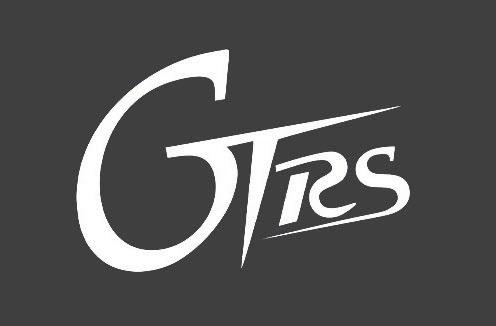



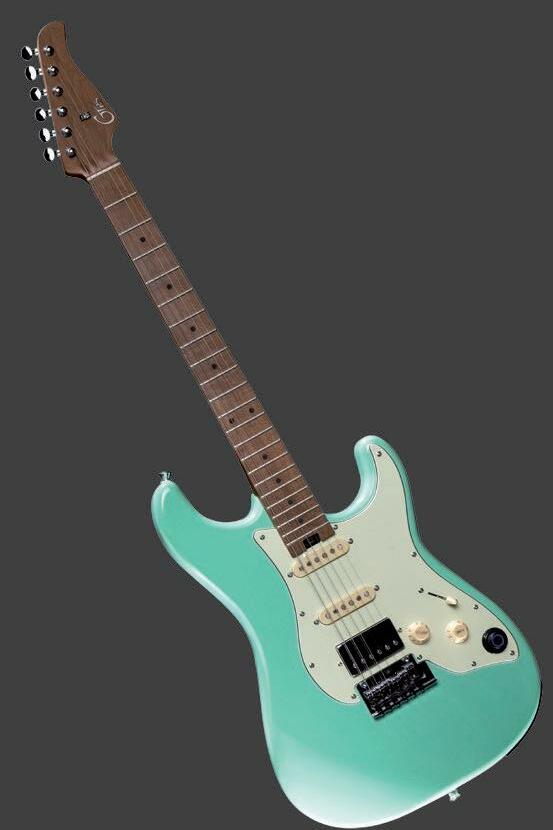


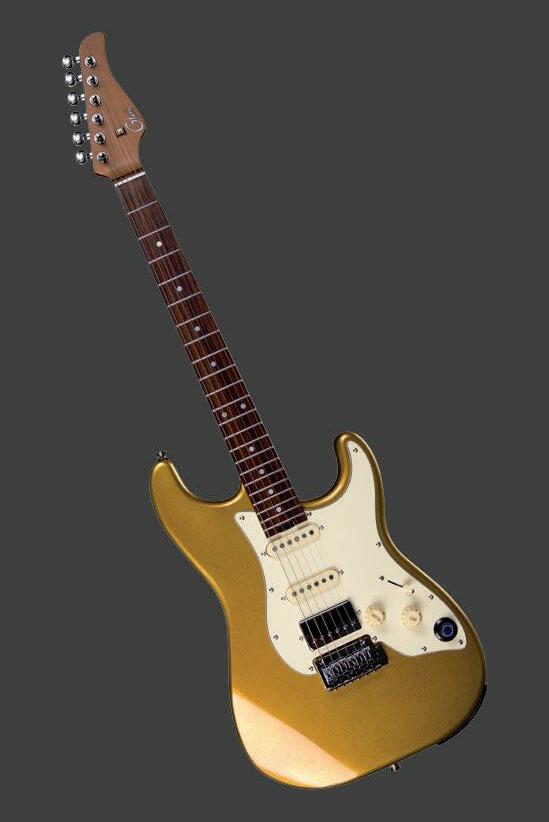



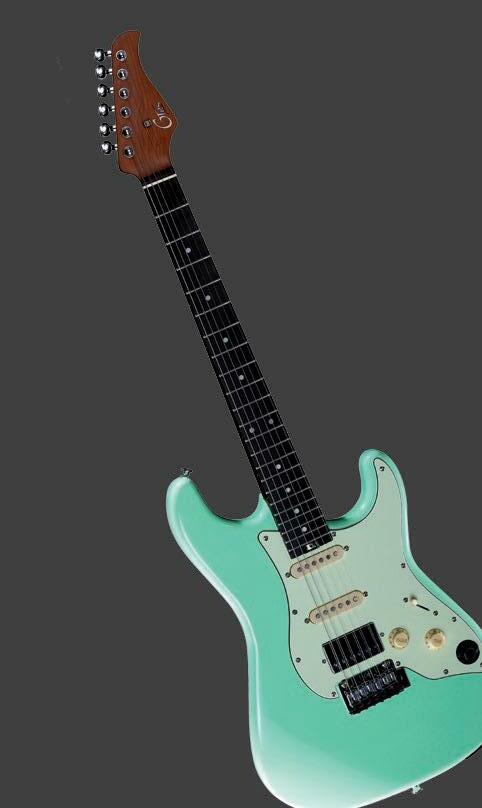




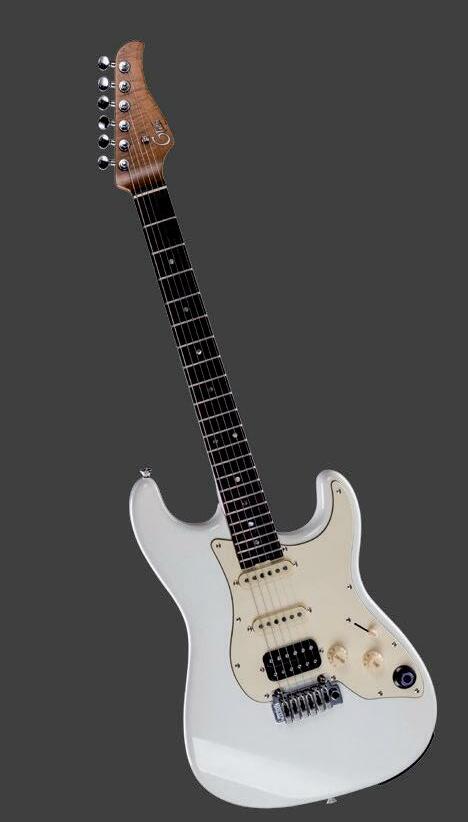







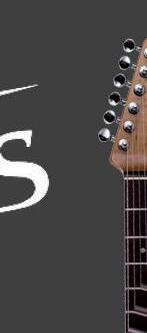





There are products that stand the test of time in the audio recording industry because they cater to the old guard, but then there are those that continue to grow and develop to offer new possibilities to an ever-growing market with ever-growing needs.
Of course, it is unlike a Japanese company to ignore technological advancements, and with that, we see Audio-Technica continuing to improve their offerings in the studio microphone world, offering up-to-date features and a price point that appeals to those starting out in recording, all the while, tipping the hat to classic design. With that, let me introduce you to the brand-new studio condenser microphone from Audio-Technica, the AT2020USB-X. This is the latest advancement in the 2020 range and one that is sure to allow a lot to users with ease, while still sounding great.
I can still remember when AudioTechnica launched the original AT2020 studio condenser microphone. At that time, it was a total game changer in the market and opened up a higher quality of home recording to a broader range of uses. Not only was it housed in a classic-looking casing, but it also offered a price not really seen for such a quality of audio capture, such is their strength.
So, it goes without saying that when a USB version of that same microphone was brought onto the market, it would again make waves with an even more accessible market. Suddenly the need to spend money on preamps and converters in order to use your AT2020 wasn’t an issue with direct connectivity to your computer. So, now with the release of the AT2020USB-X we see improvements to audio quality and refined features that define this as the one microphone to own if you just want a quality plug and play experience.
So, let’s have a look at this new offering. Fans of Audio-Technica microphones will be able to pick this as an AT2020 variant from about 50 paces. It has that look that we have all come to know over the years, housed in the black tubular shaped casing with black grill, but there are a
few differences that are easily noticeable on closer inspection. The base section where the cabling is connected does have a slightly changed design to it, which is no big deal really, but in the centre of the casing, below the grill and switches, there is a big round button that has never been seen on any AT2020 model before. So, it makes sense that we start talking about that right away. This mystery button is in fact a mute switch, and something that is a welcome addition to a USB microphone when you’re not running into a channel strip or console where such a feature could usually be found. This makes the AT2020USB-X not only a great recording microphone, but an excellent option for streaming, internet video, and podcasts as it enables you to mute audio at the microphone with the touch of a finger when needed. The capacitive button only required a touch, and not a depression, so it allows you to engage the mute without moving the microphone or creating any mechanical noise within the housing from a physical switch. That is a really neat feature and one that quickly and quietly engages and disengages the mute exactly when you need it, like a manual noise gate. The blue LED on the microphone is bright so you can see when it’s active at all times.
Monitoring is easy with the AT2020USB-X as a built-in headphone jack is included to allow you to directly monitor from the microphone itself and hear what you’re capturing, as well as listen to playback from your software at the same time. Naturally, there’s a mix control to allow you to blend the two signal sources for your liking, which is great for those who want to hear more of themselves!
And you’ll want to hear yourself too. This large diaphragm condenser microphone has a great, natural air to its sound. There is plenty of low frequency captured too, so even if you’re just using it as a desk microphone for recording YouTube videos or podcasts, there are instant results. You’ll hear an improvement over your computer and smartphone microphones with some muchneeded, and balanced, bottom end introduced to your voice. With sample rates up to 96kHz, it’s a very detailed sound that gets through the AD/DA converters and into your recording software. And this is all built into the microphone housing, powered by 5V USB connectivity. It shouldn’t be this easy to get a vocal recording this good, but that’s how this microphone has evolved over the years.
While this microphone can be used with Audio-Technica’s optional shock mount for studio recording applications, a desk mount is provided with the unit, given that a lot of users will be likely to record at a bench or table. It’s a swish design too, that fits in with the look of the microphone and makes for an overall appealing centrepiece to any home studio or streaming setup.

I was lucky enough to have an advance model made available before the release date and have been able to see just how it fits in a typical workspace. So, I’ve been having fun with the AT2020USB-X for about a week before you guys even get to hear about it. But that’s alright, it’s available as of now, so you can all rush out to your favourite music or audio specialist store and pick one up now. Then, let the recording or streaming fun begin.
BY ROB GEE
A particularly grizzled recording engineer once mused that ‘the bass guitar is, at its core, a fundamentally flawed instrument – an example of marketing and portability winning out over common sense’.
To him (as someone primarily concerned with dynamic consistency, pitch accuracy, and the like) the ideal bass guitar would have one string, be 12ft long and weigh in at about 50kg – at least then it would have half a chance of recording with the kind of tonal and dynamic predictability required for the optimised recording environment.
Indeed, the bass guitar has been the bane of many a tracking and mix engineer’s existence, for as long as recorded bass guitars have been a thing – and for good reason. It’s an instrument right at the top of the food chain in terms of importance, and yet through a combination of flawed design and human imperfection, is often one of the trickiest of all to get right.
In a bid to make life easier for all involved, the legends at Instant Audio have come up with QuickBass: an awesome, all-in-one bass guitar processing plugin that can rescue even the most perfunctory of bass guitar recordings (and with the ability to take already solid bass sounds and take them to the promised land –tonally speaking).
A collaborative effort between plugin manufacturers FireSonic and SounDevice Digital, Instant Audio are yet another member of highly touted, Prague-based software collective United Plugins: home to other excellent plugin manufacturers like MeldaProduction, and a name that has been building quite the reputation among studio boffins for delivering innovative plugins at some seriously attractive prices.
QuickBass is the second plugin from the Instant Audio camp, and follows on from their QuickAG plugin, which combined just about every treatment you would typically use on an acoustic guitar (or any other strummed acoustic string instrument for that matter) into an easy-to-use, instrumentspecific channel strip solution for the modern DAW. The new
QuickBass plugin takes this same concept and applies it to the instrument that perhaps needs it most.
It’s safe to say that this is a must-have, not just for anybody who has ever laboured to find that perfect bass sound, but for those who are working with bass guitar on a regular basis and are looking to save some valuable CPU/emotional labour, while also netting awesome, characterfilled bass sounds in a matter of seconds.
The QuickBass’ UI consists of a slick turquoise bass background with a whole host of knobs, switches, and meters, each belonging to different sections with their own different functions. The UI is resizable, which as any in-the-box engineer will tell you is an incredibly useful feature.
Two VU meters sit aside input and output knobs on the bottom of the UI, above which you can also find sections for EQ, compression, saturation, a doubler, and a dedicated sub-bass level control. Instant Audio has made the compressor as user-friendly as possible, electing to omit controls for attack and threshold and leaving a knob to switch between Vari-Mu, Opto, and FET compression emulations (or combinations of therein), as
well as a release control and a knob to control the amount of compression applied.
The saturation section offers a dry/ wet control and saturation amount control. Things get a bit more complex in the EQ section where QuickBass presents you with four options to get your EQ started: finger, slap, pick, and ‘millerize’, which cuts honky low-mid frequencies for tasteful slap solos.
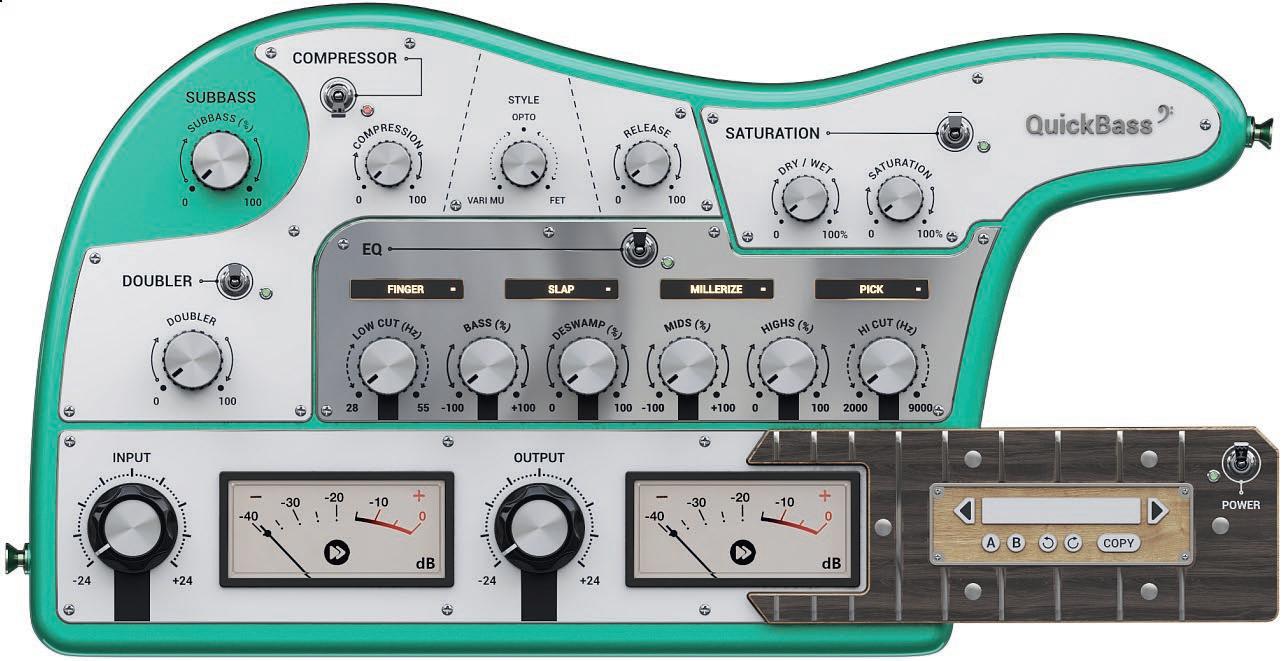
Along with your typical low and high cut, bass, mid, and high level controls, Instant Audio has added a ‘deswamp’ knob, which reduces the dreaded muddiness that you might not notice until you play your mix through a car stereo. Instant Audio has also included a variety of presets to get you started and give you a glimpse of what QuickBass is capable of, some of which have been crafted by former Porcupine Tree bassist Colin Edwin and Deafhaven alumni Nick Bassett.
Offering an all-in-one plugin to treat all manner of bass guitars is an ambitious and daunting prospect given the instrument’s natural voodoo and unpredictability, but QuickBass’ intuitive UI and powerful suite of treatments makes light work of one of the most critical parts of the mix process.
By offering a variety of tools to wrangle your bass recordings into something radio-worthy with just a few clicks of a mouse and some close attention to monitoring, this tool will leave you wondering whether you need to use anything else at all on your bass chain.
The QuickBass excels at everything from a slight polish to a complete sonic overhaul and does so in effortless style, with an easyto-follow interface and simple ‘set and forget’ workflow making it an awesome choice as the very first insert in your plugin chain and the answer to your low end foibles –no 12ft basses required.
BY LIAM MCSHANE
Play any sound in the world, create your own instruments, and make songs in seconds.

King Gizz has produced a whopping 20 albums in a little over a decade and has garnered a reputation for churning out albums prolifically, but they’ve still managed to supersede their notoriety as they prepare for an omnipresent October with three albums set for release (!) on top of a US tour.

While tracks were recorded in mostly improvised fashions, when it comes to gear, keeping it simple is the way he operates. “It’s because I like to play music,” he laughs.
“When people come to our studio they’re like, ‘Holy shit, you made the records on these?’ We use pretty cheap shit.”
Before Stu jetted off to Los Angeles, we were able to chat about all things gear on the new records.
Yamaha 1967 Flying Samurai
“It’s kind of weird in a lot of ways, it’s got a super thin neck, it badly needs new frets –they’re tiny, you can’t bend the strings too much, it’s super old, it’s got heaps of problems.
“But the pickups are pretty unique, they sound pretty cool, I just feel really at home on it to be honest. It’s usually the first guitar that I’ll pick up –and it’s got a whammy bar on it too which is kind of cool. I find it to be an inspiring guitar, you know.”

Devi Ever Torn’s Peaker
“My pedalboard is more or less pretty standard and it’s been pretty similar except for one or two things over the years. The Fuzz pedal is probably the most far out, it’s a Torn’s Peaker made by Devi Ever, the new ones you can buy are different, that’s my thing that I tell everyone, ‘You gotta play one of the old ones, they sound really different!’.”
Fender Hot Rod Deluxe
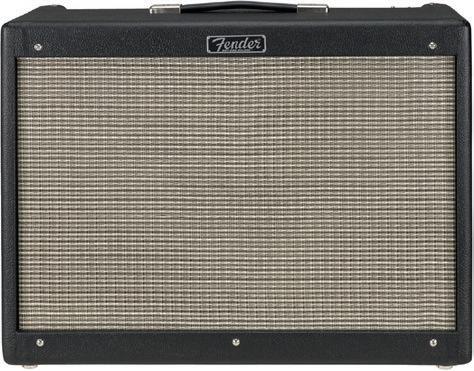
“I’ve got the also-very-stockstandard Fender Hot Rod Deluxes, I’ve always just made my sound with my guitar and

plugged it right in to one of them. If I don’t have any pedals and I just have a little bit of drive from the amp, it kind of just sounds like me!
“It’s ubiquitous, they’re just everywhere, it kind of goes against my weird stuff ethos!

But with the nature of touring, I just want something that I can replace easily, same goes with all my pedals except the fuzz one, you can just walk into any music store and buy a replacement if i have to. Which I do!”

“I know this isn’t conventional but I use them as a mono overhead on a drum kit, there’s heaps of that across King Gizz’s whole discography, that’s what I most like to use it for. It’s drum overheads or vocals. Two pretty different things but they work pretty well for both of them! They’re great for vocals with kind of super intimate, in
your ear, quiet singing kind of style. If I’m singing something a bit louder I’m probably less likely to use one, although if it’s already set up and it’s just sitting there, I’ll probably just use it!”
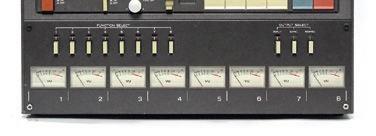

“I have a TASCAM 38, a half-inch, eight-track machine which I’ve had since about the microtonal Flying Banana days. It’s a sick little machine, it definitely has a lot of problems. Usually if I print stuff from that there’s always little glitches or weird sections where you lose a bit of top end, getting super wobbly, tape’s rolling or whatever. It’s a bit of a nightmare but you always get happy accidents and I leave a lot of that stuff in. It feels real (or reel?).”
BY ELI DUXSON“I’m kind of just drawn to things that are a bit cooked,” King Gizzard & The Lizard Wizard polymath Stu Mackenzie says while riding his bike on the way to his Melbourne studio.Yamaha 1967 Flying Samurai Devi Ever Torn’s Peaker Fender Hot Rod


























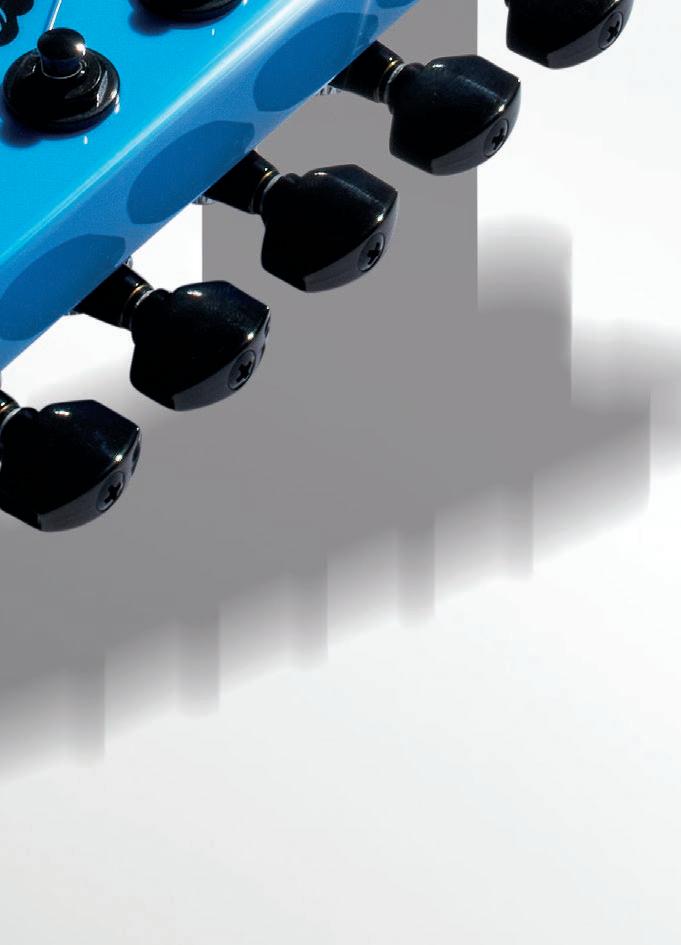




















When you’re in the studio and your trying to get your instrument to make the sound you’re hearing in your head but you can’t quite nail it with the gear you have on hand. That’s the experience that sparked Paul Reed Smith to design his own pedals.


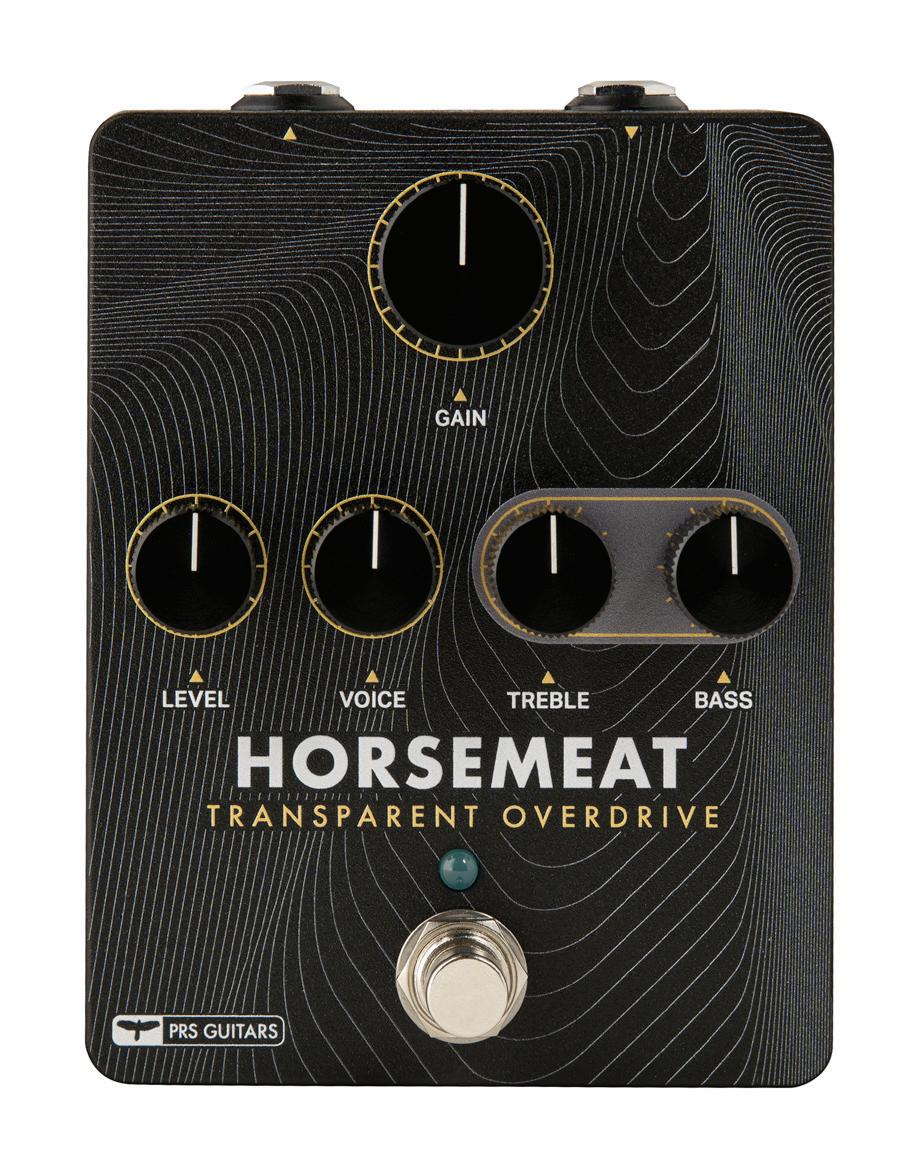
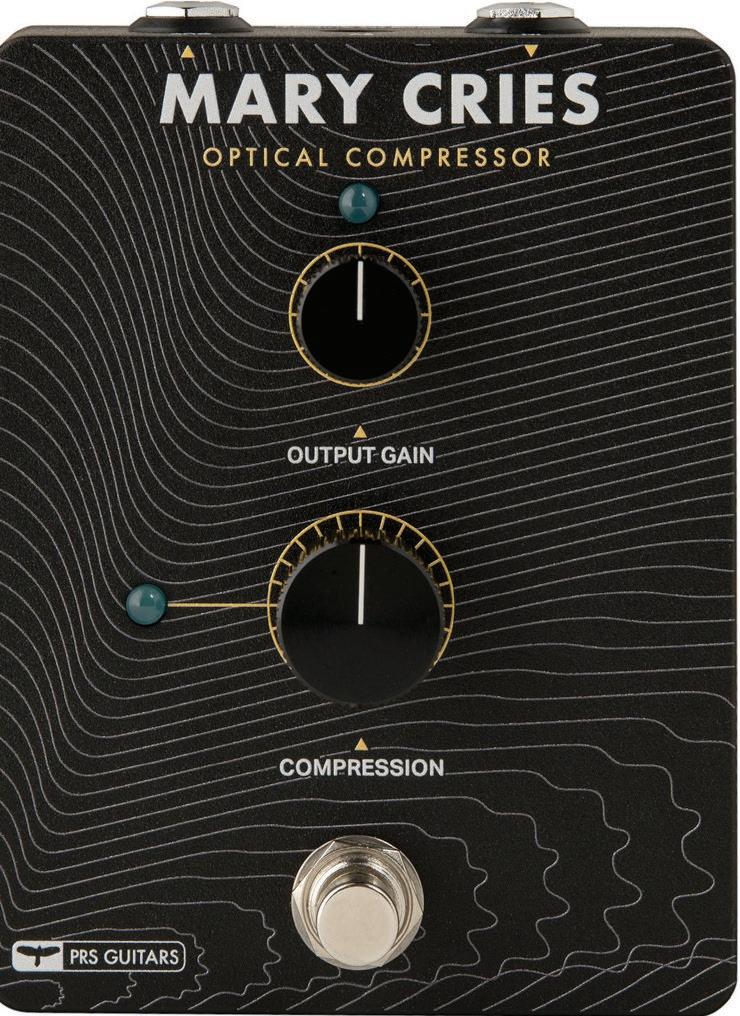

“We believe the pedals we’ve created are highly usable, great-sounding pieces of professional gear. A real magic pedal makes the board. We’re trying to design pedals that make the board and stay on it”.
Paul Reed Smith